

What Irons Do the Pros Use? Top 100 PGA Tour Player Guide (2023 update)
Written by Graeme Hay | Last Updated: 18/04/2024
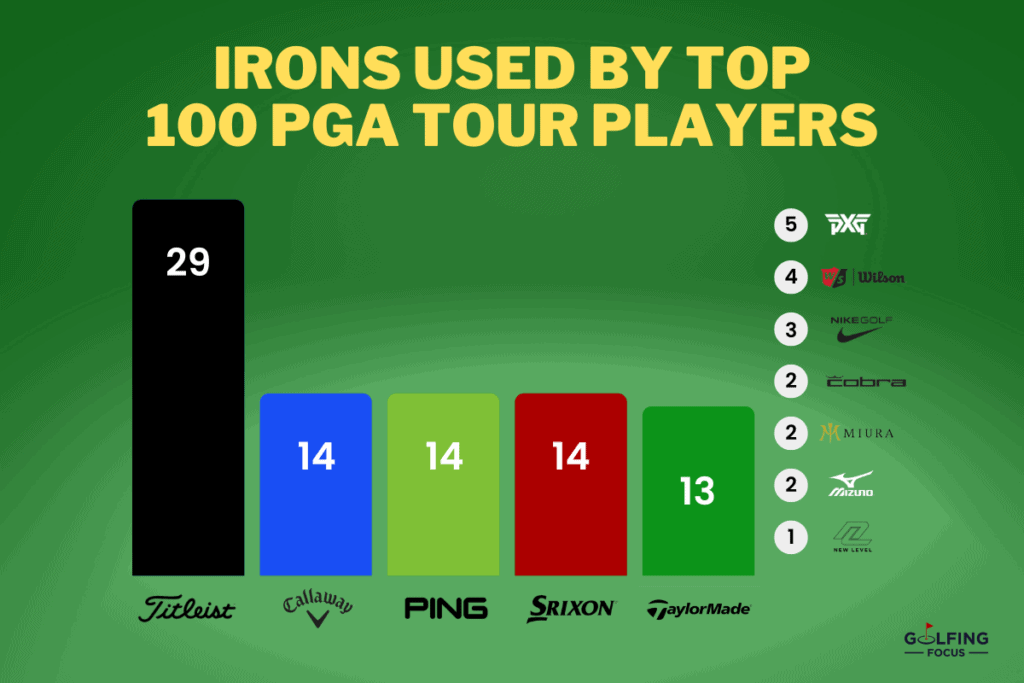
I’ve been planning to change my irons for a while now after a number of years but before going straight to a club fitter to test out all the latest and greatest models I thought it would be interesting to take a look at the iron setups of the best players on the PGA Tour to see what they are playing with.
So we took a look at all the irons the top 100 PGA Tour players are using, discovered the most used iron brand and most popular individual set of irons, found out how many of the pros are using cavity backs or blades before finally seeing what has changed since we last carried out this analysis a couple of years ago.
Titleist are the most played irons by the top 100 on the PGA Tour with 29 using them. Callaway, PING and Srixon irons are each used by 14 with TaylorMade played by 13. PXG irons are chosen by 5 with Wilson used by 4. Ignoring utility irons the most common set up played by 42% of this elite group is 4-iron to pitching wedge.
What is very clear after analyzing in detail the iron setups of the best players on the PGA Tour however is that there is now no such thing as a ‘standard’ set of irons.
Because the world’s best players are always aiming to find whatever advantage they can to help them gain an edge on their competitors they are constantly experimenting with those options to find the best combination that suits their individual game and the particular course they are playing at on any given week.
The days of every pro having a 3-iron to pitching wedge as ‘standard’ are certainly long gone and what is very apparent in the modern game is that the top pros on Tour are seemingly getting closer and closer to almost choosing each iron individually and not as a set.

Most Popular Irons Used on the PGA Tour. Titleist Win Again!
Analyzing the iron setups of the pros is not as straightforward a task as it used to be.
And the simple reason for that is that there are now so many more options for golfers when it comes to making up their set of irons and clubs in general.
Many of the top PGA Tour players are now carrying hybrids or 5-woods or 7-woods in preference to long irons while others are opting for utility/driving irons. So for a good number of pros today their ‘standard’ iron set is starting with a 5-iron or even a 6-iron in the case of Brian Harman!
Irrespective of this though we were still able to put together a complete breakdown of the irons used by the top 100 golfers on the PGA Tour to find out what are the most played irons among this elite group.
Titleist’s T100 irons are the most used irons by the top 100 PGA Tour pros with 20 playing them. Titleist’s 620 CB are the next most popular with 9 using them. Srixon’s ZX7 irons are chosen by 8 pros with Callaway’s Apex TCB model played by 7. PING’s iBlade’s and TaylorMade’s P7TW irons are those brands most used models.
When we did this analysis a couple of years ago Titleist was again the dominant iron brand and given now in 2023 their sets occupy the top two most popular iron slots among the top 100 ahead of all other irons suggests a lot of the top players on the PGA Tour consider them to be the best golf irons.
PGA Tour pros are of course very particular about the irons they play and are forever tinkering in an effort to find that little bit extra that will help them score lower.
We therefore found the top 100 PGA players using 12 different brands and 55 different models of irons from all the top manufacturers including Titleist, Callaway, TaylorMade, Srixon/Cleveland, and PING to newer and smaller golf brands such as PXG, Wilson, Mizuno, Cobra, and Miura.
Some of the top 100 we also found unwilling to give up irons made by Nike even though they pulled out of the irons market and stopped making golf clubs a few years back.
The top pros are very particular when it comes to their irons but for now it seems there is a bit of consensus among them that Titleist irons are a bit better than the rest.
[Note – Just so you know, and we are upfront as an affiliate program participant, Golfing Focus, at no cost to you, earns from qualifying purchases made through links on this page.]
Do Any Pros Use Cavity Back Irons? More and More
Because the best pros in the world are so good many amateurs often assume that the vast majority must use blade irons.
For as long as I can remember blade irons were often seen as a right of passage for better players and once a golfer had reached a certain standard they would graduate from cavity back irons to blades.
Looking in detail at the iron set ups of the top 100 players on the PGA Tour it is clear however that such views are a long way from reality.
65 of the top 100 PGA Tour pros use cavity backs and that number rises to 88 when taking into account the players who use at least one cavity back iron in their mixed set. Just 12 of the top 100 only use blades with 35 in total using one blade or more in their set. None of this elite group uses a blade lower than a 4-iron.
Analysing these numbers therefore it is clear that the majority of even the best players in the world choose the extra forgiveness and distance which is afforded to golfers using cavity back irons.
And compared to the numbers we found the last time we did this analysis 2 years ago even fewer pros are using blades with the number of players only playing blades dropping from 20 to 12 over that period.
“I joke around, ‘I’m not good enough to play the blades,’ but in reality, I think we’re just being smarter. I think we’re just like, ‘Oh, we can actually hit every shot that a blade can hit.’ But that chance that we mishit them – which we’re going to mishit a few shots in a round, even in a great round, the idea that it does carry that bunker and you make birdie on a hole where someone has to get up-and-down for par – I mean, it could be the difference in a tournament.” Jordan Speith, 3-time major champion
In addition when it comes to the blades being used by the top pros today modern iron technology means that these irons are a far cry from the ‘blades’ of years past which would look no thicker than a knife and give your hands a ‘sting’ on a cold day when not hit correctly out of the middle of the face.
Huge advancements in golf tech have meant that many of today’s ‘blade’ irons are more forgiving and closer to a cavity back iron than they used to be with the result that the distinction between the two club types is no longer as clear as it once was.
By putting more metal behind the hitting zone golf club designers are now creating ‘blades’ which have picked up the nickname of ‘muscle back’ irons.
So when you hear people talking about ‘blades’ nowadays it is likely that they are talking about ‘muscle back’ irons which are a bit away from the thin pieces of metal that were called ‘blades’ back in the day.
That is not to say that there are not still some very traditional blades around today being used by some of the best iron players on Tour – Taylor Made’s P7TW’s being played by Tiger Woods and Scottie Scheffler are a great example.
It is just that they are not used by a lot of players and when it comes to the longest irons in particular not one of the top 100 pros on Tour today is prepared to use blades.
World No.1 Scottie Scheffler for example may use very unforgiving P7TW blade irons for the main part of his set from 5-iron to pitching wedge but when it comes to his 3-iron and 4-iron he is more than happy to go with the much greater forgiveness offered by Srixon’s Z U85 cavity backed driving iron!
And he’s not doing too badly as a result!
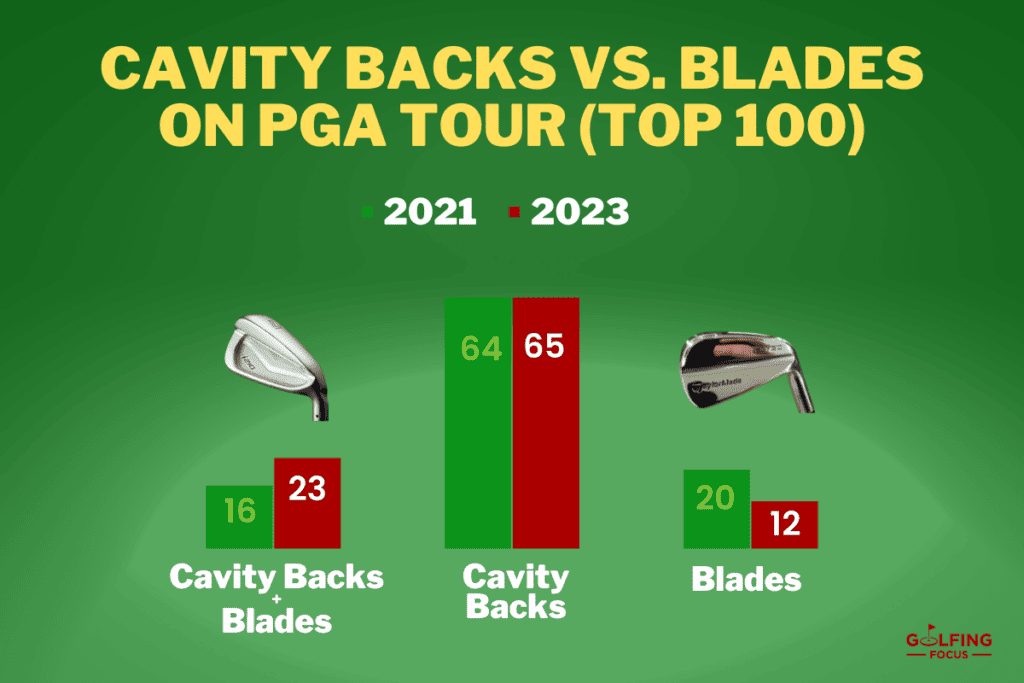
Combo Iron Sets Are Increasingly Popular on the PGA Tour
Our 2023 analysis of which pros are using cavity backs and which are using blades again also threw up a clear trend amongst the top 100 on the PGA Tour.
And that is the ‘mixed set’ of irons that many are now choosing to use.
Long gone are the days when the pros would have a consistent iron set from a 2 or 3-iron all the way through to a pitching wedge and today it seems clear that the best players in the world are looking at almost every individual iron to see if there is a better alternative.
We found 42 of the top 100 PGA Tour pros (up from 27 a couple of years ago!) are opting for a ‘mixed set’ of irons where they use more than one iron model and indeed some of them are actually using 3 separate models of irons.
Cameron Young for example uses a cavity back Titleist T200 4-iron and 620 CB 5-iron before choosing 620 MB blade irons from 6-iron through to 9-iron.
2020 USPGA and 2021 British Open Champion Collin Morikawa meanwhile uses a Taylor Made P770 4-iron but then switches to TaylorMade P7MC irons for his 5 and 6-irons before opting for the P730’s from his 7-iron to pitching wedge.
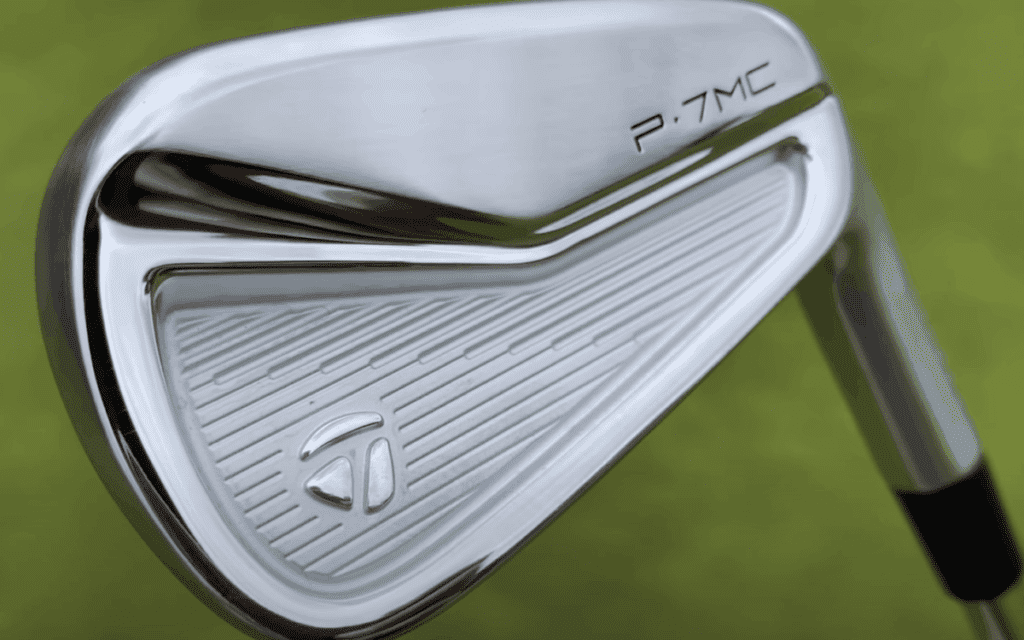
This trend of opting for more forgiving cavity or ‘hollow head’ irons for longer irons before choosing blades for shorter irons seems to be a clear one in the pro ranks and as such we can again see that the question about which irons the pros use is not as clear cut as it once was.
Indeed pros including Tony Finau, Maverick McNealy, Daniel Berger, and Brooks Koepka even mix the brands of irons they use in their combo sets.
[Editor’s note – ‘hollow’ head/body irons have an ‘internal cavity’ to remove inefficient weight and therefore increase forgiveness without the need to make the club head the size of a large cavity back .]
When you add ‘driving’ or ‘utility’ irons into the picture also the idea of the ‘mixed/combo’ set becomes even more evident as in addition to the 42 pros we noted who have an identifiable mixed set amongst their standard irons a further 22 players, add a 2, 3, 4 or even 5 utility iron to their bag.
So if we consider driving irons as ‘standard’ irons we can see close to two-thirds of the top 100 players on the PGA Tour opt for a ‘mixed set’ of irons.
We put utility irons in a comparative bucket with hybrids and high-numbered fairway woods – and you can see what individual driving irons the top 100 are using here – but what is also fascinating to see among the best players on tour is the multiple different combinations of numbers of irons that they carry in their bag.
While 10% of the top 100 on Tour stick with the traditional 3-iron to pitching wedge iron setup, including Tony Finau and Billy Horschel and Brooks Koepka, there are two more popular setups within this elite group.
42% of the best 100 on the PGA Tour prefer to start their iron set with a 4-iron and carry irons all the way through to a pitching wedge while 28% choose instead to use only a 4-iron through to 9-iron before switching to specialist wedges.
These percentages are again up on a couple of years ago, when we found 29% chose 4-iron to pitching wedge and 22% played 4-iron to 9-iron, so it seems an increasing number of the best pros on the PGA Tour are settling on one of these two iron set ups.
The chart below shows the full range of iron set ups currently being used by the top 100 which interestingly also include a few anomalies.
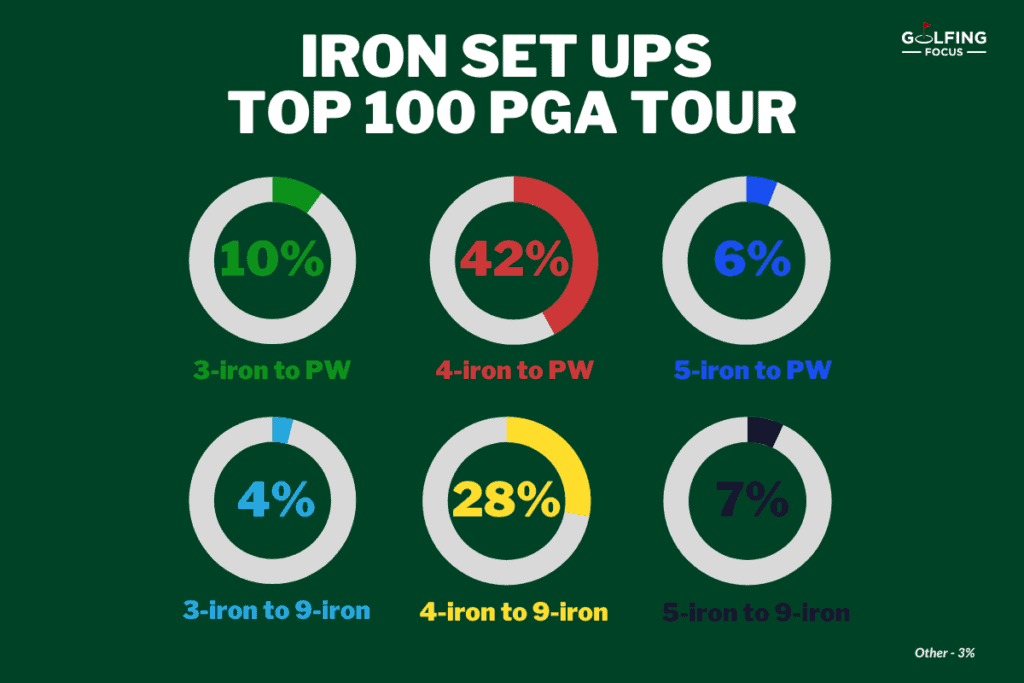
Brian Harman for example doesn’t start his traditional iron set until a 6-iron choosing a 4 and 5-iron Titleist U-500 driving iron while Lucas Herbert doesn’t use a 5-iron at all playing with a 4-iron and then a 6-iron to pitching wedge.
Hudson Swafford meanwhile has two different 5-irons in his bag – one Titleist T200 and one Titleist 620 CB.
Taking all this into account one thing seems crystal clear therefore when it looking at the iron set ups of the top 100 players on the PGA Tour.
There is no longer such a thing as a ‘standard’ set of irons.
Breakdown of Irons Used on the PGA Tour
When looking at your clubs it is always natural to wonder what the best pros in the world are using by comparison.
Discussions about which tour players are using the latest PING or Callaway or Mizuno or PXG irons for example are common throughout the golfing world and knowing some pros are using the same Titleist T200 or Srixon ZX7 or TaylorMade P770 irons as you is a good feeling.
So to satisfy that curiosity we’ve listed below the complete breakdown of all the irons being used by the top 100 PGA Tour players, including golfers who only use one individual iron of a particular model.
Before you go …
Ever wondered how far the pros hit their irons compared to amateurs and how your own iron distances stack up against other regular players?
Read our next article to find out how far you should hit your irons according to your handicap, age, and swingspeed!
How Far Should I Hit My Irons? By Handicap, Age & Swingspeed
Other top articles related to this topic:
- What Clubs Do Pro Golfers Use? Top 100 PGA Tour Player Guide
- What Driver is Most Used On the PGA Tour? Top 100 Player Analysis
- The Fairway Woods Used by the Top 100 PGA Tour Pros
- What Hybrid Golf Clubs Do the Top 100 PGA Tour Pros Use?
- What Driving Irons Do the Pros Use on the PGA Tour?
- What Wedges Do the Pros Use? Top 100 PGA Tour Player Analysis
- What Putters Do the Pros Use? Top 100 PGA Tour Player Guide
- What Golf Balls Do the Pros Use? Top 100 PGA Tour Players Breakdown
- What Golf Grips Do the Pros Use? Top 100 PGA Tour Player Guide
- What Shafts Do Pros Use? Top 100 PGA Tour Player Breakdown
- Do Pros Use Regular or Stiff Shafts? They’re Stronger Than That!
- Do Pros Use Graphite or Steel Shafts? It Depends Which Club
- Do Golf Pros Wear Metal Spikes? But They are Banned!
- Most Popular Driver on LPGA Tour? Top 50 Player Guide
- What Irons Do LPGA Players Use? Top 50 Pros Analysis
- What Golf Balls Do LPGA Players Use? Top 50 Player Breakdown
- What Drives the Senior Tour Pros? Most Popular Driver on Champions Tour
- From Tee to Green: Analyzing What Golf Balls Champions Tour Pros Use
- How Do Pros Hit the Ball So Far? It’s Not About the Equipment!
Leave a Reply Cancel reply
Your email address will not be published. Required fields are marked *
Save my name, email, and website in this browser for the next time I comment.
RECENT ARTICLES

What Golf Balls Do LPGA Players Use? They’re Not Very Lady Like! (2024 update)

Behind Every Stroke: The Most Popular Putter on Champions Tour (2024)

Champions Hybrid Heroes. Most Used Hybrids by Champions Tour Pros (2024)

The Go-To Fairway Woods of Senior Tour Champions (2024)

Flexible Friends: Uncovering the Shafts Champions Tour Players Use (2024)
LEGAL INFORMATION
This site is owned and operated by Golfing Focus Limited, a private limited company whose registered office is in London, UK. Golfing Focus Limited is a participant in the Amazon Services LLC Associates Program, an affiliate advertising program designed to provide a means for sites to earn advertising fees (at no cost to you) by linking to Amazon.com. Golfing Focus Limited also participates in other affiliate programs with the eBay Partner Network, FlexOffers, CJ.com, Svorn and other sites and is compensated for referring traffic and business to these companies (again at no cost to you).
Our Socials

Do Pros Use Cavity Back Irons?
By: Jon Webber
Updated: December 10, 2023
Read All Comments
Back in the day, most golfers played a blade-style iron because that’s all there really was. They’ve changed a lot over the years and in this post, I’m going to be talking about whether or not pros use cavity back irons and if so, who actually uses them.
According to Titleist , 70% of tour players use cavity backs while 30% use blades. Cavity back irons provide increased forgiveness while blades offer more control and a better feel. This is why a lot of tour players have both cavity backs and blade irons in their bags.
These numbers are always going to be changing but the main thing to note is that most golfers on tour do prefer a cavity back. Jim Furyk says he’s much more accurate with them and can hit them straighter.
I think that’s probably the main reason most guys would use them and why the majority of weekend golfers should as well. Blades are easier to work the ball around in my experience and some people prefer the feel as well. You can see the differences between the two styles of clubs below:

It probably just all depends on your personal preference and what you grew up with. Tiger grew up with a blade-style iron so that’s what he’s used to. Most of the newer guys all started with cavity backs so that’s what they’ve stuck to.
- Best Irons For Beginners & High Handicappers
- Best Irons For Mid Handicappers
What Are Cavity Back Irons?

Cavity back irons are designed to be more forgiving compared to blades and have more of their weight on the perimeter. They generally launch the ball higher, straighter, and have a much bigger sweet spot compared to a blade.
Blade or muscle-back irons are pretty much a big chunk of steel. In order to make the club more forgiving they’ll remove part of the back to make a cavity (or hollow).
And as you probably guessed, that’s why they’re called cavity backs.
Cavity backs have been around for 50 years or something like that and were brought into the spotlight by Ping. They seemed to be the only company making them for a while but they didn’t really catch on until years later.
These irons are sometimes called “game improvement irons” because of how forgiving they are. If you’re a beginner or high handicap golfer then you should probably go with these.
They aren’t all created equal though and some are a lot more forgiving than others.
Why Are Cavity Back Irons Easier To Hit?
Cavity back irons are easier to hit and are more forgiving because the weight is removed from directly behind the clubface. More of the weight is around the perimeter and that helps with shot dispersion on mishits. It’s not going to fix your bad swing but it can ease the pain.
When they remove the weight they’re able to make a bigger sweet spot. That’ll help for forgiveness, higher launches, and more distance for a lot of average players.
You can see my favorite irons at the bottom of this page. Some of these irons are suited more for beginners while some are designed for better players. It’s important to pick the right one for your game, and the article below will talk about that.
If you have a hook or a slice with your irons you’ll still have that with cavity backs. You’ll probably see a slightly straighter shot though and you’ll definitely get more distance on mishits.
What Are Blades?
Blades are the more traditional-looking iron that is slimmer and more compact than cavity backs. You can see an example of that in the image above.
The top iron (cavity back) has a thicker base and also has some of the weight removed in certain spots. The bottom iron (blade) almost looks like a single piece of metal.
Blades are definitely harder to hit consistently compared to cavity backs, and that’s the main reason they aren’t as popular. I used to play them actually, and even though I liked them, I got a lot more distance when I switched.
Why Are Blades Better Than Cavity Backs?
Some people do prefer blade-style irons and I was one of them for a while there. I’m not a fan of the huge cavity back irons that are out there and find them too big and bulky. They give no feedback and are pretty tough to control.
I used a muscle back style iron for a while but really started to like some of the newer forged irons that are out. They aren’t as big as some of the game improvement irons but they still have a really solid feel to them.
Blade irons are normally easier to control compared to cavity backs (in my experience anyway). Control means being able to draw or fade the ball and control the trajectory. That’s one of the big differences I’ve noticed.
Another big difference is the feel at impact. I think blade-style irons feel much better at impact compared to some cavities. It didn’t happen all the time, but when you hit the sweet spot, it felt unreal.
You’ll get a lot more feedback on mishits and you can use that to improve your game. Most people should just stick with a cavity back though.
Which Pros Don’t Use Cavity Backs?
Pros do a lot of testing so they often switch up the clubs they’re using. Some also use a mix of cavity backs and blades in their set. A number of them use cavity backs for their longer irons since they’re more forgiving and hit the ball longer. They’ll then use blades for their shorter irons because of the increased control.
The list can change over time but the important thing to know is that most players use cavity backs. It’d be easier to show the players who don’t use cavity backs so here they are:
- Tiger Woods.
- Phil Mickelson.
- Adam Scott.
- Rory McIlroy.
- Justin Thomas (4 iron cavity back).
- Justin Rose.
- Ricky Fowler.
I’m sure there are more but these are the main guys. The clubs they use could change in the future but at the time of writing this these guys are mainly using blades or muscle backs.
What About Muscle Back Irons?

I’m sure you’ve probably heard the term muscle back irons. I think they’re a bit more popular than blades, but they are pretty similar. Muscle back irons fall between a blade and cavity back iron.
What they essentially do is take a bladed iron and add a bit of forgiveness. They’re normally a bit thicker, have a slightly larger sweet spot and will launch the ball a little higher.
You can see in the picture above that they look pretty similar to a blade. They still offer the increased control and better feel of a blade, but they also have a bit more forgiveness, distance, and height.
Related Posts Of Interest

Hey, I'm Jon. I started Out Of Bounds Golf to share my findings after testing golf gear for the past 10+ years. My goal is to make the game a little easier to understand, whether that's with finding the right product or answering common questions.
Tee Precision
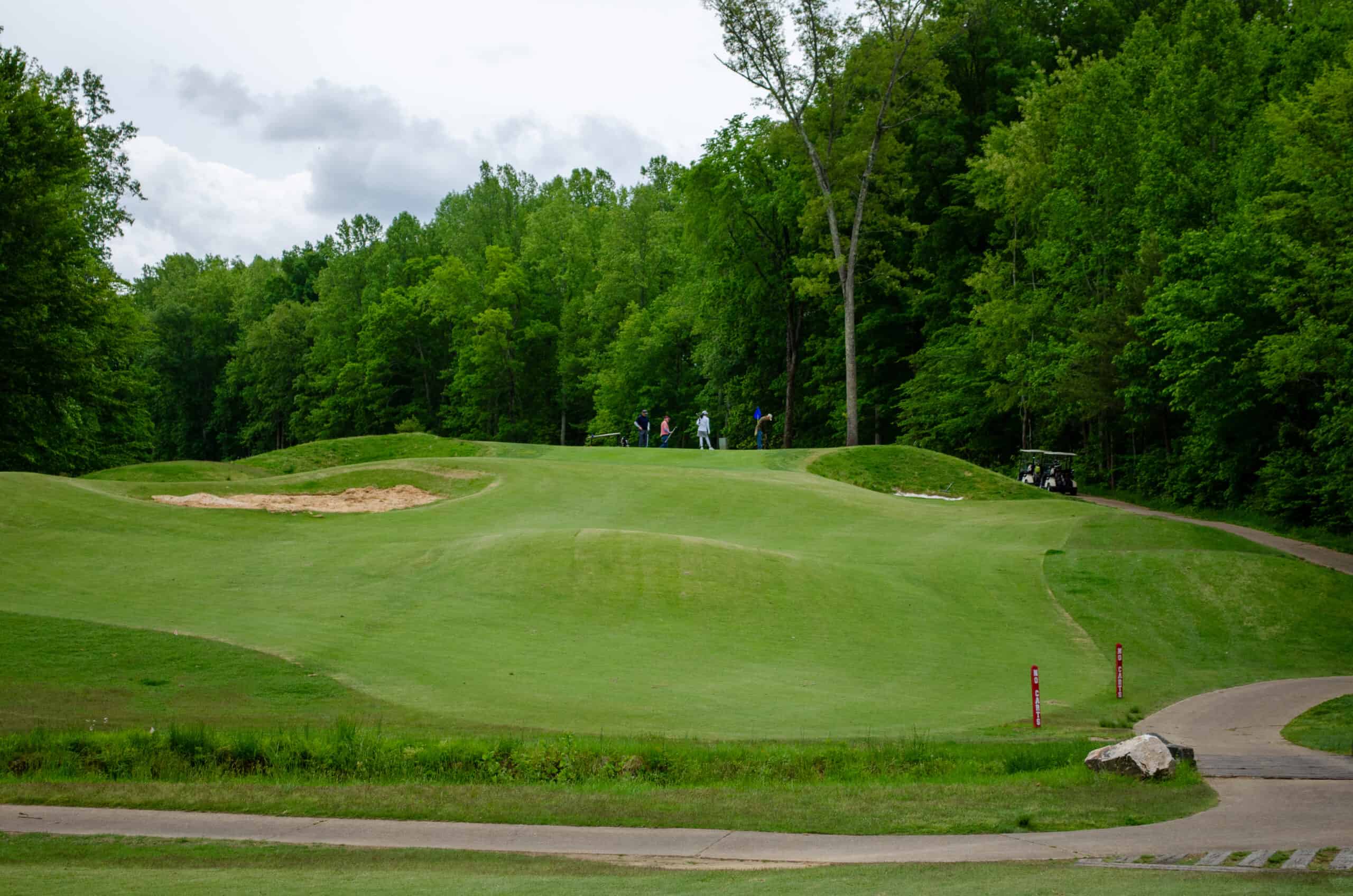
Do Pros Use Cavity Back Irons?
The introduction of cavity back or game-improvement irons in the 80s changed the landscape of golf forever. It finally gave the average player a club that was easier to hit and offered more forgiveness than the traditional blade irons – but do the pros use them?
Many professional golfers use cavity back or muscle-back irons, as they are known. The forgiveness offered, especially with the longer irons, provides greater confidence, consistency, and accuracy at the highest level, just as it does for amateur players.
We’ll tee it up with a look at the traditional blades, the advent of the cavity backs, why they are so appealing to pros, which pros use them, and which pros stick with their standard blades.
The Blade Iron
Up until 40 years ago, around the mid-80s, if you wanted to play golf, you only had a single choice of irons, and those were blades. They were thin and blade-like (hence their name) and were notoriously difficult to hit well.
Any contact error would result in errant shots and even the best in the world at the time were not immune to the unforgiving nature of the blade irons. What did appeal to the pros ( and still does) is the depth of feedback that the blade iron offer.
Striking a blade iron flush is one of the greatest feelings in golf. To do so consistently requires high levels of skill and mechanical consistency, which many amateur players do not have and which the pros have spent countless hours perfecting.
The Creation Of Game Improvement Irons
As early as the 1960s, Karsten Solheim, the golf wizard at Ping, experimented with a different iron design that would offer average players a club that was easier to hit and achieve distance and accuracy consistently.
His first ‘game-improvement’ club was a putter, and he found that by shifting the weight to the toe and heel, he could make a club that twisted less and created better and more consistent contact.
Applying this to irons, he removed a piece of steel from the back of the iron and added weight to the toe and heel, which became known as perimeter weighting. The K1 irons were first introduced in the late 1960s, and Ping stepped on the gas.
In 1978, the Ping EYE Irons made their appearance and soon became the game’s best-selling irons. Other manufacturers followed suit, and today all manufacturers produce perimeter-weighted clubs from cavity backs to muscle backs for all levels of golfer.
Modern Blades or Cavity Backs
By modern standards, there aren’t any traditional blade irons being made anymore, and even those purported to be, have minor cavity back characteristics inherent in their design.
Modern blade irons are not quite the same shape and design as their earlier counterparts and are often referred to as muscle backs, and they resemble the blades of old far more than the cavity back irons do.
They have some weighting around the perimeter like the cavity back iron do but retain much of the blade’s shape, weight, and profile. They are a little thicker than the blade and have a more prominent sweet spot that delivers a little more distance and height on the shot.
Most muscle backs are still forged to provide the feel of the blade iron, while cavity backs are generally molded irons for mass production.
Cavity back irons have perimeter weighting and have a chunk of steel removed from the back of the club to allow for the repositioning of the CG and MOI, which in turn offers greater forgiveness to the average golfer.
The Cavity back iron isthicker and chunkier than the muscle backs, which can be seen when comparing them side-by-side. Those that use Cavity back irons find they are far easier to hit straight than muscle backs, and this is one of the main reasons, so many pros use them.
Blade irons offer greater control for pros, significantly when shaping shots, and the feedback they provide in terms of swing quality is unparalleled, hence the use of blade irons by pro golfers for so long.
The muscle back iron is more of a hybrid between blade and cavity back as they are still forged irons and offers the best of both worlds from control and consistency to have some forgiveness.
However, the muscle backs don’t have the same level of forgiveness as the swing cavity back irons do, but then as a pro, how much forgiveness do you need?
The Appeal Of Cavity Backs For Pros
The introduction of game improvement irons by Ping in the 80s saw little traction from the pro golfers, but into the 90s, interest in these golf clubs from the professional side was growing.
After all, if you as a pro could find an iron (especially a long iron) that could deliver more consistent results in terms of accuracy and distance, why would you not use them?
There was an unspoken tradition that pro golfers should only be using blade irons as these were the reserve and almost a rite of passage reserved for pro golfers only. Still, the benefits of cavity back irons were fast becoming evident and too loud to ignore.
The cavity back irons offer a more prominent sweet spot and provide more height on the shot than the blades do.
In the past 5-7 years, a trend with PGA tour players has been to have a cavity back or muscle-back irons for the long clubs like the 3 or 4 iron, as the added forgiveness and the additional height make them easier to hit than the blades.
Because the Center of Gravity (CG) is positioned lower in these irons, it is easier to get the higher trajectory shots that will come down that bit steeper and stop and hold the green instead of the lower trajectory shots that may run through on landing.
These irons still offer a good level of control for the pros so that shaping shots with the longer irons are still viable and consistent; they simply have a little more forgiveness on offer.
So the use of the cavity back irons with the pros is usually limited to the longer irons, as the blades/ muscle backs are preferred for the mid and short irons as they offer more control on approach.
The Validation Of Cavity Backs By Pros
The gradual proliferation of cavity back irons into the top echelons of the game has validated Karsten Ping’s vision. So many pros have them in their bags these days, indicating how far these irons have come over the last 50 years.
The fact that pro golfers see value in the concept and benefit of cavity back irons, even though the ones they use are not the same as those found in bags of weekend golfers, means that when it comes to blades/muscle backs vs. cavity backs, one is not better than the other.
They have different applications in the game, and where pros are looking for that little extra height, ball speed, or forgiveness that the longer blade style iron don’t offer, the opportunity to utilize cavity back irons is a validation of their benefits for the game at any level.
What Percentage Of Pros Use Cavity Back Irons
According to Titleist, around 70% of pros have used cavity back irons, with only 30% still maintaining their traditional ‘blades only’ bag. This proliferation of the cavity back into the professional realm is a testament to its effectiveness in improving flight, shape, and consistency.
Remember that pro golfers don’t use the oversize cavity backs like the amateur and high handicap players use; their irons are less oversized and closer to the blades of old with sharper edges and thinner profile, rather than the thicker shape of the modern cavity back.
Some pros don’t use cavity backs at all, and since there are fewer of them, they can be listed here:
· Tiger Woods
· Collin Morikawa
· Phil Mickelson
· Adam Scott
· Rory McIlroy
· Sergio Garcia
· Dustin Johnson
· Ricky Fowler
· Ernie Els
Justin Thomas uses a four-iron cavity back, but the rest of his set are blades.
Why Don’t All-Pros Use Cavity Backs
If the cavity backs are easier to hit and offer more forgiveness, distance, and height, why don’t all the pros use them? The answer lies in the degree of control that pro golfers like to have.
For the average player lonely looking to get the ball straight and hit more greens from the fairway, the cavity backs provide all of that with the more prominent sweet spot and weighted perimeter, so off-center hits don’t go wildly offline.
But for the pros, look for greater levels of control in trajectory, height, shaping and shot feedback, and this is why many only have the cavity back irons as long irons while preferring blades in the mid and short irons.
Cavity Backs Are More Difficult To Control In The Wind
Cavity back irons are designed to get the ball higher into the air, and when you are playing tournaments in windy conditions, as we saw on the third day at the Masters recently, you need to be able to control the ball flight in the wind.
Cavity backs do not offer that level of control, and trying to keep shots down off a cavity back iron in high winds is next to impossible. With blades or muscle backs, pro golfers retain control of the ball flight under challenging conditions.
Blade Irons Offer Better Shaping & Shot Feedback
Not only that, but pros rely on their shaping skills to maneuver the ball into scoring positions on the golf course , and cavity back irons don’t offer that level of control.
Another reason that we touched on earlier is that of feedback. When pros hit golf shots, they learn a lot from the impact of the ball on the clubface and the feel of it off the clubface.
This feedback tells them about their swing quality and execution, which is an intrinsic part of their training and the development of their skills in the game. Without it, they would lose a vast chunk of their ability to improve their swing, and this is one of the significant reasons professional golfers don’t use entire cavity back sets.
Appearance – Blades Are Sexier!
Anyone that has a passion for golf will admit that there is something special about a set of blade irons, and that is their appearance. They look incredible! And aside from their ball striking, blade irons are simply sexier than their cavity back counterparts.
The thin edges and sleek profile are almost a badge of honor or rite of passage for players who have developed the skill level necessary to master them.
Also, many pros will find the chunky profile and oversized heads unnecessary as they don’t need the levels of forgiveness and more prominent sweet spots for their game as the weekend players would.
Will We See More Pros Using Cavity Backs In Future
As the technology and production methods for cavity and muscle back iron head improve and more pro players look for alternative golf club options that give them advantages in the field, it would be natural to assume that we will see more cavity back type irons in the pro game.
This doesn’t mean that the modern blade iron will disappear. As the game evolves, the professional golfer will look to take advantage wherever they can, and club design and function innovation will play a significant role there.
It is conceivable that the boundaries between the blade, muscle back, and cavity back irons for the top levels of the game will become less distinct over the next ten years. In time, the percentage of pros using cavity backs will increase.
Currently, some 70% of pro golfers have cavity backs in their bags. While these are mainly confined to the long irons, this percentage will gradually increase as more players see the benefits of consistency, accuracy, and maximum distance benefits.
Whether we will ever see a pro golfer with an entire bag of cavity backs is unlikely, but innovations in design could well introduce a new type of iron that offers the best of both worlds.
- Recent Posts
- Should Tee Boxes Be Level? - January 23, 2024
- 3 Hybrid Distance - November 15, 2023
- Innovations in Golf Mobility: An In-depth Review of Top Golf Scooters - October 12, 2023
The 9 Best Cavity Back Irons
Searching for the best cavity back irons to play in 2024 is an exciting and rewarding experience for golfers of all skill levels looking to improve their game.
In this article, we have researched the best buys for:
The low and accomplished golfer wanting to get the best out of their game.
The mid handicap player looking to improve their game .
The beginner and high handicap golfer wanting to improve their game and move to the next level.
It is true to say that irrespective of the competency of many golfers, the need to improve and get the most enjoyment out of the game is a driving factor.
Do Cavity Back Irons Really Help?
Do pga players use cavity back irons, cavity back putters, 1. ping i210 irons, 2. titleist t100 irons, 3. taylormade p770 irons, 1. taylormade sim2 max, 2. callaway mavrik, 3. titleist t300ii, 1. taylormade sim2 max os, 2. cobra f max airspeed irons, 3. callaway big bertha b21 irons, related articles.
The introduction of cavity back irons has undoubtedly been one of the greatest game-changing innovations that this testing game has experienced.
Any golfer who started playing golf with blades can testify to the fact.
The sleek-looking blades with a small head only allowed for a tiny “sweet” spot in the center of the head.
Any mis-hits would create a “shudder” through the hands and wrist and the distance was greatly compromised.
Launching the long irons required many hours of practice and an above-average skill level.
Ping was the first to introduce the cavity back iron with the Ping Eye irons.
All the manufacturers moved to the cavity back technology to cater to the demand of the masses wanting to improve their all-round game.
Cavity-back irons have a large sweet spot on the face allowing for mis-hits that still travel straight and a fair distance.
This result is due to the weight distribution which is moved to the heel and toe of the clubhead.
Less sidespin is created off the face which produces reduced hooks and fades and moving the weight allows for the option to place it lower in the head and lowers the CG.
Lower CG means a club that is easily launched from all lies on the course.
Put all the benefits together and it is easy to understand why most golfers today choose to play cavity back irons in some form or another.
Tour players, whether in the senior ranks or mainstream tournaments earn their living by playing good golf and eliminating mistakes on the course.
Cavity back irons provide the same game improvement to these accomplished players and offer them more options depending on course and weather conditions.
On windy days the pros will opt for a cavity or muscle back long iron instead of launching a 5 wood high into the air.
The downside of a cavity back iron is that it produces less side spin which in turn makes it more difficult to hit a big hook or fade.
However, it is not uncommon to see a combination of cavity back and muscle back irons in the pros bag.
Many senior players on tour have to compensate for the lack of flexibility in their bodies and use the cavity back irons to good effect.
Distance with accuracy will always be a factor and cavity backs provide this.
An area where pros still rely heavily on blades is the short irons.
From an 8-iron to the various wedges in the bag, they want to control the spin, distance, and accuracy into the green.
They spend many, many hours practicing this aspect of the game to ensure confidence and scoring opportunities on the round.
Amateurs will be well advised to use cavity back irons through the set, with maybe the exception of the short irons and wedges.
Very few pros use a genuine blade putter on the tour. The cavity back putter has an increased sweet spot with the weight either evenly distributed in the head or a heel-toe weighting.
Slow greens, which are uncommon on the tour, or wet conditions allow the pros to opt for a slightly heavier putter.
Weight can be added or reduced on many of the top putters today and placed where best suited to the player.
The Best 3 Cavity Back Irons for Low Handicaps
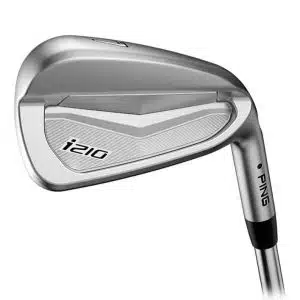
- Precision milled for good looks and playability
- All the good technology from the i200 improved in the i210
- The larger improved elastomer in the sole
- Designed for the better player
- Ping looks at address, not for all
- Topline size
The i210 cavity, face, and grooves are precision milled to enhance looks and playability.
The i210 model has taken all the good things from the previous i200 model and improved them.
The cavity back design head features a larger section in the sole area.
A greater improved tuning port and softer elastomer insert that is 30 % larger fits into the sole area.
Players wanting a classic design iron with forgiveness will enjoy this set.
The i210 is designed for the better player who seeks ball flight control, rather than sheer distance.
A high-performing iron set that generates good ball speed off the machined face, creating distance, soft feel, and control.
The “muscle-back” compact look on the shorter irons with a smaller cavity and less offset will add appeal.
A refined leading edge glides through all turf conditions with ease.
Lofts on the standard set move from 19-degrees on the 3-iron to 41-degrees on the 9-iron, and 45-degrees on the pitching wedge.
Better players will appreciate the improvements in this set.
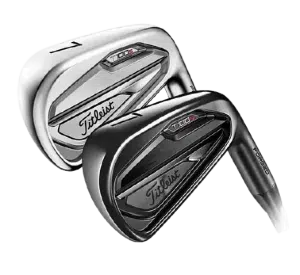
- Most blade-like look
- Thin top-line
- Traditional look with forgiveness
- Premier iron that is easy to hit
- Minimal offset
- Titleist look not for all
- Blade length is short
- Not a game-improvement iron
For Titleist to drop the most played golf iron on the tour for the last decade, and replace it with the T100 iron is significant in itself.
The iron is possibly best described as a “high-tech”cavity-backed blade.
It has a very thin top line and a traditional look about it.
While it may appear like a traditional iron, the forgiveness incorporated into the manufacturing process, makes this a premier iron that is easy to hit.
The tungsten weighting is forged into the extreme heel and toe of the head which increases stability and MOI without any drastic changes to launch and spin.
The key is to keep the weighting close to the face.
A new fully forged cavity back construction is balanced by co-forged dual-density tungsten, for precise distance control with exceptional stability.
The T100 has a narrower sole than the AP2 and a pre-worn leading edge and is slightly beveled to help the club glide through all turf conditions.
This allows for clean contact on both steep and shallow strikes with a good solid sound.
The lofts are very close to traditional with the pitching wedge at 46-degrees.
Like all cavity back irons, the reduced side spin makes it more difficult to curve in the air.
In summary, this combination of power performance, playability, and feel is unlike any previous Titleist design.
Ideal for the ex-blade player now wanting to use forgiveness technology.
- Forged irons with progressive offset
- The smallish head shape looks good at address
- Packs a punch off the face
- Forgiveness on mis-hits
- The face may be too small for some
- Lower spin rate
Taylormade introduced the P770 irons as an update on the very popular P790 irons that were long and forgiving with a large head.
The idea was to bring the same characteristics to the better player in a smaller head package.
The progressive offset, although slightly less than the P790, will appeal to many TaylorMade fans.
A smaller forged head and face with a thin top line is ideal for the better player and incorporates an advanced forging process.
A hollow body design looks just like a blade at the address and packs a punch.
The extremely thin face creates plenty of ball speed and distance.
Progressive Inverted Cone Technology in the face and the Thru-Slot Speed Pocket helps retain distance on off-center strikes.
The sound is rather quiet at impact but feels solid through the strike.
The P770 irons create a lower spin rate than most player irons on the market but fitted with the right shaft will hold greens consistently.
Better players looking for compact small heads with fast ball speed off the face, and this TaylorMade set will not disappoint.
The Best 3 Cavity Back Irons for Mid Handicaps
- All-new Cap Back design
- Optimized sweet spot
- Better forgiveness, distance, and feel
- Easy high and long launch
- Topline a bit thick
- Wide sole not for everybody
The TaylorMade Sim2 Max is engineered to assist the golfer in hitting better shots more consistently.
An intelligent optimized sweet spot is designed for better performance.
TaylorMade’s all-new Cap Back Design delivers a great game improvement iron for the mid handicap.
An outstanding feature of this technology package is outperforming the traditional cavity back iron.
The multi-material construction promotes a better feel, forgiveness, and distance.
Explosive ball speed off the face enhances confidence and delivers a long and high ball flight.
The combination of the proven Thru-Slot Speed Pocket and Cap Back design provides the all-important consistent strike and distance control.
Lower CG placement produces a high ball flight with easy launch and a neutral spin bias.
A softer Echo Damping System, fully enclosed by the Cap Back design, covers the face from heel to toe.
Results are a softer feel, limited vibration on mis-hits, and maximum face flexibility.
The face design is at the threshold of the legal limit and the Inverted Cone Technology minimizes the common right miss.
This set has all the latest TaylorMade technology and is a good buy for game improvement.
- Longest Mavrik iron on offer
- AI-designed fast face
- Easy Launch
- Affordable price
- Headshape not for all
- Topline slightly thicker
The Mavrik iron is the longest in this series from Callaway.
All the advanced Callaway technology is incorporated into the set.
Callaway has used AI-Technology to design the face.
The Flash Face Cup design produces long and consistent distances.
Sophisticated face architecture allows Callaway to install a unique face into each iron.
A boost in ball speed and increased spin robustness on each iron is another unique feature.
Custom tungsten-infused weights allow for precision placement of the CG throughout the set.
The result is optimum launch and ball flight from strong lofts and player preferred trajectory, spin rates, and land angles.
Feel is never overlooked by players wanting to improve their game.
The Callaway Mavrik iron produces an unprecedented feel using the patented urethane microspheres to absorb mis-hits vibration while maintaining COR for fantastic ball speed.
Premium True Temper Steel or Project X Catalyst Graphite shafts complete the set.
- Modern mid-size head shape
- Thinner topline and less offset
- Faster ball speeds
- Easy launch
- Head shape not for all
- Offset not suitable for the better player
Titleist has produced another winner in the T-series irons with the T300II.
Regarded as one of the best Titleist game improvement irons ever.
A unique polymer core developed in partnership with Titleist golf ball R & D provides precise dampening and sound qualities.
Off-center strikes travel straight without much distance loss.
The longer blade length in the T300 increases MOI and is well balanced with tungsten weighting in the toe.
The CG is perfectly placed for long straight ball flight from the easy launch characteristics.
Faster ball speeds enhanced by the Max Impact Technology spread across the extremely forgiving mid-size face.
Strong lofts off the fast-feeling action off the cavity back create length on every shot.
The reduced offset is appealing at address.
A True Temper Steel shaft or a Mitsubishi AV Red Graphite shaft are options.
The Best 3 Cavity Back Irons for High Handicaps
- High technology in an oversized head
- Longest most stable iron in TaylorMade stable
- Wide sole for easy launch
- Over-sized head not for the better golfer
- The wide sole and thick topline
The TaylorMade Sim2 Max OS iron is undoubtedly the most forgiving in their stable.
All the high-technology is included as in the other latest TaylorMade irons.
A feature is the ability to pack all the goods into a low CG oversized head.
The all-new Cap Back design delivers incredible distance and forgiveness.
With a wider sole, Tru-Slot Speed Pocket, stronger lofts, and draw-biased design, counters mis-hits.
The oversized face with Inverted Cone Technology produces maximum face flexibility, ball speed, and distance.
All the technology, a fluted hosel, a 360-degree undercut ultra-thin face create an exceptional-low CG to produce a high penetrating ball flight.
A definite consideration for super game improvement irons.
- Perfect for moderate swing speeds
- Lightweight construction
- Low cavity back for easy launch
- Short hosel
- Thick topline
- Not for low handicaps
Cobra has produced another outstanding iron option for the golfer seeking super game improvement.
Each iron has a deep cavity back design allowing weight to be placed at the perimeter of the club and low down.
The lightest ever irons from Cobra with lightweight shafts.
This lightweight technology, with a deep undercut cavity design, increases clubhead speed and higher launch.
Distance just got easier without having to swing the club harder.
A good-looking club at address with overall good spin rates.
An airspeed shaft that is 5 gm lighter than standard, generates speed and distance without sacrificing stability.
A unique feature is the Raw Unpainted shaft which removes 2 gm from the weight and creates its own look.
The offset design helps turn the club over for straighter shots.
The Progressive hosel length and offset design allow for precision weight distribution for a low CG promoting forgiveness and control.
The longer irons have a low CG and launch the ball high.
The mid-irons have the CG in the middle of the face and create a mid-launch.
Wedges have the CG high on the face for a lower launch into the green.
A great offering from Cobra.
Callaway has always been at the forefront of club development to help all classes of golfer.
- First Big Bertha designed with AI
- Engineered for ball speed
- Easy to launch
- Confidence-inspiring at address
- Bulky head look
- Wide sole not for all
Callaways AI-designed Flash Face Cup produces high ball speed at contact and increased spin robustness.
Ball speed is further enhanced by the 360 Face Cup that flexes and releases at impact.
An improved wider sole adds confidence over the ball and interacts well through all turf conditions.
More offset has been added to the head which provides an easy launch, lower spin, and straight flight.
The high launch is increased from added tungsten weighting seated precisely lower in the head for low CG.
The patented urethane microspheres absorb unwanted vibration on mis-hits.
Ball speed is maintained and the feel is exceptional.
This is a distance club and should appeal to many players who seek game improvement from the latest technology on the market. It’s a good-looking set that will deliver.
- The 5 Best Forged Irons; Are They Better Than Cavity-Backed Irons?
- How Long Do Golf Irons Last? When Will I Need To Replace Them?
- The 7 Best Golf Irons Available This Year! Reviewed For You!
Nick is the founder of GolfSpan and an avid golfer. He's not quite a pro but has over 15 years of experience playing and coaching golfers worldwide. His mission is to bring the golfing community a better experience when it comes to choosing the right golf gear and finding the right setup for your game.
- Nick Lomas https://www.golfspan.com/author/nicklomas Callaway Supersoft Golf Balls Review: Pros, Cons, & Costs
- Nick Lomas https://www.golfspan.com/author/nicklomas 14 Golf Exercises For Seniors To Make You More Mobile
- Nick Lomas https://www.golfspan.com/author/nicklomas What Is A Good Golf Handicap: Data Reveals Where You Stand
- Nick Lomas https://www.golfspan.com/author/nicklomas 7 Best Low Compression Golf Balls: Pros & Cons of Using Them
You might also like these
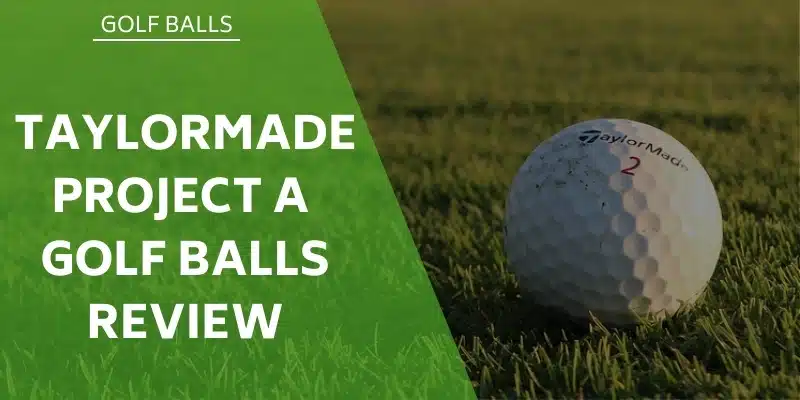
CONNECT WITH US


Home » New Golf Equipment Reviews » Best Golf Clubs » Blades Vs Cavity Backs
Blades Vs Cavity Backs [What Do Pro Golfers Use?]
Blades were once the only type of golf irons that golfers could play with but as time went on, a new type of iron was introduced: the cavity back. Titleist, Callaway, Mizuno, Ping, TaylorMade, etc., have designed varieties of cavity backs and blades, providing golfers a rich reservoir to choose from.
Where most golfers get stuck is in choosing the right one for their game. Are blades longer than cavity backs? Do cavity backs really have more forgiveness than blades?
To answer these questions, the Tell Me More Golf research team examined the features of both types of irons, their pros and cons, who they’re designed for, and which of them the pros use the most.

Are Cavity Backs Or Blades Better? The Lowdown
Cavity back irons are easier to hit and have more forgiveness than blades. If you don’t play golf frequently or are a high handicapper, you’ll do better with cavity backs than blades. Cavity Backs feature a larger club face, making for a larger sweet spot , which makes it easy to hit the center of the clubface consistently. This makes you score a lot better!
This type of iron also comes with perimeter weighting, which means off-center strikes and mishits are more forgiving. A larger sweet spot and higher launch mean more distance for you. If you are a low handicapper, we wouldn’t recommend you go for cavity backs though.
Blade irons are designed with better players in mind, who have mastered hitting their golf clubs to manipulate their shots. If you’re a highly advanced player, you already know that at your skill level, you don’t need a lot of forgiveness like beginners. You don’t need a larger sweet spot of the cavity irons since you hit the sweet spot consistently enough. The small sweet spot on the blade is enough for your game. Blades are also practical for playing under windy conditions. The lower launch allows you to hit the golf ball at a lower angle, making for more accurate and predictable shots. As a pro, traditional blade irons are better for you.
Blades will give you a smooth feel, extra control, and crisp feedback, which is almost absent in cavity backs. Along with being sleek and clean, blades will force you to continually fine-tune your golf swing , something that even the best players prefer for their golf irons, improving your game.
Do Pros Use Cavity Back Irons?
Titleist reports that up to 70% of tour pros use cavity back irons. The remaining 30% use blades. In another report by Golf Magazine, the number of players playing cavity-back is 44%, with only 26% playing irons. Even at 40%, the percentage of pros playing cavity back is almost half of all. Again, there are pros who have both clubs in their bags to maximize the benefits of both. While blades give them a better feel and control, cavity back provides more forgiveness.
Jim Furyk, Phil Mickelson, Retief Goosen, Steve Stricker, Joe Ogilvie, Fred Funk, etc., are some of the players on the PGA Tour that swing cavity back irons. If the best ball strikers in the game are using cavity-back iron, then it makes sense that beginners should have it in their golf bag.
Why Do Pro Golfers Use Cavity Back Irons?
Many PGA Tour players look for long irons that not only offer forgiveness but also high launch and additional ball speed. Cavity backs (a.k.a. golf improvement irons) have their CG (center of gravity) placed lower, which is essential for maximum peak height.
This, along with forgiveness, is what attracts pros to them. Not necessarily distance, which is what beginners often look for. So, next time you stroll through the golf course and notice experienced golfers’ bags filled cavity-back, don’t be surprised.
SUBSCRIBE for FREE GOLF TIPS from our EXPERT INSTRUCTORS!
Blades Vs Cavity Back Distance: Which Club Will Perform Better?
Advanced players and PGA tour pros already know how to hit their irons long, consistently. To achieve distance, these players often draw on their skills, not relying on a specific feature on the golf club .
Beginners, on the other hand, lack the skills to achieve further distance on their clubs. As a result, they need forgiveness and larger sweet spots on cavity back clubs to achieve better distance. If you’re a beginner, you probably have noticed you don’t hit the ball in the sweet spot enough to general sufficient distance.
In that case, your best option is to choose cavity backs. Cavity backs have lower CG (center of gravity), which allows beginners to launch the ball high, thus adding to both carry distance and total distance. The larger sweet spot also enables average golfers to produce longer off-center hits, thanks to increased ball speed.
If your goal is distance but you’re not a pro or a low handicapper, you should avoid playing blades. Blades have less forgiveness and as result, you’ll lose distance when hitting off-center strikes and experience a lot of hooks and slices.
Muscle Back Vs Cavity Back: Which Is Better for Your Game?
The main difference between muscle back (also known as blades) and cavity back is in the design and playability. Muscle back is a type of iron with a compact club head, thinner top line and sole and a small amount of offset. The traditional design of the blades makes them cleaner and lighter than cavity back irons.
The designers of muscle back irons have evolved the design on modern blades by adding more mass to the back of the hitting surface but less weight behind the head. This is done to allow pro golfers to work their ball and hit draws and fades.
Most muscle backs are designed with low handicappers in mind. They aren’t as forgiving as cavity-back but offer a superior feel and tons of feedback. Although they’re harder to hit than cavity back, they reward golfers with an incredible feel and superior workability. If you’re a low handicapper looking for a new set of irons, then blades are an excellent choice, and according to our golf researchers, they will give you an advantage on your game.
Cavity backs, on the other hand, have a different profile from blades. These super game improvement irons have a bigger club face and a thicker sole. The sweet spot is larger as a result of the large club face. Then perimeter weighting in the cavity back allows the golf ball to go straighter and higher, resulting in more distance . Because they are built with forgiveness in mind, high handicappers will find them the most suitable. Generally, they’re not as flexible as muscle backs, which is why golf pros and low handicappers often gravitate away from them. It’s harder to work the golf ball with a cavity back and they provide less feedback on mishits overall.
Frequently Asked Questions: Which Irons?
Are blades better than cavity backs.
Golfers with a low handicap, who can manipulate the ball and can shoot below par consistently, will find blades better than cavity back.
Since their game requires less forgiveness and constantly looking for a better feel and feedback, more experienced players will find the blade optimal for their game. The majority of tour pros still choose the blades because they are lighter and have better workability than cavity back irons. It’s easier to shape shots on blades and they offer better control than their counterpart, which is why they’re called the “player’s iron”.
Are cavity backs more forgiving than blades?
Yes, cavity backs are more forgiving than blades. The reason for this is simple. Cavity backs have more offset at the hosel, perimeter weighting, and a bigger club head that is bigger compared to blades that have compact club heads. This means that the forgiveness of the club head will be greater when you mishit shots.
These features along with a thicker sole and larger club face, mean you have a larger sweet spot to work with when using cavity back irons. Not only are they easier to hit but you’ll be hitting the ball higher and straighter with a cavity back. Most game improvement irons are designed for average players, so they’re built with forgiveness in mind.
Can high handicappers use blades?
Yes, high handicappers can use blades. But, should they be using it? No! Blades (sometimes called forged blades) are more suitable for low handicappers because of the higher CG, which promotes lower ball flight and more spin. Blades also have a higher tendency to punish thin shots. As a beginner or high handicap golfer, you want the opposite of that.
You want lower CG (center of gravity) so you can launch the ball high, enjoy lesser spin and forgiveness. If you find it difficult to control your swing path or club face direction, you should not use blades. The clubhead on blades is smaller, reducing your chances of hitting the sweet spot consistently. They’re also less forgiving with off-center hits, making them unfit for high handicappers. This is why blade irons are not often recommended for beginners.
What are the best forgiving cavity backs?
Some of the most forgiving blade irons include the Callaway Mavrik Max, TaylorMade Sim Max, and the Cobra SpeedZone Iron Set.
What are the best muscle back irons?
The Titleist 620 MB and Mizuno MP 20 Iron Set are two of the top models to consider. There are many others you can choose from, so this isn’t an exhaustive list.
Conclusion: Research by TellMeMoreGolf.com
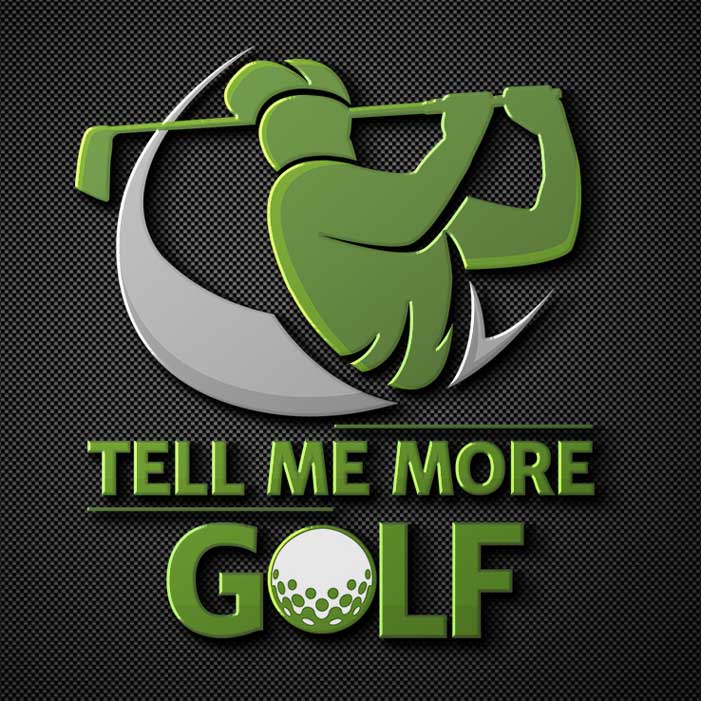
If you’re a beginner golfer or high handicapper, the most suitable iron for you is the cavity back. In this blades vs cavity backs guide, we tell you that it’s forgiving, has a larger sweet spot, and will allow you to hit the ball higher and straighter. However, if you’re a low handicapper or an advanced player, you’ll enjoy a better feel, workability, and flexibility of blade irons.
You’ll also be able to manipulate the ball to draw command or hit fade and get immediate feedback on mishits.
SUBSCRIBE for FREE GOLF TIPS from our EXPERT INSTRUCTORS!

Patrick Corley
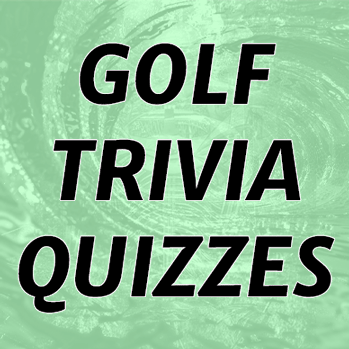
Affiliate Disclaimer
TellMeMoreGolf.com is a participant in the Amazon Services LLC Associates Program, an affiliate advertising program designed to provide a means for sites to earn advertising fees by advertising and linking to Amazon.com.
Popular Articles
- Increase Swing Speed
- Vintage Golf Club Value
- Irons for Mid-Handicap
- Golf Shoe Reviews
- Comparing Woods
4640 Admiralty Way Ste 302 Marina Del Rey, CA 90292 Tel. (424) 405-6472
Useful Links
Privacy policy, golf hardware.
GET FREE GOLF TIPS FROM OUR EXPERT INSTRUCTORS!
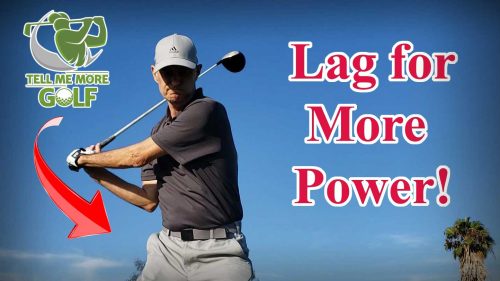

The real difference between blade and cavity back irons
It is one of the most commonly debated topics in golf: “What are the real advantages/disadvantages between a set of blade and cavity-back irons?” It goes even further when we start comparing traditionally lofted clubs to those with stronger lofts and faster club faces.
I sit in the crosshairs of this debate. As a fitter, I rarely fit any golfer into a full set of blades and instead opt for combo sets to offer better performance into the longer irons. On the other hand, as a lover of traditional equipment, I often play a full set of blades, but prefer to pick my battles on shorter courses that emphasize the ground game and shaping the ball. I fully acknowledge my contradictory approach.
Note: My go-to set is a smaller multi-material players cavity that offers the best of both worlds
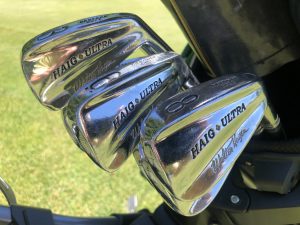
Kevin Na even entered the debate when he made this statement on Golf.com ‘s Fully Equipped Podcast,
“I can’t play a blade. It’s too difficult, and I’m a pro golfer. I think a blade goes shorter. Off-center hits aren’t going to perform as well as cavity-backs. I don’t see a reason why you’d want to play a blade. I really don’t. I played blades in my early 20s, maybe one year — when I was dumb. But I’m wiser now and play a cavity-back. “In the longer irons, I even look for more — I don’t want to say a high-handicapper club — a more forgiving club.”
I’ve heard the same thing from other PGA Tour players, including Charles Howell III, who was quoted as saying “I really wish I was good enough to play these (Titleist 620MB’s)” when he was first shown them during prototype testing. Now Mr. Howell and Mr. Na are both tremendous players, but when a 200-plus yard shot over water in a stiff breeze can mean the difference between a top ten and tie for 20th, I can understand why some players would want something a bit more forgiving—you know, just in case.
It’s all about choices
When it comes to equipment, there is more than one way to choose what goes into your bag—you can rely fully on optimizing performance or choose the equipment you want to play based on other factors and do your best to maximize the available performance. I believe both ways of approaches have merit, since every golfer enjoys the game differently, although at the most competitive level, I would still choose total performance over other factors.
Unlike a driver fitting, where distance is almost always the main objective, finding a set of irons involves—as the name suggests, an ideal set of clubs designed to hit shots precise distances and land closer to the intended target. We covered one of the most important iron fitting parameters, descent angle here— Buying new irons? This is the most important fitting parameter
The proof is in the data
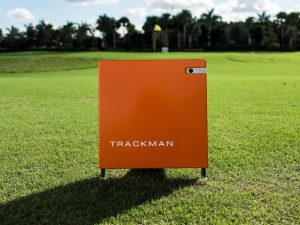
If you are curious to see the real difference in performance between blades, cavity backs, and then faster-faced irons, check out the video below featuring Titleist Master Fitter Glenn Mahler going through the results of a fitting with Titleist 620MB, 620CB, T100, and T200 irons.

Cobra Pars and Stripes SpeedZone drivers: Limited-edition launch at retail tomorrow
Adidas introduces limited-edition ‘Summer of Golf’ CodeChaos footwear
Ryan Barath is a club-fitter & master club builder with more than 17 years of experience working with golfers of all skill levels, including PGA Tour players. He is the former Build Shop Manager & Social Media Coordinator for Modern Golf. He now works independently from his home shop and is a member of advisory panels to a select number of golf equipment manufacturers. You can find Ryan on Twitter and Instagram where he's always willing to chat golf, and share his passion for club building, course architecture and wedge grinding.
50 Comments
Apr 26, 2024 at 10:20 am
All the measurements are minimal. Heavy grass, wet greens, etc are way more of an impact than launch angle or loft strength or whatever. I golf blades, CB’s, and hickories and once I’m tuned in there is no difference in scores. The big deal here is only marketing. Pros get paid for playing new clubs and that’s, in so many ways, the bottom line.
Jul 28, 2021 at 1:08 pm
My improvement from mediocre to OK golfer came with a switch to blades.
Have been an 8-11 hcp for a loooong time (~25 years), mostly playing a set of 1972 Apex irons that I bought used for $35 in the mid-90s.
Notable that prior to and concurrent with getting the Apexes I had tried Ping Eye2 and Callaway X-12 in search of higher trajectory and more consistency. What I found was LESS consistency (I had been playing Wilson Staff Goosenecks). Distance control was difficult, and the Callaways in particular would sometimes rocket 10-15 yards longer than expected.
Once I put the Apexes into play I hit the ball “worse” (i.e., shorter and lower) but my dispersion was much better.
For the last two years I’ve been playing a used set of Mizuno MP-68s. They are bigger than the Apexes for sure, and easier to hit. But if the Apexes had fresh grooves on them, I’d still be playing those.
One thing that drives me nuts with trying to play the bigger, “more forgiving” irons is using them for chipping…they’re just too damn big and distance tends to be more difficult to control. Also harder to hit out of thick, wet rough, which we get plenty of here in the PNW.
Happy with the Mizuno blades and/or the Apexes. The one thing I would consider is a set that progressed toward different weighting in the 5 iron and up…more perimeter weighted. You’re definitely seeing more and more of this with the pros, even the ones who play blades.
Jul 30, 2020 at 6:23 pm
After being a club fitter for 12 years, it never ceases to amaze how hack golfers try to justify playing blades. The only people that should play forged blades are the ones that HAVE to play forged blades. AKA great ball strikers that also hit the ball too high with anything else. If you arent a good ball striker, stay away from anything forged, blade or otherwise. If you are a good ball striker, forged is fine,but only play a blade if you cant control the flight on CB type irons.
Joey joe joe
Jul 18, 2020 at 12:44 pm
When Davis Love iii wants to hit a long driver, he focuses on a dead center strike. Every amateur in world seems to swing harder. This is why we suffer 6 hour rounds. Play a blade. focus on strike and accuracy on every shot. Save literally a $1000 by opting for an older MP over a T200 and learn to strike the ball dead center while hitting down on it. You don’t need tungsten. Cavity backs are fine but don’t think they are going to save you strokes. They won’t. Playing a premium ball around the green and making solid strikes will. It’s that simple.
Jul 6, 2020 at 3:38 am
It’s what you grow up playing with.Golfers who take up the game in their late teens or later are better off playing CB. I got handed a blade when i was 12yrs old and that’s all i know. The only CB i have tried and would think of using would be the Ping i210s….and yet they still look like shovels to my eye.
Jun 26, 2020 at 5:19 pm
I play blades.
I also play baseball with a tennis racket, eat spaghetti with a spoon, surf the net with a Selectric, pet my electric eel, and argue with my wife.
Jul 2, 2020 at 11:36 pm
Stupid comment
Aug 12, 2020 at 4:06 pm
Stupid commet
Jun 22, 2020 at 12:45 am
OK… The setup… I’m probably no where as good as the golfers posting here. Currently a 13.2 HC But feel I have been currently playing to a 20. My iron play is crap right now. My golf is limited from September to February and declines significantly due to the layoff. I also have health related physical limitations. I’ve been practicing much more the last two weeks.
I have 3 sets of irons. Mizuno MP 68 3-PW, Mizuno MP-5 3-PW and Titleist 716 AP2 4-GW. I carry hybrids in place of the 3I, 4I & sometimes 5I. I put the 5 Iron back in the bag as my swing speed and contact improves. I have Ping G-410 Plus driver, Ping G-410 3 Wood and Callaway Epic Flash Heavenwood. The Heavenwood will never come out of my bag! If I got one club right, that is it.
The MP-5 are my main carry set, my favorite. I bought the Titleist last year to have a little more forgiving cavity back February to Mid-May as my swing transitions back. Bad decision, I can’t hit the Titleist and the distances are shorter when I do. This year I decided to try “super game improvement” or “game improvement” (you pick what they are) irons to help with forgiveness and distance. Ping G-400 was selected. They tend to be a little more forgiving but I had issues squaring the club face, most shots were a 5 to 10 yard fade. I couldn’t turn the ball over. I also struggled with consist distances. I honestly thought I would have some issues with “feel” and “sound” but I didn’t. That really surprised me. Do the MP-5 feel and sound better? You bet. But with the G-400 it wasn’t even an issue, I was seeking help. I’m taking them back though.
The MP-5 are back in the bag. Much more consistent shot dispersion. Much more confidence. Why? I honestly do not know. Other than I get better results with them. Why does a high handicap golfer such as myself get better results from blades/muscle backs than cavity backs? I don’t know.
In the future I plan to have two sets of clubs, a game improvement and blades/muscle backs (as mentioned above/below). I’m unsure the degree of game improvement desired. Moving forward I will try the PING G-710, The Titleist TS 100 and might even upgrade the MP-5 to MP-20 MB.
The Titleist TS 100 is very intriging and honestly look like a set that could be “The Set.” Maybe combo with T200, T300, T400 and/or U-500.
Bottom line, I love my blades. I’m more consistent with my blades. But I’m willing to give other types a try.
Jun 30, 2020 at 9:16 am
The reason why you fade your ping g-400, may be the weight of the club and the thicker sole that makes the toe of the club go more down. That will give you more fade.
So for that reason, it may be the sole and better turf interaction that makes you play better with the MP-5.
I had a miura cb501 set, but when i sold that set, and borrowed a “game improvement” set with thicker soles and in theory a more forgiving irion, i had a hard time controlling the dispersion and distance of the shots.
So for me also, CB\MB all the way.
TacklingDummy
Jun 21, 2020 at 3:38 pm
Personally, I’m not a fan of putting together combo sets (blades, cavity backs) because they have a lot of differences. Combo sets have different soles, offset, blade size, weighting (sometimes), feel, etc. So, they do perform quite differently. However, I do like sets that are made to be a progressive combo set because then the iron differences are slightly incremental through the set and not a distinct difference between the blades and the cavity back sets. I had some Hogan FTX Tour irons that was a great progressive set. Bladed wedges and differences (more cavity back, wider soles, more offset) progressed through to the 3 iron. Great set at the time.
Jun 21, 2020 at 9:54 am
Keep in mind , today’s ” blades” are really much more bigger and forgiving than those if years ago. They really are musclebacks. Wilson Staff blades of the 70’s make today’s Mizuno MP 20’s look like cavity backs!
Jun 20, 2020 at 6:06 pm
So, here’s how I have the numbers from trackman, based on the screencap.
620 MB–Backspin: 6187 rpm, Carry: 148.3, Peak: 82 ft, Desc. angle: 45.6 620 CB–Backspin: 6800 rpm, Carry: 147.4, Peak: 89 ft, Desc. angle: 48.2 T100–Backspin: 6928 rpm, Carry: 154.5, Peak: 83 ft, Desc. angle: 45.8 T200–Backspin: 5766 rpm, Carry: 161.4 Peak: 87 ft, Desc. angle: 45.7
Looking at these numbers, the outlier seems like the t200. I’d be afraid of what happens to spin on a mishit–where you might get a ball that just won’t stop. The MB would typically bleed ballspeed, so you’ll have a shorter shot by a club or two, but you won’t blow past a green.
The CB seems to give the best stopping power here given the steep descent and high spin. The T100 also looks good–more backspin than the MB with a similar descent. The MB doesn’t look terrible, either.
Long story short–the t200 just looks like a 6 iron in this relationship.
All that being said, I’d be curious to know how much a foot of height is worth in stopping power. Everything here is basically within the same spectrum–similar descent angle and heights–the only one that stands out is the CB.
Happy to hear your thoughts, Ryan–but it seems to me that every iron on that sheet is playable with slim margins of difference, with maybe the CB taking a lead based on the higher spin and steeper descent.
Jul 4, 2020 at 12:39 am
Long story shorter – blades suck. The traditional blade – the 620 MB – is atrocious and only made playable by turning it into the 620 CB. The T100 is decent and T200 is better but only because they threw some tungsten in it for height and forgiveness, and delofted it 3 degrees (as you said, turned it into a 6 iron). But blades look cool.
Oct 1, 2020 at 4:47 pm
Hmmm, my 71 yesterday with the 620MB seemed to counter your “blades suck” comment. Would I have shot a better score with the other irons mentioned?
And, frankly, I think my current rifle shaft 6.0 is too soft for me.
Nov 16, 2020 at 5:54 am
Il T200 ferro 7 è praticamente un ferro 6. Dovrebbero confrontare i ferri dalla loro lunghezza e loft invece di confrontarli guardando solo il numero stampato. Non sono un fitter ma mi sembra palese la cosa e non capisco perchè continuano a non considerare questo. Anzi lo sò.
Jun 20, 2020 at 10:25 am
It looks like the trend in Irons is now going to Hybrid looking clubs with wide soles and easy to hit. The Cleveland, Cobra, Wilson and even titles is doing toe dip along with Callaway. The point is to make is easier. Of course today it is all about looks, ego, I need what the Tour Guys Play, and more reasons not to use the latest in tech. I am sure it was that way back in 20s also. But so many think it is only for hackers and not for them. As a guy told me one day way back when I asked him why he played that butt ugly club called PING, He said he bought them because he got tired of losing to all the guys at his club played PING.
If this is as good as they think we may even see sets on the Tour,,, way down the road of course. I have played old pure blades in my time, newer blades, then to CBs and after hitting the Wison will probably go there. At 81 I found hitting was easy as hitting a Hybrid, I think they are the futures.
Jun 20, 2020 at 2:17 am
I am PGA Pro and played with many different brands and models over the years, mostly blades, sometimes cavity backs. The article above is the opinion of many people I met, but is nonsense in my opinion, because there are blades that play buttery soft and forgiving and there are cavity backs that break your bones and dont forgive the slightest offcenter hit, also ones that provide the ball strike performance of blades. Also is it sometimes the opposite, it depends very much on the model. In many years, the MBs of Titleist been more foregiving than the CBs, Mizuno and Cleveland blades are mostly unforgiving, Miura Blades are sweet as hell, but we also shouldnt forget the shafts and grips who make big differences. The tour players who made that statements above, tell in that sentence why they never will be No. 1 in the world. Nr.1 players of the last 30 years played blade irons.
Jun 24, 2020 at 7:12 am
Jordan Spieth wasn’t playing blades when he got to world number one.
Jul 6, 2020 at 9:24 am
Maybe ask yourself why his stay was so short? He was #1 briefly against an extremely weak field. Lots of injuries and time off for other good players.
Spieth would kick my butt any day of the week. But there’s a reason he’ll never be #1 again. And why the other top players all play blades from 6 or 7 down. Mild cavity up from there. Very few hybrids. Lots of driving irons and strong lifted drivers.
These players are a different animal. For sure. But someone seeking to be the best should emulate the best. It’s always been that way. It’s why Adam Scott has built a major winning career being a carbon copy of tigers old swing.
Should the average golfer hit blades? No. But a 10 handicaper isn’t the average golfer. The average golfer is a 110 plus golfer. Anyone with good middle contact and striking angle would benefit from the spin and descent angle of MBs and CBs. The monitor shows it. The best numbers in terms of trajectory were the mbs and cbs. 7 yards don’t mean anything if you can’t hit or hold the green. Period.
Jul 13, 2020 at 8:47 pm
Or Jason Day, Brooke Koepka….
Torbjørn Bjarmann
Jul 21, 2020 at 5:58 am
Or Jon Rahm
Gunter Eisenberg
Jun 29, 2020 at 12:06 pm
Duval was playing 962s when he became world #1. Silly man.
gwelfgulfer
Jul 29, 2020 at 11:44 am
Lee Westwood and Luke Donald didn’t have blades in the bag when they hit #1. But much of what you said isn’t based in reality anyway, just flawed and easily debunked opinion…
Also, your run on sentences and grammar suck…
Jun 19, 2020 at 6:30 pm
I’ve played everything from super game improvement irons to blades. My scores never change based on what irons are in the bag. Seems to me what effect my scores are if I keep my tee shots in play, avoid chunking or skulling chips, and make a few putts. I’m just as likely to shoot 90 with sgi’s as I am to shoot 78 with blades. Just depends on how the cookie crumbles that particular day.
Joey kurator
Jul 30, 2020 at 11:49 am
Very well said.
Jun 19, 2020 at 12:47 pm
Great article thank you. I’ve been on the search for the highest ball flight possible with all clubs except driver for years. Refer to it as a playable trajectory. Also been working swing mechanics too. One take away is “softer tips” do not always equate to better results which leads me to the question of during this head comparison, were the same shafts/flex used in the mb through the T200? Another question that I imagine that the answer is likely swing mechanics; I find it easier to get the club on the back of the ball for crisper contact than with a Mb instead of a head profile size of the t200. I would play a full set of hybrids but I don’t think my ball striking would improve at all
Jun 19, 2020 at 6:49 pm
We can do some head comparison.
Jul 6, 2020 at 9:12 pm
Remove the shaft from your 5 iron and replace it with your 6 iron shaft…. now how much higher do you hit your 5 iron. That is in effect what the snake oil guys do.
Its the shaft not the clubhead. and most of us play with too much SW.
Jun 19, 2020 at 11:49 am
Hitting a MP-18 seven iron pure is like self-gratification without the guilt.
Mike Arnold
Jun 19, 2020 at 11:40 am
Funny thing the picture of the Haig Ultra is the clubs I purchased back in 1972. I still have them and play on occasion. After 59+ years they are in excellent condition.
Jun 20, 2020 at 12:03 pm
You scared me. I was born in 1972, but I’m (checks with wife) 48.
Jun 19, 2020 at 10:36 am
Here we have a well written article, science based with no bias and it gets 52 shanks? LOL I am never surprised by the WRX MB fanboys, that could shoot lower scores, have a higher smash factor, generate more ball speed at a higher peak and still claim anything other than a MB is hype from OEMs. Like you Ryan, I have a set of Srixon Z Forged MB’s I play every now and then for fun. But I play T100-S irons because they give me all the advantages of a MB with the added forgiveness of a CB. Like a blade, high and low struck shots really suffer but a little on the toe and heel turn out much better than my Srixon’s. I am playing to a +1.2 but will take all the forgiveness I can get. Nice article!
Jun 21, 2020 at 8:33 am
Plus one to this. I play T100 which look and feel like a blade but my thin miss still carries. These irons also have a thin enough sole to flight the ball if needed. I really don’t see why I would play a straight up blade except that they look awesome!
Jun 18, 2020 at 10:43 pm
Worms! Worms everywhere! Who opened that can?!
Jun 18, 2020 at 7:06 pm
“We’re so excited about our t200 line”… so excited that for this test we put a 30deg club up against a 35deg club to see if it goes further. That is more that a full club in loft. Pure propaganda. They could have put the 8iron from the T200 into the test and it would have been stronger lofter than the MB’s andCB’s 7 iron.
The number on the club is irrelevant. The club that feels best, travels in the air the best and suits your game the best is the most important thing. If you are so self conscious that you want to hit a 7 iron longer than everyone else, the get a custom set and stamp your 24deg iron as a 7.
The really interesting thing about this test was the fact that the the blades outperformed the CB’s.
Ryan Barath
Jun 18, 2020 at 10:10 pm
Hi, The test shows how much vertical CG and faster-faced irons create more launch and even with stronger lofts achieve higher descent angles which is exactly what most golfers need – myself included.
Jun 19, 2020 at 3:45 am
No doubt, but in the spirit of a true test, you should have tested the 620MB 6 iron at 31deg in comparison to the T200 7 iron at 30deg (like lofted clubs). It would most certainly have proved your point on vertical CG even more as the gap in height and descent angles would be larger again (and the distance gain would not be so misleading). When you go out looking to buy a fairway wood, you don’t go out and test a 15deg 3W to a 21deg 7W expecting to get a true indication of performance.
Jun 19, 2020 at 12:45 pm
Testing X iron to X iron is the best way in my opinion because its the way 99% of fittings are conducted and is also how most golfers get fit and compare clubs. Our goal is always to educate the greatest number of golfers while also going in-depth to allow people who are already knowledgeable extra insights.
Jun 21, 2020 at 1:18 am
Not sure if you saw this video from some people you also coop with: https://youtu.be/dfKbkytvpmM
Based on that blade and CB are very similar distance wise if you make the same lofts.
Bill Elliott
Jun 22, 2020 at 7:58 pm
ryan, now you’re reaching, as sandtrap said, it should have been comparable lofts. We all know why lofts have been jacked–I will spare you that debate…
Jun 24, 2020 at 6:52 am
Listened to the podcast. You say let’s call it an ‘A wood’, a ‘B wood’ a ‘C wood’. Why not just call them an ‘Elephant Wood’, a ‘Pineapple Wood’ or a ‘Cloud Wood’?… … OR just label them by loft? The actual scientific standard for that particular club.
Like I said originally, this is pure manufacturer propaganda, which you are obviously happy to promote. I guess it is all good as long as the fitter explains that the buyer may need to buy 1-2 extra wedges between their 43deg PW and their 56deg SW.
Jun 24, 2020 at 7:08 am
…I should also add that a slower swing speed golfer who is looking for a higher descent angle and more spin would actually be more impressed if they compared the numbers of a 34deg t200 to a 34deg CB (if they are not concerned with the fact that it doesn’t go 14yds further as the manufacturers would want you to believe by their ridiculous lofting on GI clubs).
Test Better
Jul 1, 2020 at 1:16 am
https://youtu.be/dfKbkytvpmM?t=894
If anything, the cavity is slightly better for players who don’t dime it.
For those of us that can, the blade is far more predictable.
If you sacrifice predictability for distance in irons, you’re not a good golfer.
Jun 18, 2020 at 3:52 pm
Blades are the easiest to square at impact and have the best turf interaction. This is one of key reasons some people play them. Combo is not ideal blend, this is why clubs like ping blueprints are so good but still a lot of folks don’t get it.This article is one of many that should just me removed, sorry.
Jun 18, 2020 at 5:05 pm
Definitely can’t beat the turf interaction with blades, especially out of fairway bunkers and trouble lies.
Jun 18, 2020 at 5:24 pm
Not to mention that it looks like Ryan’s warmed up proper with the T200 vs his initial shots with the MB/CB’s (I know my numbers get better and better at the range for about 40 balls before they plateau and then eventually drop off). The only test worth looking at for this is with a robot and an unbiased operator of the robot IMO. The drop in spin rate vs the peak height is going to affect how much grab that ball has also and it’s not being mentioned anywhere : / (especially with 1200 RPM).
I bag two sets of clubs, I have my tech bag for when I want to play my best (Odyssey mallet, 5-gw 716AP2’s, two hybrids, mid/high bounce CBX wedges), I avg an 8.6hc with this bag.
I also have my wannabe pro bag for when I don’t care what I score (Titleist 917D2, 917F2, TMB 3-4iron, 714MB 5-9i, 47-60º Vokeys and Scotty blade). I avg an 9.8hc with this bag.
Jun 18, 2020 at 10:17 pm
Hi Tommy, You are correct. For better players a golf club with a center of gravity closer to the axis of rotation ( the shaft ) is easier to square at impact, this includes all clubs with shorter blade lengths in general. But it can also be more difficult to create a consistent closure rate for less skilled players because the club is also easier to move around that same axis.
Its why an iron like the T100 is so popular because it has a very high MOI for a club with a shorter blade length. This gives more stability on off-center hits to help maintain ball speed but gives better players the ability to control face angle.
As much as you suggest we remove the article I believe it offers a lof of golfers insight between different clubs – thanks for reading it.
Jun 18, 2020 at 3:27 pm
… that pick brought back memories played a set of Haigs back in the 70’s… you had a nickel-sized area to strike or your forearms would soon reverberate…beautiful looking clubs, I had them refinished & rechromed and they hang on the wall in my family room…????
Lowell Madanes
Jun 18, 2020 at 3:00 pm
For me it comes down to personal preference. I still play blades now but have more cavity towards my longer irons. I played Mizuno for the longest time. Switched over to Cleveland CG1’s and fell in love with having to strike the middle of the club face. Yes you will lose in results if you don’t hit the face consistently enough. I love the feel of a well hit blade and I tend to make adjustments based on how I am hitting my irons. That’s me an my preference. Kevin Na is staying his case and what he likes. At the end of the day, go with what feels good and gets you the results you want.
Your email address will not be published. Required fields are marked *
This site uses Akismet to reduce spam. Learn how your comment data is processed .

You may like
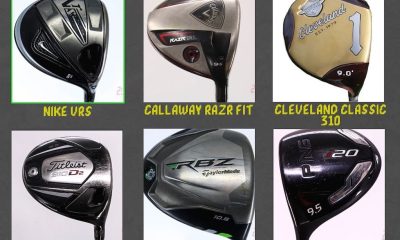
Choose Your Driver: Which 2012 driver was your favorite?

Vincenzi’s 2024 CJ Cup Byron Nelson betting preview: International talent to shine
Morning 9: McIlroy, Lowry win Zurich | Green repeats on LPGA | Steele victorious down under
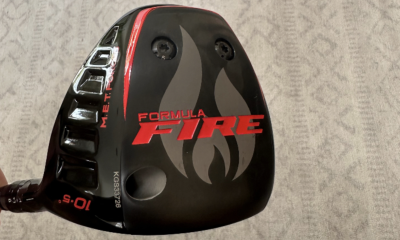
Coolest thing for sale in the GolfWRX Classifieds (4/29/24): Krank Formula Fire driver with AutoFlex SF505 shaft

Team McIlowry (Rory McIlroy, Shane Lowry) winning WITBs: 2024 Zurich Classic

LET pro gives detailed financial breakdown of first week on tour…and the net result may shock you
The year was 2012. Gangnam Style ruled supreme, its infectious beats and ludicrous horse-riding dance moves hypnotizing us with their stupidity. Everyone was talking about the Mayan calendar, convinced that the end of days was near. Superheroes soared on the silver screen, with the Avengers assembling in epic fashion. Katniss Everdeen survived The Hunger Games. And the memes! The memes abounded. Grumpy Cat triumphed. We kept calm and carried on.
In much the same way that automotive enthusiasts love classic cars, we at GolfWRX love taking a backward glance at some of the iconic designs of years past. Heck, we love taking iconic designs to the tee box in the present!
In that spirit, GolfWRX has been running a series inspired by arguably the greatest fighting game franchise of all time: Mortal Kombat. It’s not “choose your fighter” but rather “choose your driver.”
Check out some of the standout combatants of 2012 below.
View this post on Instagram A post shared by GolfWRX (@golfwrx)
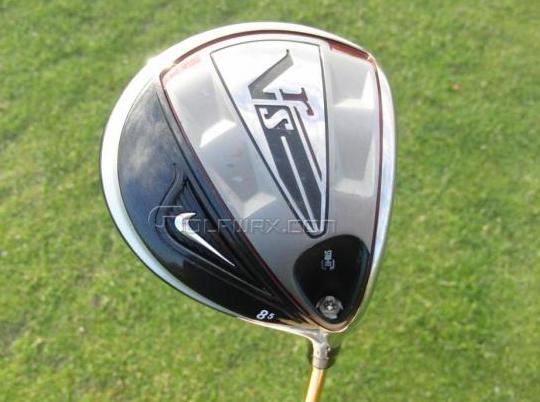
Often harshly critiqued during its years releasing golf equipment (right, Phil Mickelson?), Nike’s tenure in the club-and-ball business gets a gloss of nostalgic varnish, with many of its iron and putter designs continuing to attract admirers. Among the company’s driver offerings, the 2012 VRS — or VR_S, if you will — drew high marks for its shaping and toned-down appearance. The multi-thickness, NexCOR face was no joke either.
Check out our coverage from 2012 here.
Callaway RAZR Fit
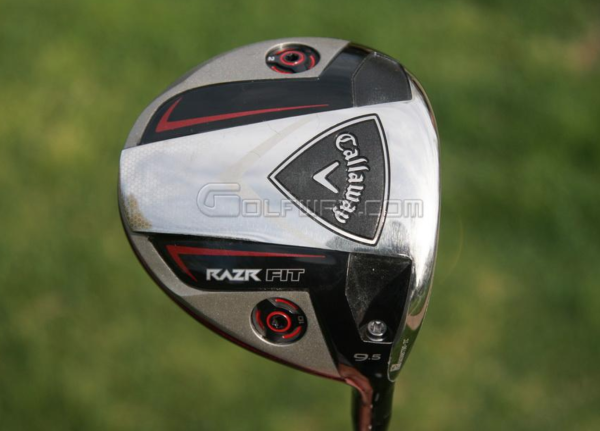
Callaway’s first foray into moveable weight technology (married with its OptiFit hosel) did not disappoint. With a carbon fiber crown, aerodynamic attention to detail, and variable and hyperbolic face technologies, this club foreshadowed the tech-loaded, “story in every surface” Callaway drivers of the present, AI-informed design age.
Cleveland Classic 310
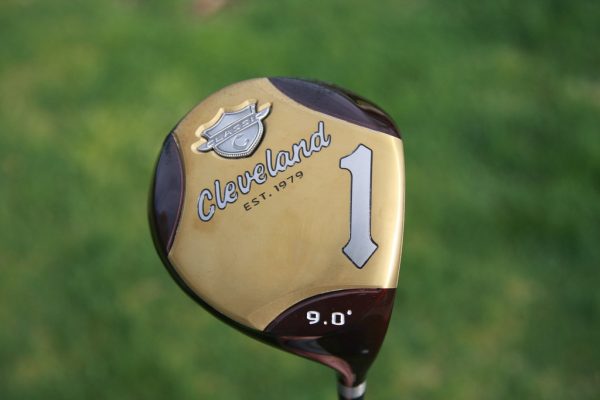
Truly a design that came out of left field. Cleveland said, “Give me a persimmon driver, but make it titanium…in 460cc.” Our 2012 reviewer, JokerUsn wrote, “I don’t need to elaborate on all the aesthetics of this club. You’ve seen tons of pics. You’ve all probably seen a bunch in the store and held them up close and gotten drool on them. From a playing perspective, the color is not distracting. It’s dark enough to stay unobtrusive in bright sunlight…Even my playing partners, who aren’t into clubs at all…commented on it saying it looks cool.” Long live!
Titleist 910
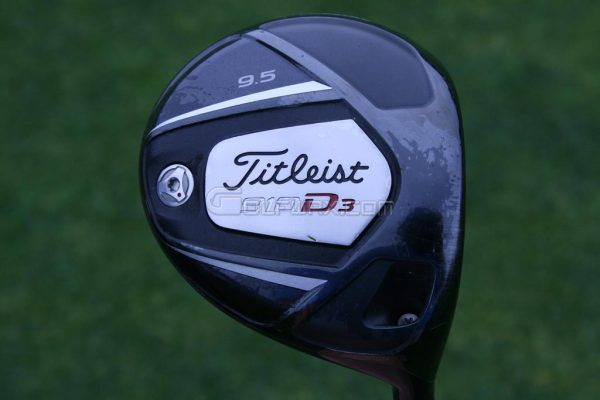
While there’s no disputing Titleist’s “Titleist Speed” era of drivers perform better than its 2010s offerings, sentimentality abounds, and there was something classically Titleist about these clubs, right down to the alignment aid, and the look is somewhere between 983 times and the present TS age. Representing a resurgence after a disappointing stretch of offerings (907, 909), The 910D2 was a fairly broadly appealing driver with its classic look at address and classic Titleist face shape.
TaylorMade RocketBallz
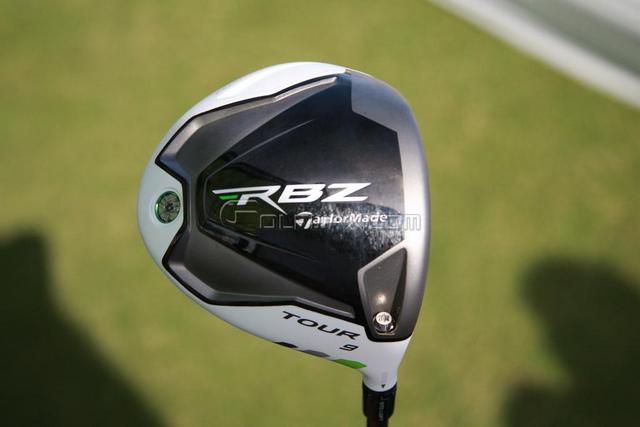
The white crown. The name. You either loved ‘em or you hated ‘em. TaylorMade’s 2012 offering from its RocketBallz Period boasted speed-enhancing aerodynamics and an Inverted Cone Technology in the club’s titanium face. Technology aside, it’s impossible to overstate what a departure from the norm a white-headed driver was in the world of golf equipment.
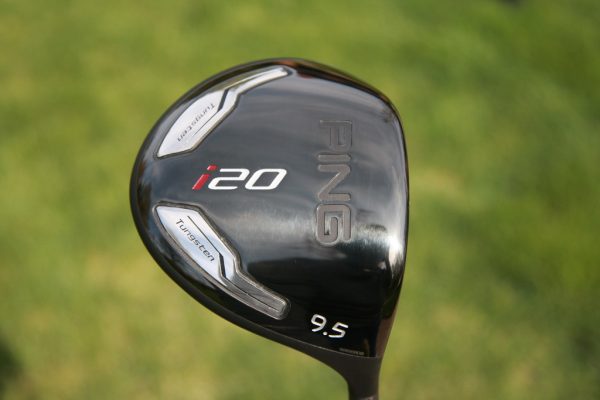
Long a quietly assertive player in the driver space, Ping’s i20 was more broadly appealing than the G20, despite being a lower-launch, lower-spin club. Ping drivers didn’t always have looks that golfer’s considered traditional or classic, but the i20 driver bucked that trend. Combining the classic look with Ping’s engineering created a driver that better players really gravitated toward. The i20 offered players lower launch and lower spin for more penetrating ball flight while the rear 20g tungsten weights kept the head stable. Sound and feel were great also, being one of the more muted driver sounds Ping had created up to that time.
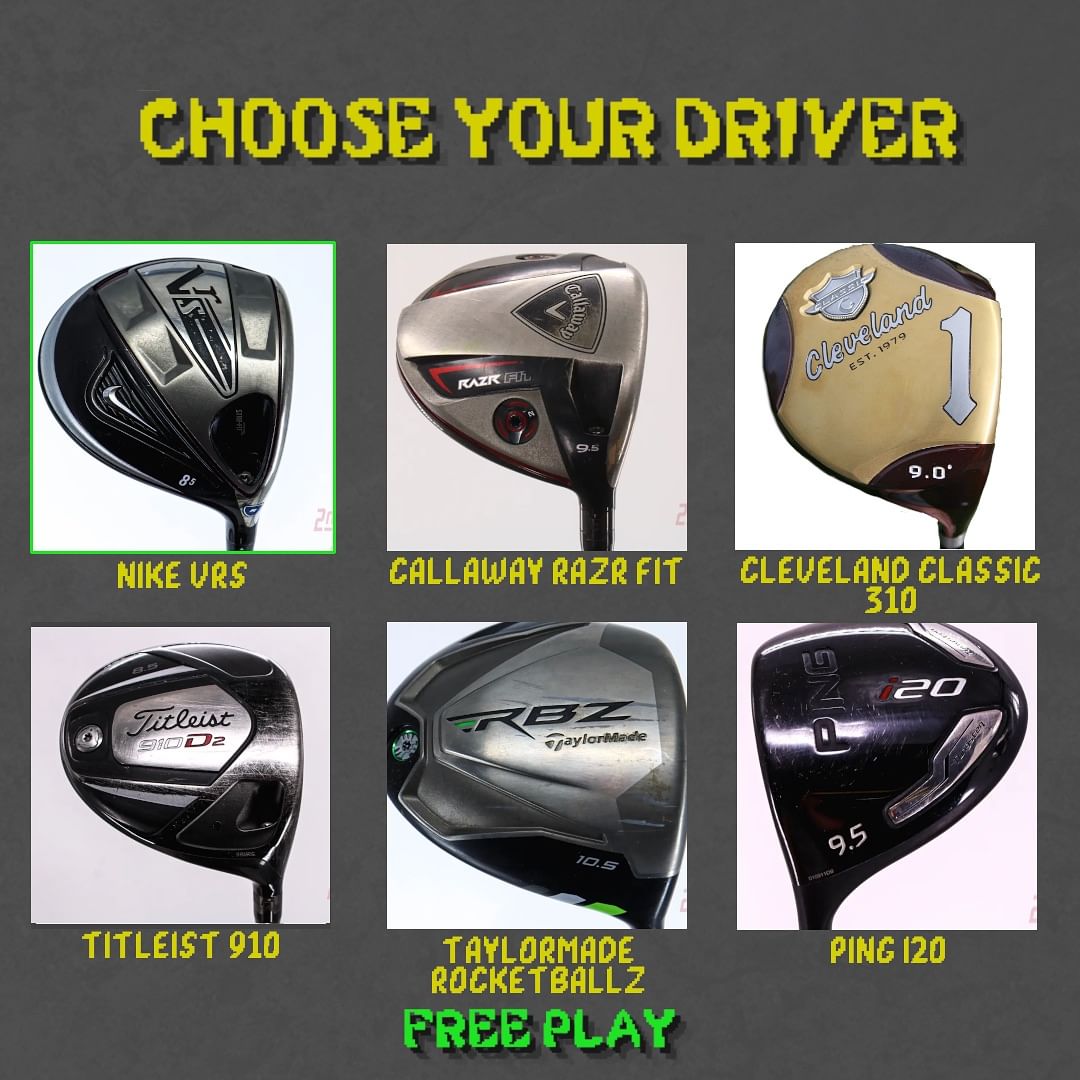
GolfWRXers, let us know in the comments who “your fighter” is and why!
At GolfWRX, we are a community of like-minded individuals that all experience and express our enjoyment of the game in many ways.
It’s that sense of community that drives day-to-day interactions in the forums on topics that range from best driver to what marker you use to mark your ball. It even allows us to share another thing we all love – buying and selling equipment.
Currently, in our GolfWRX buy/sell/trade (BST) forum, there is a listing for a Krank Formula fire driver with AutoFlex SF505 shaft.
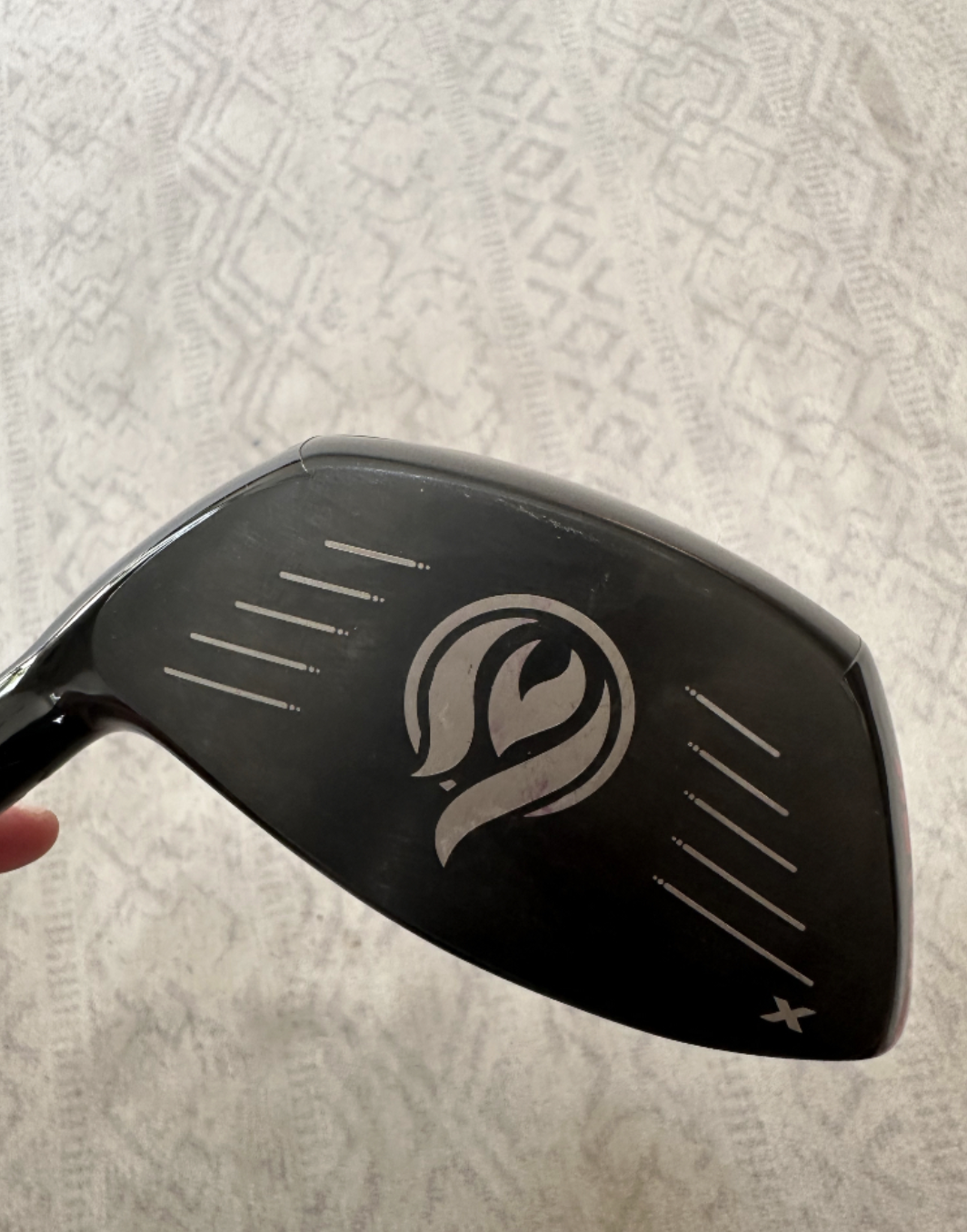
From the seller: (@well01): “Krank formula fire 10.5 degree with AUtoflex SF505. $560 shipped.”
To check out the full listing in our BST forum, head through the link: Krank Formula Fire driver with AutoFlex SF505 shaft
This is the most impressive current listing from the GolfWRX BST, and if you are curious about the rules to participate in the BST Forum you can check them out here: GolfWRX BST Rules
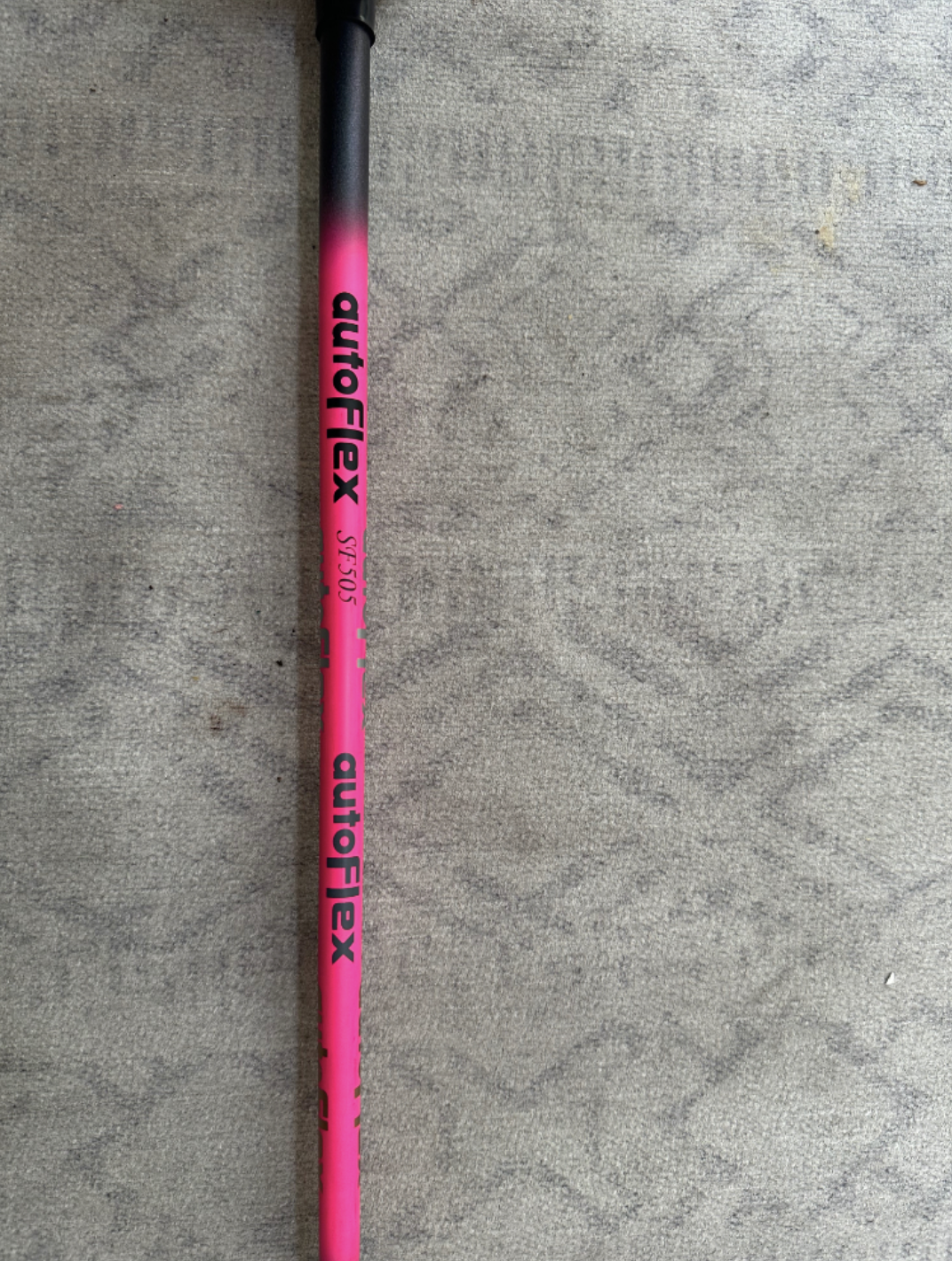
Whats in the Bag
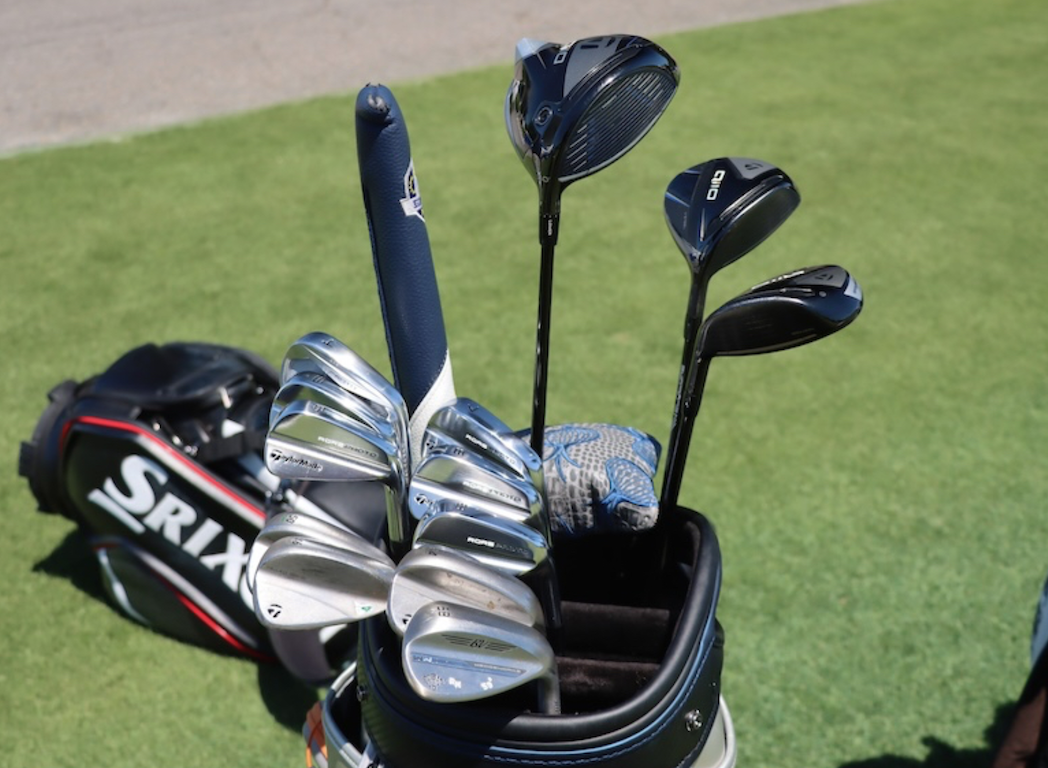
Rory McIlroy WITB
Driver: TaylorMade Qi10 (9 degrees @8.25) Buy here. Shaft: Fujikura Ventus Black 6 X (45 inches)
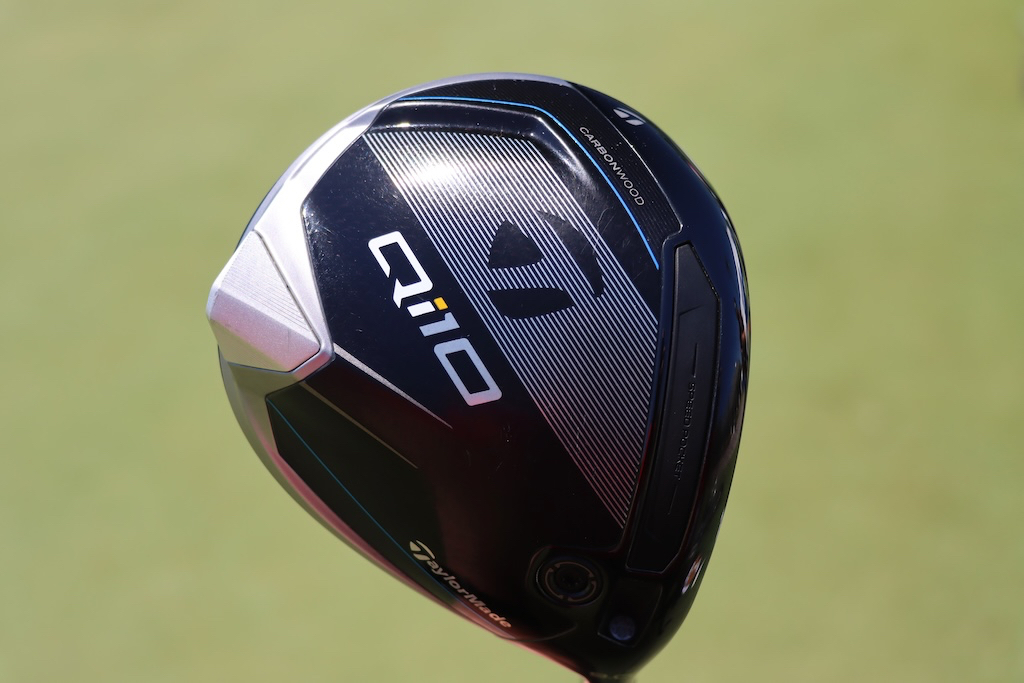
3-wood: TaylorMade Qi10 (15 degrees) Buy here. Shaft: Fujikura Ventus Black 8 X
Check out more in-hand photos of Rory McIlroy’s WITB in the forums.
5-wood: TaylorMade Qi10 (18 degrees) Buy here. Shaft: Fujikura Ventus Black 9 X
Irons: TaylorMade Proto (4), TaylorMade Rors Proto (5-9) Buy here. Shaft: Project X 7.0 (4-9)
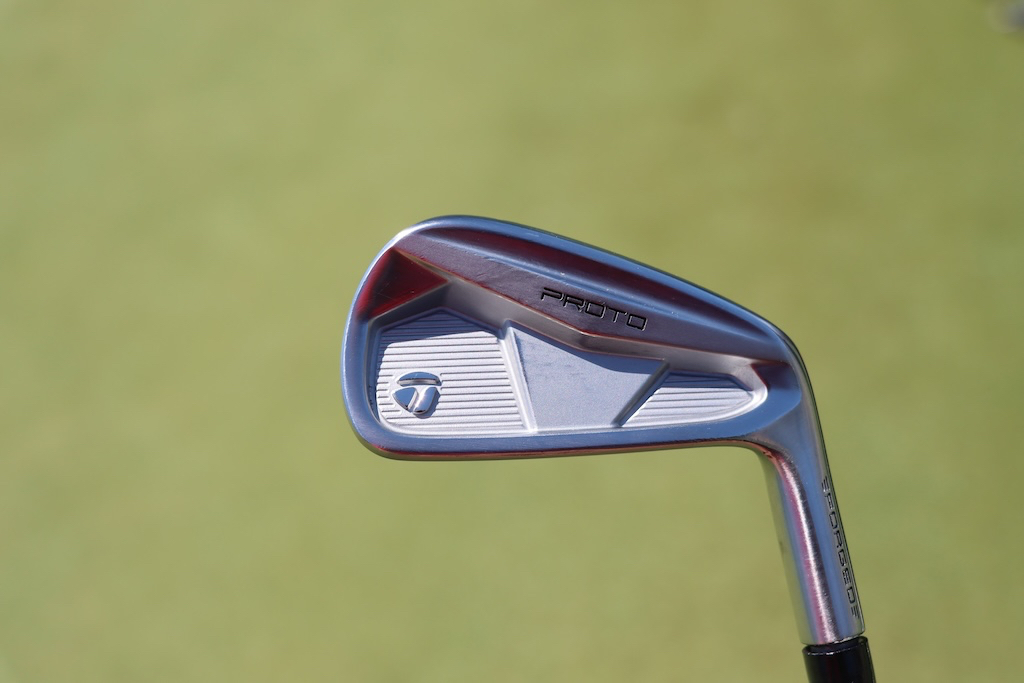
Wedges: TaylorMade MG4 (46-09SB, 50-09SB, 54-11SB) Buy here, Titleist Vokey Design WedgeWorks (58-K @59) Buy here. Shafts: Project X 6.5 (46-54), Project X 6.5 Wedge (60)
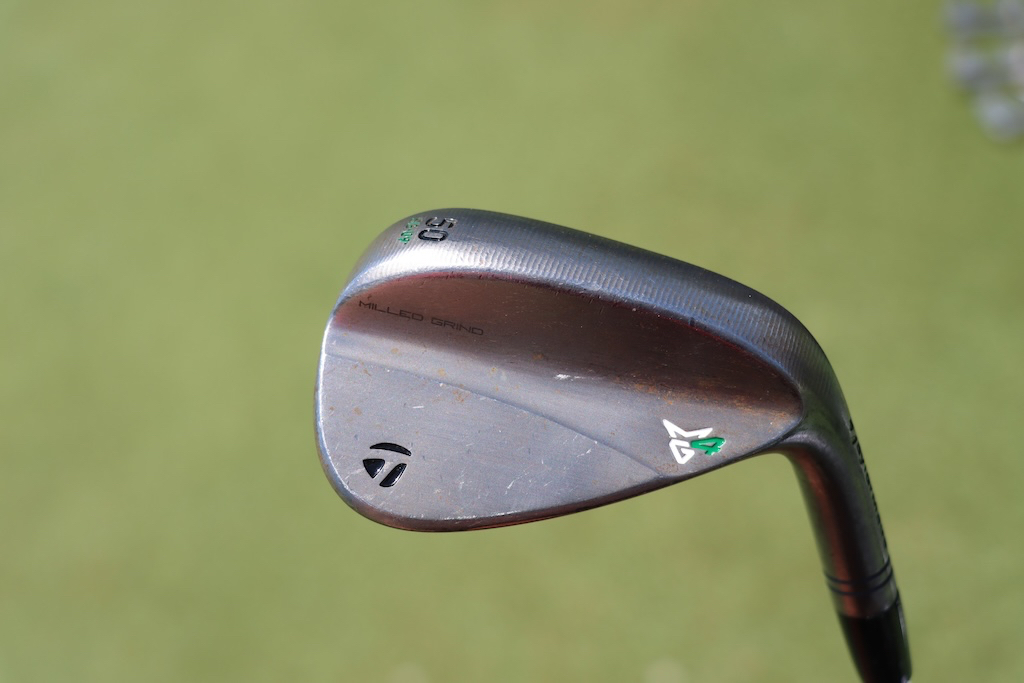
Putter: TaylorMade Spider Tour X3 Buy here. Grip: SuperStroke Zenergy Pistol Tour
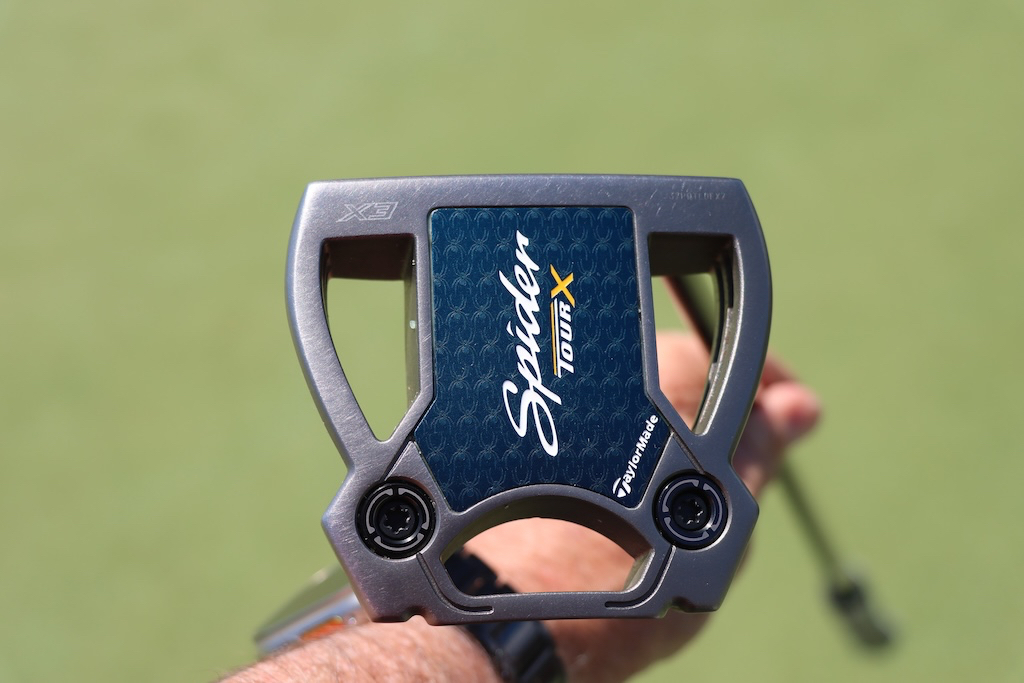
Ball: 2024 TaylorMade TP5x Buy here.
Grips: Golf Pride MCC
Shane Lowry WITB
- Shane Lowry what’s in the bag accurate as of the Cognizant Classic.
Driver: Srixon ZX5 Mk II (8.5 degrees) Buy here. Shaft: Mitsubishi Diamana D+ White 70 TX
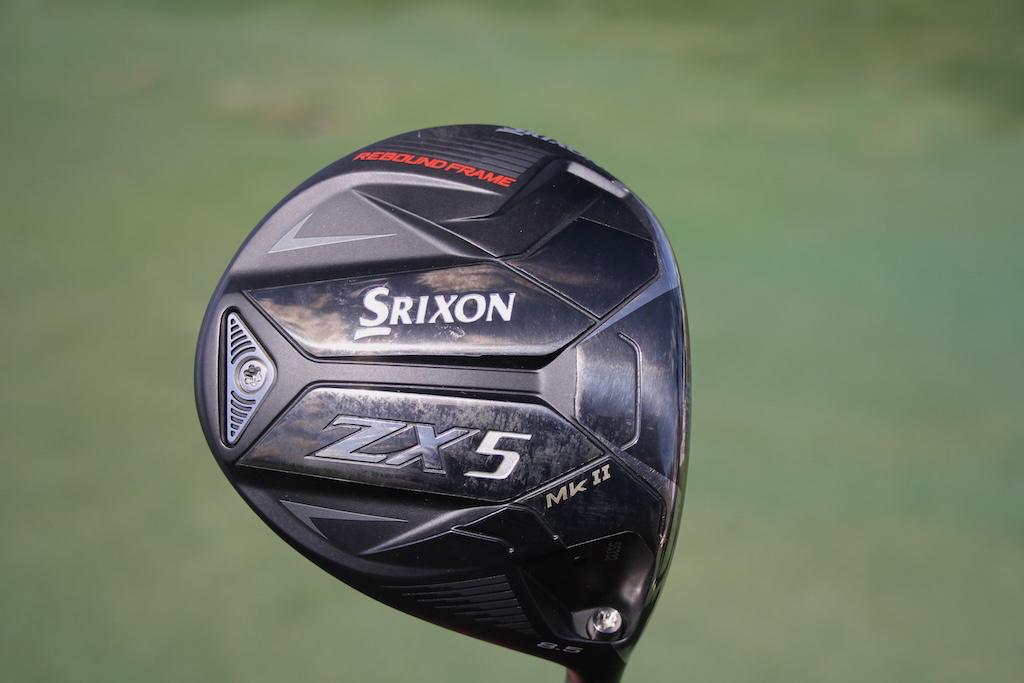
5-wood: TaylorMade Stealth Plus Buy here. Shaft: Graphite Design Tour AD DI 8 X
- Check out more in-hand photos of Shane Lowry’s clubs here.
Irons: Srixon ZX Utility (3, 20 degrees) Buy here, Srixon ZX5 Mk II (4, 5) Buy here, Srixon ZX7 Mk II (6-PW) Buy here. Shafts: Nippon N.S. Pro Modus3 Tour 120 X (3), KBS Tour 130 X (4-PW)
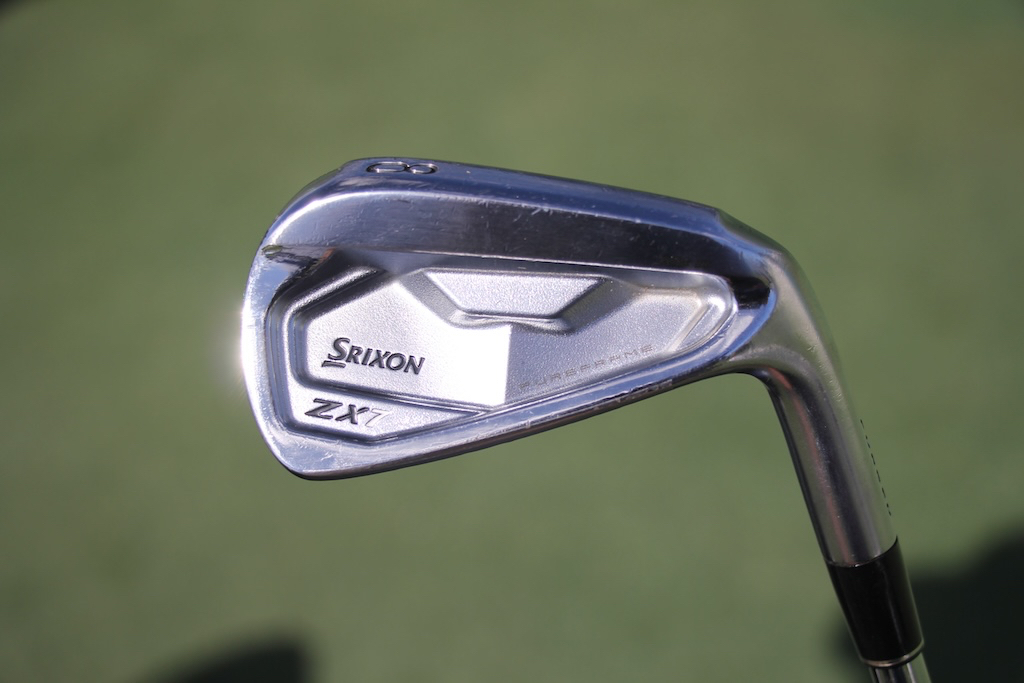
Wedges: Cleveland RTX 6 ZipCore Tour Rack (50-10 MID, 54-10 MID) Buy here, Cleveland RTX Full Face (58-8) Buy here. Shafts: KBS Tour Wedge X Black
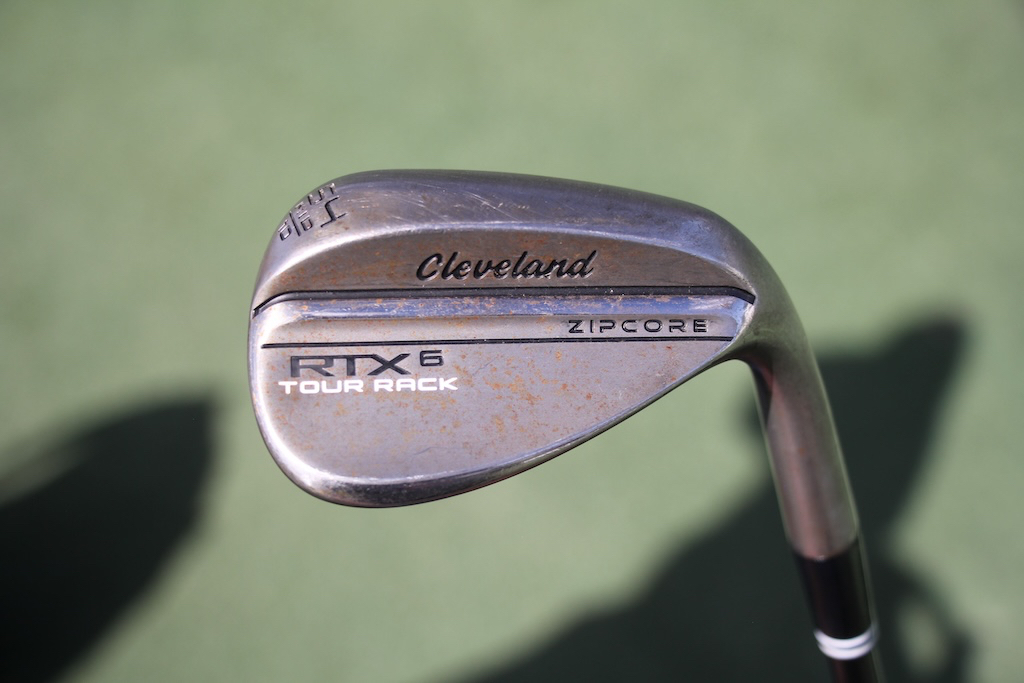
Putter: TaylorMade Spider Tour Z Buy here. Grip: SuperStroke Zenergy Pistol 1.0
Grips: Golf Pride Tour Velvet
Ball: Srixon Z-Star XV Buy here.
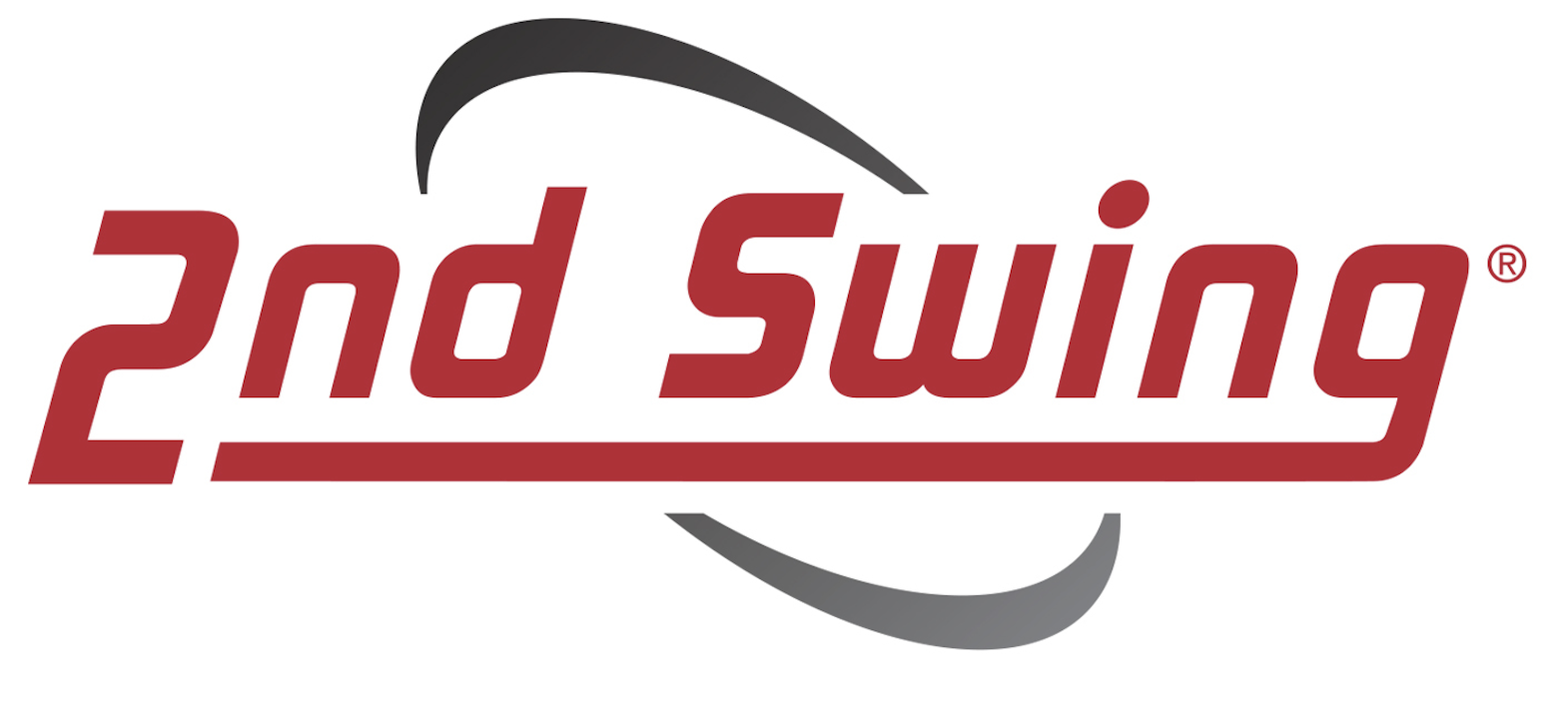
The winning WITB is presented by 2nd Swing Golf. 2nd Swing has more than 100,000 new and pre-swung golf clubs available in six store locations and online. Check them out here.

Dave Portnoy places monstrous outright bet for the 2024 Masters

John Daly stuns fans into silence with brutal opening tee shot on PGA Tour Champions

Things got heated at the Houston Open between Tony Finau and Alejandro Tosti. Here’s why

Justin Thomas on the equipment choice of Scottie Scheffler that he thinks is ‘weird’

Tiger Woods arrives at 2024 Masters equipped with a putter that may surprise you

‘Absolutely crazy’ – Major champ lays into Patrick Cantlay over his decision on final hole of RBC Heritage

Report: Tiger Woods has ‘eliminated sex’ in preparation for the 2024 Masters

Two star names reportedly blanked Jon Rahm all week at the Masters

2-time major champ announces shock retirement from the sport at age of 33

Report: LIV Golf identifies latest star name they hope to sign to breakaway tour
Rory McIlroy WITB Driver: TaylorMade Qi10 (9 degrees @8.25) Buy here. Shaft: Fujikura Ventus Black 6 X (45 inches) 3-wood:...

Steve Stricker WITB 2024 (April)
Steve Stricker WITB accurate as of the Zurich Classic. More photos from the event here. Driver: Titleist TSR3 (9 degrees, C4...

Alex Fitzpatrick WITB 2024 (April)
Alex Fitzpatrick what’s in the bag accurate as of the Zurich Classic. Driver: Ping G430 LST (10.5 degrees) Shaft: Fujikura...

Alejandro Tosti WITB 2024 (April)
Alejandro Tosti what’s in the bag accurate as of the Zurich Classic. Driver: Srixon ZX5 Mk II LS (9.5 degrees...

Neal Shipley presser ends in awkward fashion after reporter claims Tiger handed him note on 8th fairway

Brandel Chamblee has ‘no doubt’ who started the McIlroy/LIV rumor and why

What Irons Do PGA Tour Players Use? (September 2023 New Data)
Golf club brands improve their clubs yearly with new models and improved materials. Some golf clubs are affordable, and some are very expensive. Professional PGA golfers use the best of these models. You may be wondering what irons do PGA tour players use.
I researched 2018 to 2023 August and found 14 brands and 90 models of irons used by PGA pros. Professionals use the latest and greatest technology in these irons to improve their game.
You may look for the best irons available today to improve your game. Knowing about the irons professionals use can help you find the best among them.
So if you want to know what irons the pros use, this guide is for you. Let’s find out.
Most Common Iron Brands And Models On The PGA Tour
It doesn’t take much research to figure out which irons are best today. Players on the PGA Tour use the best brands and a specific model that is the best on the market.
The most used brand by players on the PGA Tour is Titleist, used by 76 out of 100 players. Other brands are Callaway (43 player), PING (36 player), TaylorMade (27 player), Srixon (22 player), Mizuno (8 player), Cobra (4 player), PXG (4 player), Wilson(4 player), Nike (3 player), Miura(3 player), Grindworks(2 player), Honma( 1 player), and New level (1 player).
The most common iron models used on the PGA Tour are the Titleist T100 iron (18 players), and the Titleist 620 MB (11 players) use as their core set.
Other popular models of irons used on tour are the PING i210 (10), and Callaway Apex TCB (10) players use as their core set.
Third is Srixon ZX7 (7 people).
And the last five models are used by six players as their core set. The models are TaylorMade P7TW, PING Blueprint, Titleist 620 CB, Titleist U-500, and PING iBlade.
What Irons Do PGA Tour Players Use
Taylormade:, grindworks:, does pga tour players use blades or cavity-backs.
PGA pros use both blades and cavity-backs to improve their game. A survey showed that 26% of PGA Tour players use complete sets of blades, 44% use cavity back irons, and 30% use a mix of cavity back irons and blade irons.
Many amateur golfers think the best players only use blade irons. It is not true.
We see these two irons still being used with success by golfers. Cavity-backs Irons are designed to be more forgiving. Blade irons allow the ball to contact the middle of the clubface for a better shot.
How Many Brands Of Irons Have The Most Variety Of Models?
Based on the current market, Titleist and TaylorMade are the two brands that offer the most variety of iron models. Titleist has a range of iron models, including the AP1, AP2, AP3, T100, T200, T300, and T400. TaylorMade also has an extensive range of iron models, including the P7, P7MC, P7MB, P770, SIM, SIM2, and SIM Max.
Other popular brands that offer a variety of iron models include Callaway, which has the Apex, Apex Pro, X Forged, Big Bertha, and MAVRIK lines, among others. Ping has the G425, i210, i500, and iBlade models, among others. Mizuno is also known for its wide range of iron models, including the MP-20, JPX921, and Hot Metal Pro.
Overall, many brands offer a variety of iron models, and the choice ultimately depends on personal preference, skill level, and playing style. It’s always best to try out different models and brands before purchasing to determine which irons suit your game the best.
Do PGA Tour Players Use Mixed Sets Of Irons?
Yes. PGA Professionals frequently use mixed sets of irons to optimize their performance on the course. It is uncommon for a professional to use the same model of irons throughout their entire set. This is because they spend a lot of time practicing and testing different models to find the ones that best fit their game in terms of performance and comfort.
However, you will not typically see PGA Professionals using different models and brands within their sets. This is because professional golfers are often sponsored by equipment manufacturers supplying them with the models they want to use. As a result, they will typically stick to one brand for their entire set of irons.
Conclusions
When answering the question, “What irons do PGA tour players use?” It is important to know that professionals are not limited to using specific models and brands of iron.
Each golfer has a different playing style and preferences, so they can choose whatever iron suits them best. Most players seem to have settled on the more expensive and advanced sets of irons technology has provided in recent decades. However, some still prefer the classic look and feel of a blade set.
Related articles:
- What Golf Wedges Do PGA Pros Use?
- Most Popular Putters Do The PGA Tour Golfers Use
- Most Popular Golf Balls That PGA Pros Use
- What Are The Most Popular 3-Woods That PGA Tour Players Use?
James Krig is a skilled content writer at Nattygolf, known for his engaging storytelling and passion for golf. With ten years of experience, James offers insightful articles that captivate and educate readers. As a dedicated golfer, he brings authenticity and expertise to his writing, making him a valuable asset to the Nattygolf team and the golf community.

- Remember me Not recommended on shared computers
Forgot your password?
Which Pros Use Cavity Backs?
By rwilcox October 17, 2007 in Equipment
- Reply to this topic
- Start new topic
Recommended Posts
Which PGA touring pros are currently using cavity back irons, and which ones do they use?
Link to comment
Share on other sites.
- Created 16 yr
- Last Reply 3 yr
Top Posters In This Topic

Popular Days
MJisGOAT 5 posts
CoolPercussion 3 posts
Hit em good 2 posts
andrieddle 2 posts
Mar 16 2017
Oct 17 2007
Mar 14 2017
Nov 29 2007

good subject....interested too.
bustadrives
The last stats that i heard which were provided by Titleist said that 70-80% weekly were playing cavity backs. Notable players are Phil Mickelson, Retief Goosen, Jim Furyk and many more.

Steve Stricker = Titleist 755's
Titleist's website has a number of their tour players and the clubs they play.

almost all of them..
those that don't that come to mind.
geoff olgilvy
justin leonard
Some may be outdated now.
Lucas Glover:
Camilo Villegas:
Chad Campbell:
Joe Ogilvie:
Just to name a few of the many out there.

almost all of them.. those that don't that come to mind. jason gore geoff olgilvy adam scott justin leonard john daly Tiger
off the top of my head, add Justin Rose and Sergio Garcia, they were swinging the TP MBs at the Tour Championship...

Jeff Quinney always used ping i series. He is switching to the 4dx CB next year, which was designed to fit him.

every ping player:
Most tour players are using cavity backs but I wonder why. How much is because they want to and how much is because they get paid to? I've hit both lately and don't find that much difference between cavity backs and blades.

18th Legion
It would be easier to list those who don't use a cavity back of some type. Less than 30% on the PGA Tour use blades.
Callaway Paradym 10.5 Ventus 5R - Soon PING G430Max 10K or TaylorMade Qi10 Max? TaylorMade Stealth Tour 4 Wood Ventus - When available the Qi10 Tour 4 wood TaylorMade Qi10 Rescue 4, 5 Ventus TaylorMade P790 (2021) 6-9 DG95
TaylorMade P770 PW GD115 TaylorMade 50, 55, 60 DG200 TaylorMade / Balboa / Berwick TaylorMade Burner TP LDP / TP5x Ogio Grom / Edge / Nexos (All new old stock)

Most tour players are using cavity backs but I wonder why. How much is because they want to and how much is because they get paid to? I've hit both lately and don't find that much difference between cavity backs and blades. Steve
If you hitting the sweet spot almost all the time there want be. :good: :cheesy:
But for me...all the help I can get!
But really, we need Darrell survey type stats on this.
Callaway GBB Epic 10.5* - HZRDUS 5.5
Callaway GBB Epic 15* - HZRDUS 6.0
Adams Idea Pro 18* - Proto 80-S Adams Idea A7 22* - Axivcore 85 S
Nike Pro Combo OS: 5-PW - Rifle 5.5
TaylorMade MG Hi-Toe 52* & 58* Big Foot - HI-REV 2.0 Yes! Callie
Vice Golf Tour
FILL IN the iron for the player
Phil Mickelson
Vijay Singh
Steve Stricker
Rory Sabbatini
Zach Johnson
Sergio Garcia
Aaron Baddeley
Mark Calcavecchia
Geoff Ogilvy
Woody Austin
Scott Verplank
Hunter Mahan
Brandt Snedeker
Charles Howell III
Justin Rose
Padraig Harrington
Boo Weekley
John Rollins
Stewart Cink
Steve Flesch
Robert Allenby
Luke Donald
Brett Wetterich
Heath Slocum
John Senden
Henrik Stenson
Jerry Kelly
Camilo Villegas
Jonathan Byrd
Stuart Appleby
Trevor Immelman
Carl Pettersson
Justin Leonard
Arron Oberholser
Chad Campbell
Nick Watney
Charley Hoffman
John Mallinger
Angel Cabrera
Bubba Watson
Mark Wilson
Lucas Glover
Anthony Kim
Bo Van Pelt
Jeff Quinney
Rod Pampling
Sean O'Hair
Billy Mayfair
Ian Poulter
George McNeill
Nathan Green
Nick O'Hern
Kevin Sutherland
Joe Ogilvie
Ryuji Imada
Jose Coceres
Vaughn Taylor
Troy Matteson
Peter Lonard
Stephen Ames
Paul Goydos
Dean Wilson
Kenny Perry
Rocco Mediate
Bernhard Langer
Robert Garrigus
Steve Marino
Brian Davis
Bart Bryant
D.J. Trahan
Will MacKenzie
Retief Goosen
Charles Warren
Jesper Parnevik
Brian Bateman
Tim Petrovic
Davis Love III
Stephen Leaney
Fredrik Jacobson
Johnson Wagner
Jose Maria Olazabal
Michael Allen
Chris DiMarco
Daniel Chopra
Shaun Micheel
Mathew Goggin
Steve Elkington
Tom Pernice, Jr.
Jeff Overton
Tommy Armour III
Cliff Kresge
Matt Kuchar
Jeff Maggert
Briny Baird
Ryan Armour
J.B. Holmes
Mathias Gronberg
Kevin Stadler
Brett Quigley
- 1 month later...
this is a very good question however you have to account the players like boo weekley and zach johnson and whoever else may use mixed sets like boo weekley will play mb 5 and up but 3 and 4 are ta 7 and something else i believe. i think zach plays a blend of cb695s and a 755 but regardless there are so many variable to take into account players are getting far more specific than what they used to. and for good reason too. thats just my two cents lol.
pocketfulladoubles
[quote name='juststeve' post='757728' date='Oct 17 2007, 11:27 AM']Most tour players are using cavity backs but I wonder why. How much is because they want to and how much is because they get paid to? I've hit both lately and don't find that much difference between cavity backs and blades. Steve[/quote] I think that when every shot could be worth tens of thousands of dollars, they play with the club that gives them the most forgiveness with the amount of workability they need. Us weekend players can chose to do otherwise since $$$ and really score don't matter so much.

progolf4life
[quote name='pocketfulladoubles' post='806999' date='Nov 29 2007, 04:26 PM'][quote name='juststeve' post='757728' date='Oct 17 2007, 11:27 AM']Most tour players are using cavity backs but I wonder why. How much is because they want to and how much is because they get paid to? I've hit both lately and don't find that much difference between cavity backs and blades. Steve[/quote] I think that when every shot could be worth tens of thousands of dollars, they play with the club that gives them the most forgiveness with the amount of workability they need. Us weekend players can chose to do otherwise since $$$ and really score don't matter so much. [/quote] Sure pros hit bad shots every know and then but think about how many times they hit the center of the clubface....they hardly ever miss it even on a bad swing they usually just pull/push the ball but they still hit the center of the clubface. Pros don't hardly need forgiveness (depending on where their strong points are in their game...ballstriking...etc...). As a lot of others have said, a lot of the younger guys are growing up with cavity backs so that is what they stick with/feel comfortable and a lot of the other players that grew up with blades stick with the am feel comfortable with them. I don't think were gonna get the perfect answer to why they play blades unless you were to actually talk to each pro inviditually and ask their opinions on this topic.
Sergio is switching to the R7 tp's, so he is now a cavity back player as well
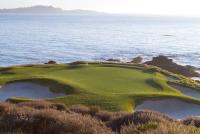
[quote name='juststeve' post='757728' date='Oct 17 2007, 02:27 PM']Most tour players are using cavity backs but I wonder why. How much is because they want to and how much is because they get paid to? I've hit both lately and don't find that much difference between cavity backs and blades. Steve[/quote] They really don't get paid to play a cavity back.....they get paid to play a brand of iron. Players that are using Titleist cavity backs are doing so because that is what they choose to use. They would be allowed to use any Titleist iron they want to.
Ping G430 MAX 10K 2024 Ventus Blue Callaway Ai Smoke Max 2024 Ventus Blue
Ping G430 19deg hyb Blue Ventus HB
Ping G430 22 deg hyl Blue Ventus HB Mizuno Pro 245 5-pw Axiom 105s Mizuno S23 50-54-58 LAB DF2.1 Broomstick
- 9 years later...
CoolPercussion
Bump for an update

Really??!! Why?
Go click on WIITB and have at it
TSR3 9* | Ventus Blue TR 6X
TSR2+ 13* | Ventus Red 7X
T200 2-Iron | Ventus Blue HY 10X
T150's 3-PW | DG TI X100
50.12F | DG TI X100
54.12D | DG TI S400
60.08M | DG TI S400
TM MySpider X Blk on Blk 34"
Titleist Pro V1

Blade Junkie
CP - you might enjoy this link to Riley King's Persimmon Golf Today website ... http://persimmongolftoday.org/archives/2964
Riley did a load of great analysis on this back in 2014. Not exactly current data of course, but it will most probably be in the right ball park even today. 23% of the OWGR Top 100 were playing pure blades back then, and another 12% were bagging a combo set. So 65% playing pure cavity backs !
[i]"Don't play too much golf ... two rounds a day are plenty" [/i] [b]Harry Vardon[/b] (1870-1937)
thanks I was looking for something like this. I know about the WITB but clicking on each player is tedious.
Seems like it's becoming more and more of an anomaly for one to play blades on tour. You can nearly name the players on one hand (pun intended).
@therealping
Pros usually travel with blades and the cavity backs, i remember Darren Clarke saying he went with how his ball striking was and in fairness he flushes it. Jordan Speith uses API2 irons, loves a cavity back.
Rory has been using blades his whole life- lad

Not sure this is right. Seem to be an awful lot of winners WITB in the last 12 months that are playing blades.
Guess you didn't get the pun intended part. But the gap is narrowing, and the ratio is trending heavily cavity > blade.
I did a slight certainly non comprehensive look into the top 50 OWGR, and I may be mistaken by a few here and there but the fact and trend still remains relevant that the far majority are playing cavity back style irons. I calculate that roughly 70% of the top 50 OWGR play some sort of cavity style iron. A blade is a blade as in no cavity whatsoever, so an iBlade or an Apex pro etc. are definitely not considered a blade.
The trend has nearly lopsided compared to when this thread was initially started (2007).

I wonder who would rise to the top of ball strikers if pros had to play blades...
Option 1 Ping G400 LST 8.5 Tour-X Callaway Big Bertha 816 Alpha 16 AD-DI 8x black Nike VR Pro 3 hybrid project x 6.0 Adams XTD Forged 4-PW Fujikura MCI 120S Adams MB2 GW Callaway Mac Daddy Forged 60 Toulon Garage Atlanta Black Pearl Ping 4 Series Tour Edition White/ Bridgestone 2014 Tour Bag Option 2 Taylormade 2016 M1 10.5 Whiteboard Flowerband 7x 16 Taylormade M1 5 wood AD-TP 7s Ping Anser 20 stock stiff Taylormade 2016 M2 Tour XP105 stiff Cleveland RTX 2.0 52 deg raw Titleist Vokey Prototype 58 T Grind Carbon Ringo Raw Whisky [url="http://www.gamegolf.com/player/pierso2"]http://www.gamegolf.com/player/pierso2[/url]
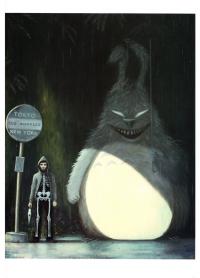
Sure DJ, Rory might rise up a bit more, but what would happen with J-Day, Jordan Spieth, Stenson, Bubba, etc? I know they're all great ball strikers but do you think any dark horses would rise up and the big names would fall? Guys like Schwartzel and Luke Donald might creep back up!
Join the conversation
You can post now and register later. If you have an account, sign in now to post with your account.

× Pasted as rich text. Paste as plain text instead
Only 75 emoji are allowed.
× Your link has been automatically embedded. Display as a link instead
× Your previous content has been restored. Clear editor
× You cannot paste images directly. Upload or insert images from URL.
- Insert image from URL
- Submit Reply
Recently Browsing 0 members
- No registered users viewing this page.

2024 PGA Championship - Discussion and Links to Photos
GolfWRX_Spotted posted a topic in Tour and Pre-Release Equipment , Monday at 06:01 PM

2024 Wells Fargo Championship - Discussion and Links to Photos
GolfWRX_Spotted posted a topic in Tour and Pre-Release Equipment , May 6

2024 CJ Cup Byron Nelson - Discussion and Links to Photos
GolfWRX_Spotted posted a topic in Tour and Pre-Release Equipment , April 29

2024 Zurich Classic - Discussion and Links to Photos
GolfWRX_Spotted posted a topic in Tour and Pre-Release Equipment , April 22

2024 RBC Heritage - Discussion and Links to Photos
GolfWRX_Spotted posted a topic in Tour and Pre-Release Equipment , April 15
Popular Now

By MattyO1984 Started Monday at 10:15 AM
By kiawah Started April 18
Welcome. Register Here.
Come on in, the water is fine...
Recent B/S/T

jcannan14 · Started 1 hour ago
benbli3 · Started 1 hour ago

FairwayzNGreenz · Started 8 hours ago

Jut · Started 8 hours ago

wrayner · Started 9 hours ago

GolfWRX_Spotted · Started December 5, 2023
- Existing user? Sign In
The Bag Room
- Tour & Pre-Release Equipment
- WRX Club Techs
- Golf Sims/GPS/RFs/Apps
- Golf Style and Accessories
The Club House
- General Golf Talk
- Classic Golf And Golfers
- Courses, Memberships and Travel
- Groups, Tourneys, and Partners Matching

WRX Academy
- Instruction & Academy
- Rules of Golf and Etiquette
- Swing Videos and Comments
Classifieds & ProShops
- Deal/No Deal
Website Help
- Forum Support
- BST AD Help Forum
My Activity Streams
- BST/Deal Activity
- All Activity
- Unread - No BST/19th
- Subscriptions
Classifieds
- For Sale Forum
- Wanted to Buy
- Mall of Pro Shops
- Where Did My Ad Go?
- Trade In Tool
- Create New...
Subscribe to our newsletter for golf improvement tips and great deals! Sign up today!
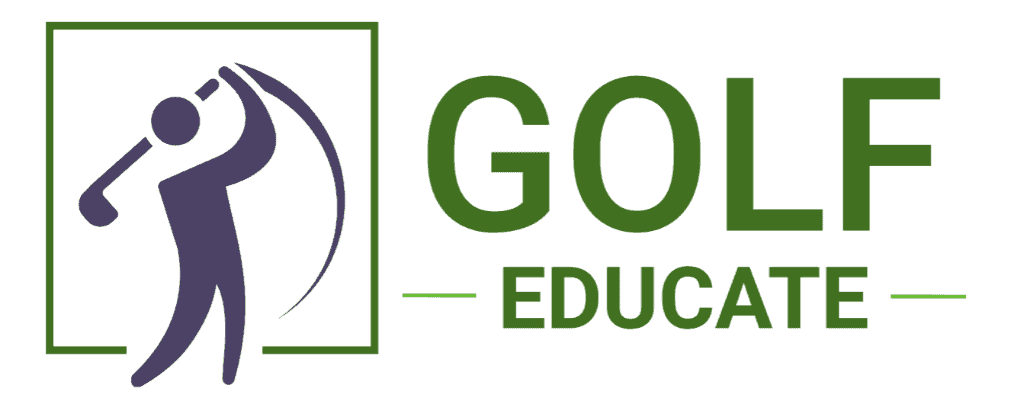
7 Most Popular Irons On The PGA Tour (2023 Update)
Nowadays, the scrutiny on what golf irons the pros are using is greater than ever, and club manufacturers are more aware of this perception by the golf playing and golf watching audiences around the world. So, what are the most popular irons on the PGA Tour?
The 7 most popular irons on the PGA Tour are :
While drivers often take center stage, the real focus is on the irons that the pros use, as those constitute a larger percentage of shots played and hit during tournaments than those of drivers, but remember, a putter is the club used the most.
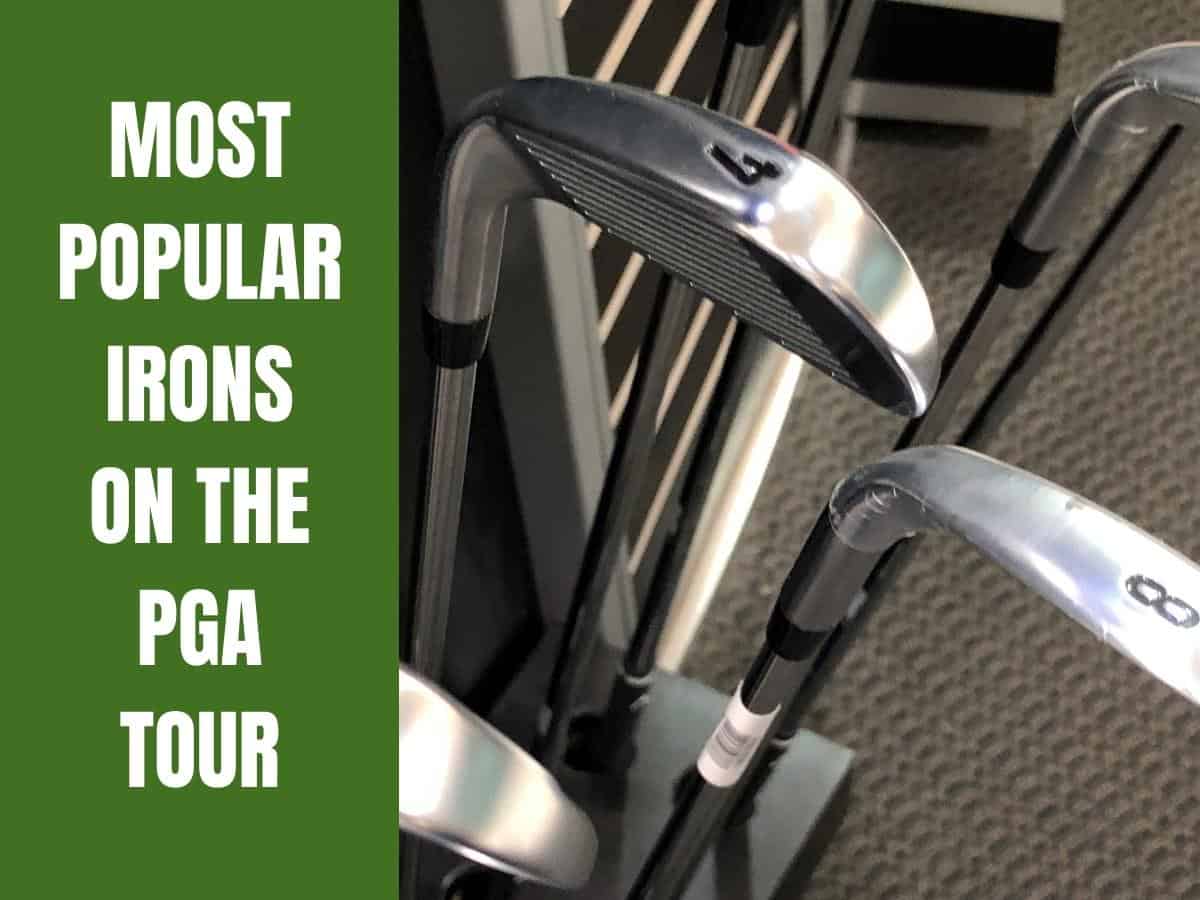
And to find out the most popular irons on the PGA Tour, keep reading!
PGA Tour Players Mix And Match Their Irons
Many PGA Tour players don’t have complete sets of one brand of irons but mix and match between brands and clubs based on what irons they prefer. So shorter irons could be one brand and longer irons another.
You may also find that some players have a complete set of irons from 4-PW and then have a different brand for a three iron or driving iron. The stats below are based on the popularity of the iron brands found in the bags of tour pros, and you may find some players using two different iron brands.
With this discussion, we are talking about irons only and not wedges, as that would be a separate discussion on its own.
Most Popular Irons On The PGA Tour
The most popular irons on the PGA Tour are Titleist, Callaway, Ping, TaylorMade, Srixon, Mizuno, and PXG. These are the most common irons found in the bags of PGA pros currently on tour, and the differences between the most popular and the least popular are significant.
So, let’s start with the least popular.
#7 – PXG Irons
PXG is a brand making slow but steady inroads into the PGA Tour player’s choice of clubs, and five top-ranked PGA Tour pros use PXG irons in their bag. Players include Jason Kokrak, Luke List, Joel Dahmen, James Hahn, and Zach Johnson.
PXG ranks higher in popularity than Cobra or Wilson on tour and some newer brands like Miura, Honma, or Bridgestone.
Which PXG Irons Do These PGA Tour Pros Use?
- Luke List and James Hahn play PXG 0311 T Gen 4 irons.
- Jason Kokrak uses the PXG 0311 T Gen 4 irons.
- Joel Dahmen uses the PXG 0211 ST irons.
- Zach Johnson plays the PXG 0311 T Gen 1.
Who Is PXG Golf?
PXG (Parsons Extreme Golf) was founded in 2014 by Bob Parsons, most well known as the founder of Go-Daddy. His vision was to make “the sexiest, most forgiving golf clubs that launch higher, go farther, feel softer, and have a sweet spot the size of Texas!”
PXG currently holds over 200 patents and focuses on providing clubs that look like blades but “feel like butter.” With the backing of Dr. Parsons and limitless resources, they began to research the various alloys and materials to produce the world’s finest golf clubs.

Even though PXG irons do come at a price, the design of their 0311 sets of irons is turning heads and getting great reviews from players and golf influencers alike.
Using a hollow construction, as many of the new irons are, and filling it with a thermoplastic-elastomer filling and tungsten weights on the perimeter provides forgiveness and great speed and sound off the clubface.
Whether for high/medium handicappers or more adept players, PXG 0311 irons are certainly delivering on the Parsons promise.
You can check out a wide selection of PXG irons at Global Golf. They also have a ‘used’ selection of irons from owners who trade in their used clubs when upgrading. You can pick up some good deals here if you have a lower budget or like to change your clubs regularly.
#6 – Mizuno Irons
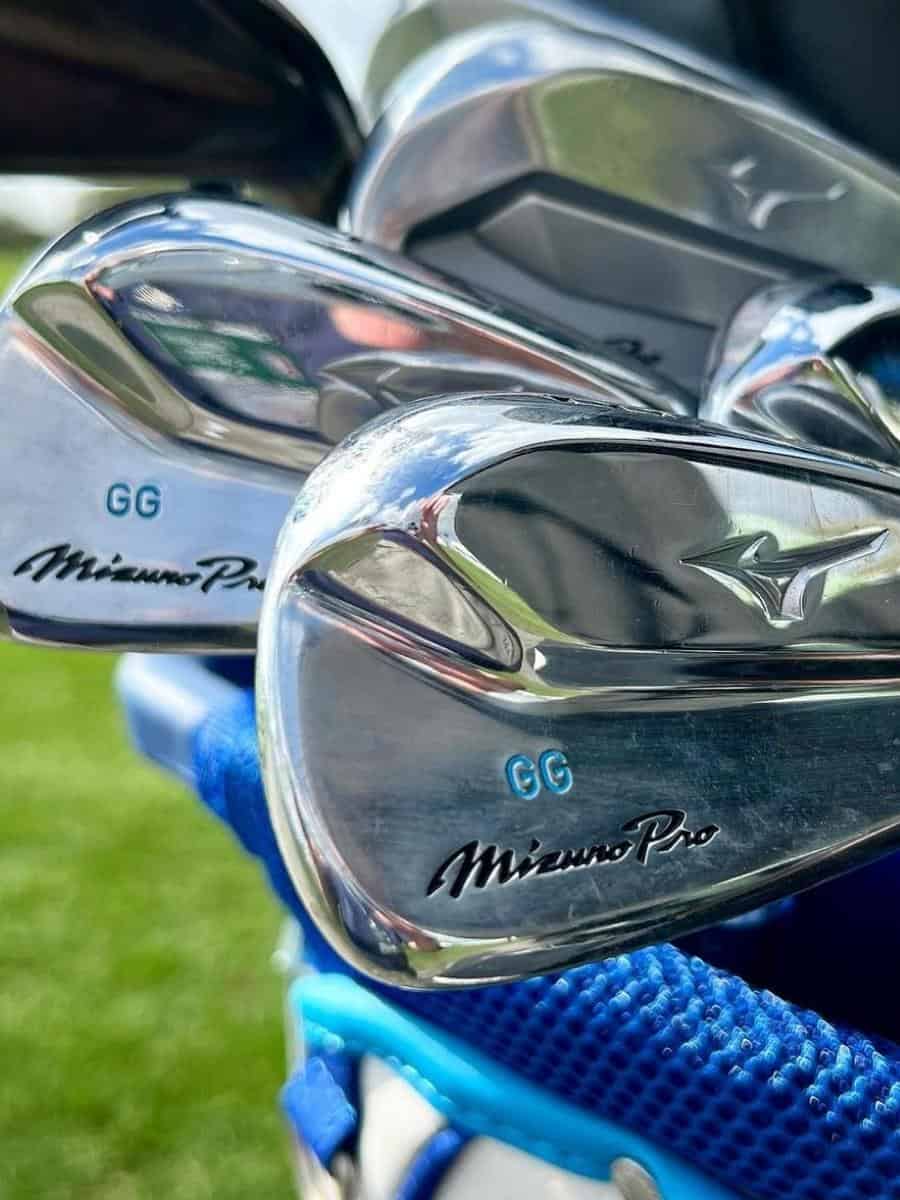
Coming in at no.6 is a well-known and long-standing brand originating in Japan. It arguably produces some of the finest irons for the PGA Tour and amateur golfers. Mizuno ranks slightly higher in popularity than PXG, but there is a big gap between Mizuno and the no.5 ranked irons, Srixon.
Currently, seven players on the PGA Tour use Mizuno irons: Luke Donald, Paul Casey, Matt Jones, Lucas Glover, Jazz Janewattanond, Keith Mitchell, and Cameron Smith.

Which Mizuno Irons Do These PGA Tour Players Use?
Looking in the bag, you will find a mix of sets from the JPX 919 irons to the Pro Fli Hi and MP 5 and Pro 221 and Pro 225 irons. The players in this list use the following irons:
- Paul Casey – Mizuno MP-5 and Mizuno JPX919 Hot Metal Pro
- Matt Jones – Mizuno Pro Fli-Hi
- Lucas Glover – Mizuno JPX919 Tour
- Jazz Janewattanond – Mizuno JPX919 Tour
- Keith Mitchell – Mizuno Pro 225 and Mizuno Pro 221
- Cameron Smith – Mizuno Pro Fli-Hi
- Luke Donald – Mizuno Pro 225, Mizuno Pro 221, and Muzuno Pro Fli-Hi
Mizuno, as a brand, has produced clubs for both professionals and mid to low handicappers offering some forgiveness and providing superb control for ball shaping and a great feel off the clubface.
If you’re in the market for Mizuno irons, check out the Global Golf website, where you can find the latest models and often at the best prices. Amazon also has a selection of Mizuno iron sets.
#5 – Srixon Irons
Japanese brand Srixon is a subsidiary of Sumitomo Rubber company that owns Dunlop Sport. Srixon holds more patents for golf balls than any other brand in the market; while not as popular as the Pro V1, Srixon balls are well respected and played by quite a few pros. I am a regular Srixon ball user myself.
Twelve players on the PGA Tour are currently using Srixon irons: Shane Lowry, Sepp Straka, Scotty Scheffler, Ryan Palmer, Marcus Armitage, Martin Laird, Hideki Matsuyama, Keegan Bradley, Harold Varner III, Graeme MacDowell, JJ Spaun, and Brooks Koepka.
Which Srixon Irons Do These PGA Tour Players Use?
Looking through the bags of these players, you will find a mix of irons, with the ZX 7 irons being the most popular in this group. There are also the ZX 5 irons, the Z Forged, Z 785, and Z U65 irons.
Except for Martin Laird, Ryan Palmer, Hideki Matsuyama, and Graeme MacDowell, all the other players use the ZX 7 and ZX 5 irons. Martin Laird and Ryan Palmer use the Z 785’s, MacDowell also uses the Z 785’s and the Z 745, Matsuyama uses the Srixon Z-Forged irons, and Spaun uses the Z U65 irons.
If you want to check out the best Srixon irons that are popular right now, you can find them at Global Golf. You can also check out the current pricing of Srixon irons over on Amazon.

#4 – TaylorMade Irons
As one of the golfing world’s most well-known and iconic brands, TaylorMade scooped possibly the biggest star ever when Tiger Woods signed to them and started to use their P7TW irons after Nike announced they would no longer be making clubs.
TaylorMade also produces some high-quality golf balls and while they are not in the same popularity league as the Pro V1 – let’s face it, which golf ball is – some of the best use their irons in the game.
With 18 players on the PGA using TaylorMade, they are far ahead of Srixon in the popularity ratings. Some of the big names on tour using TaylorMade irons include the likes of Collin Morikawa, Dustin Johnson, Jason Day, Daniel Berger, Justin Rose, Martin Kaymer, Rory McIlroy, Tiger Woods, Sergio Garcia, and Tommy Fleetwood.

Which TaylorMade Irons Do These PGA Tour Players Use?
TaylorMade has a variety of irons that feature PGA players’ bags. A popular one is the P7TW irons found in the bags of players like Tiger Woods, Tommy Fleetwood, Martin Kaymer, Scotty Scheffler, and Lucas Herbert.
You can read more about Tiger’s irons in this article; What Irons Does Tiger Woods Use ?
The other popular irons from TaylorMade are the P7MC (available on Amazon), and those can be found in the bags of players like Justin Rose, Mathew Wolf, and Robert McIntyre. The P770 irons (also on Amazon) have a good following with PGA Tour players, and names like Rory McIlroy, Collin Morikawa, and Harry Higgs feature these irons in their bags.
I do like the P770s, but maybe I’m a little biased as my eldest son uses these clubs. Like me, he plays left-handed and seems well suited to them.
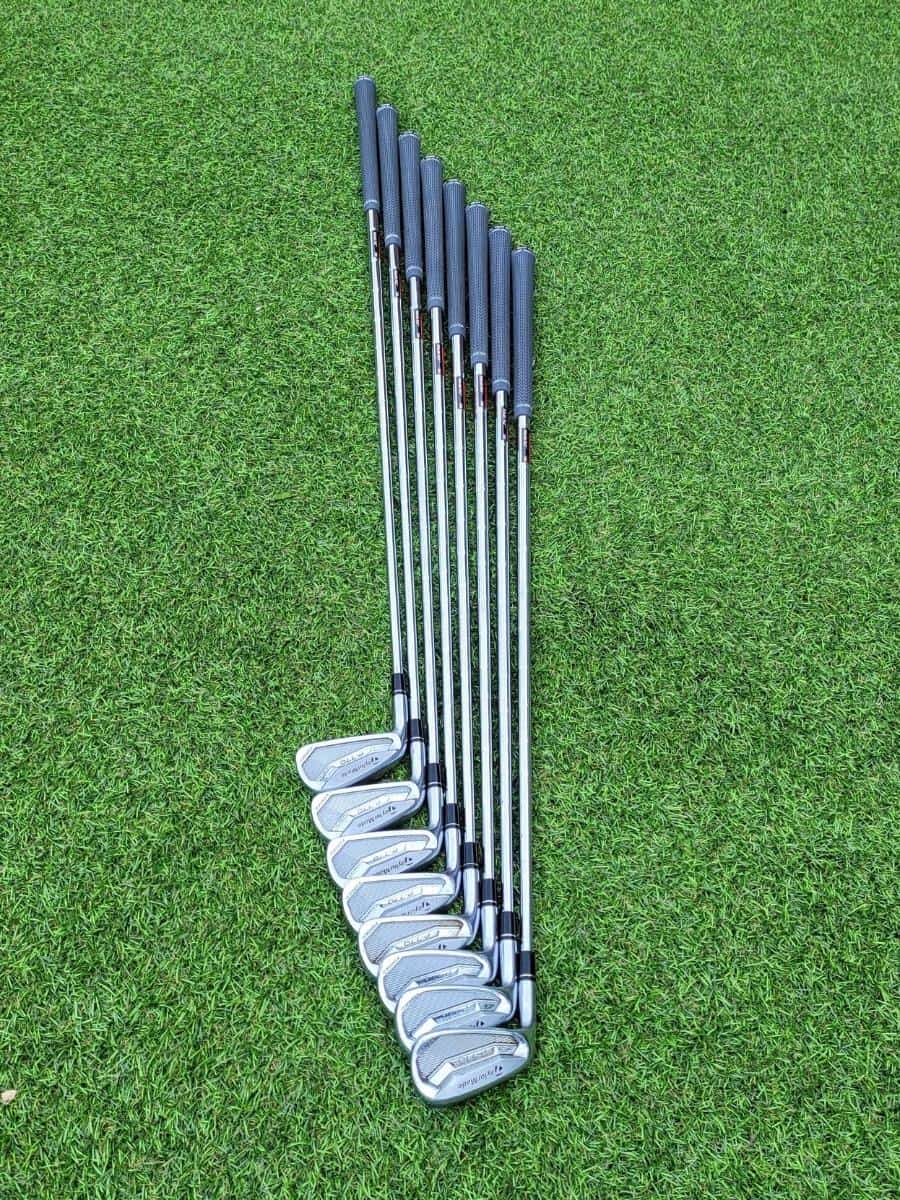
Sergio Garcia and Dustin Johnson feature the P730 irons, as Collin Morikawa and the P790 irons are used by Martin Kaymer, Lucas Herbert, and Jason Day. Remember that within the TaylorMade stable, there are a variety of irons, and pros that use TM often pull clubs from different model sets to complete their own.

#3 – Ping Irons
Ping’s influence on the game of golf is impressive at both the amateur and pro levels; they arguably provided golf’s greatest entertainer, Seve Ballesteros, with his clubs and the innovation of the world’s first game improvement irons some five decades ago.
The subsequent interest of professional players in the cavity back irons, Ping is a global leader in golf clubs, and it shows on the PGA Tour.
As the third most popular iron on tour, Ping features some very high-profile players, and 19 tour players feature this brand.
Only marginally ahead of TaylorMade, players that use Ping irons include the likes of Bubba Watson, Louis Oosthuizen, Corey Conners, Harris English, Joaquin Niemann, Mackenzie Hughes, Stewart Cink, Lee Westwood, Tony Finau, Tyrell Hatton, and Viktor Hovland.
What Ping Irons Do These PGA Tour Pros Use?
The Ping i210 irons are the most popular amongst this playing group, with players like Viktor Hovland, Lee Westwood, Tyrell Hatton, Stewart Cink, Mackenzie Hughes, Sebastion Munoz, Sahith Teegala, and Matt Fitzpatrick all having the i210 in their bags.
The Ping iBlades are used by Corey Conners, Guillermo Mita Perreira, Joaquin Niemann, and Victor Perez. The Ping Blueprint irons are used by Louis Oosthuizen, Tony Finau, Seamus Power, and Harris English.
Other Ping irons used are the Ping S55 played by Bubba Watson and Carlos Ortiz, as well as the i500 (Makenzie Hughes), G 410 Crossover (Harris English), and the i59 (Sahith Teegala).

#2 – Callaway Irons
Callaway irons are the second most popular irons used on the PGA Tour behind Titleist – and there is a big difference between the number of players using Callaway and Titleist. In contrast, the numbers 3, 4, and 5 most popular irons are closer to the number 2 spot than the no. 2 is to the no. 1 most popular iron on the PGA Tour.
Between Callaway and Ping, there is only a difference of 5 players that use Callaway, so those gaps are pretty close.
Callaway is another massive global brand. Of the 24 PGA Tour players that use their irons, many South African players feature, such as Branden Grace, Christiaan Bezuidenhout, Dylan Frittelli, Erik Van Rooyen, and prominent international stars.
Phil Mickelson, Alex Noren, Daniel Berger, Danny Willett, Henrik Stenson, Francesco Molinari, Justin Rose, John Rahm, Kevin Na, Kevin Kisner, Sam Burns, Xander Schauffle, Siwoo Kim, and Marc Leishman all use Callaway irons.
You know you are doing something right when you can boast this illustrious list of players using your irons!
What Callaway Irons Do These Pro Players Use?
The two most popular iron sets are the Callaway Apex series and X Forged irons, while a few players on tour use the Rogue and Legacy irons.
With the Apex series, the MB, TCB, and Pro feature prominently, with the X Forged series irons coming in a close second. Let’s look at which PGA players use these irons.
- Callaway Apex TCB – John Rahm, Marc Leishman, Matt Wallace, Sam Burns, Xander Schauffle, Franceso Molinari, Danny Lee, and Branden Grace.
- Callaway Apex MB – Phil Mickelson, Talor Gooch, Matt Wallace, Danny Lee, Erik Van Rooyen.
- Callaway Pro and Pro UT – Jazz Jannewattanond, Alex Noren, Kevin Na, Kevin Kisner, and Siwoo Kim.
- Callaway X Forged UT/CB – Phil Mickelson, Talor Gooch, Maverick McNealy, Justin Rose, Dylan Frittelli, Erik Van Rooyen , Danny Willet and Christiaan Bezuidenhout.
My youngest son has recently ignited his love of the game and purchased a set of Callaway clubs. Although not used by the PGA players mentioned above, he went for the Callaway Warbirds, which I think are just perfect for him, having not played for a while.

#1 – Titleist Irons
Titleist has the same dominance with their irons on tour as they do with the Pro V1 ball, which is a testament to their quality and consistency in performance. Compared to the no. 2 spot held by Callaway, Titleist have more than 70% more players using their clubs than Callaway.
Regarding the popularity of irons, it’s a race for second place as Titleist has the first place well and truly sewn up, with 33 PGA Tour players favoring them. You can view Titleist irons on Amazon and check prices or jump to the huge selection at Global Golf.
Their list of players using their irons is incredibly impressive. It features top players like Adam Scott, Cameron Smith, Chris Kirk, Garrick Higgo, Ian Poulter, Jordan Spieth, Justin Thomas, Lucas Glover, Patrick Cantlay, Max Homa, Tom Hoge, and Will Zalatoris.

What Titleist Irons Do These PGA Tour Players Use?
Because Titleist has such a massive stable of clubs available, the mix of irons used by PGA players is quite varied.
The T100 and T200 are popular, along with the 620 CB and MB series. Then, the U500 and 510 and the 718AP2 and T MB irons feature in the bags of the top players.
- Titleist T100 and T200 – Cameron Smith, Charles Howell III, Charley Hoffman, Garrick Higgo, Jordan Spieth, Justin Thomas, Will Zalatoris.
- Titleist 620 CB/ MB Series – Antoine Rozner, Billy Horschel , Brandt Wiesberger, Brian Harman , Cameron Davis, Cameron Young, Max Homa, Webb Simpson and Tom Hoge.
- Titleist 718 AP2/MB/CB/T MB -Brendon Todd, Chris Kirk, Ian Poulter, JT Poston, Patrick Cantlay.
- Titleist U 500 – Antoine Rozner, Berndt Wiesberger, Carlos Ortiz, JT Poston, Lucas Glover and Brian Harman.
Sidenote: Do you want to know the top golf grips used by the pros? Check out this article to find out, 3 Most Popular Grips on The PGA Tour .
Let’s Wrap This Up!
Titleist leads the race by some margin for the most popular irons on the PGA Tour, with some of the biggest names in the game using their irons with great success. Now that you know which players use which brand, be sure to keep an eye out for them on TV.
It will be interesting to see if and how these numbers change over the coming years as manufacturers jostle to move up the popularity rankings, but for now, the top four are well ahead of the chasing pack.
If you want more detail on this topic, check out this article, What Irons Do PGA Players Use ?
Related Posts You May Like:
- 5 Most Popular Golf Balls on The PGA Tour
- The Average Handicap For a Pro Golfer
- 5 Most Popular Wedges on The PGA Tour
- Are Golf Hitting Nets Worth It ?
Similar Posts
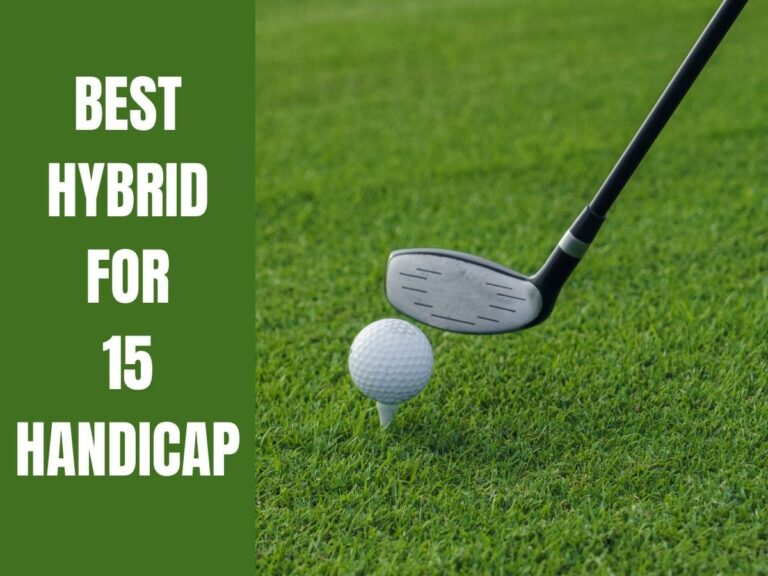
5 Best Hybrids For 15 Handicap Players
If you have a golf handicap of 15, when the time comes for you to purchase a new hybrid, you should choose one that suits your handicap to improve your game. That said, I’ll outline the best hybrids for 15 handicap players. Here are 5 of the best hybrid golf clubs to choose from for…

5 Best Golf Clubs For Women Beginners (2023 Update)
If you are an elite women’s golf player, your club bag will be full of the usual suspect brands. Titleist, Calloway, PXG, or Cobra. However, most women golfers are either beginners or amateurs wanting to start playing golf or improve their game. So, what are the best golf brands for lady beginners? The 5 best…
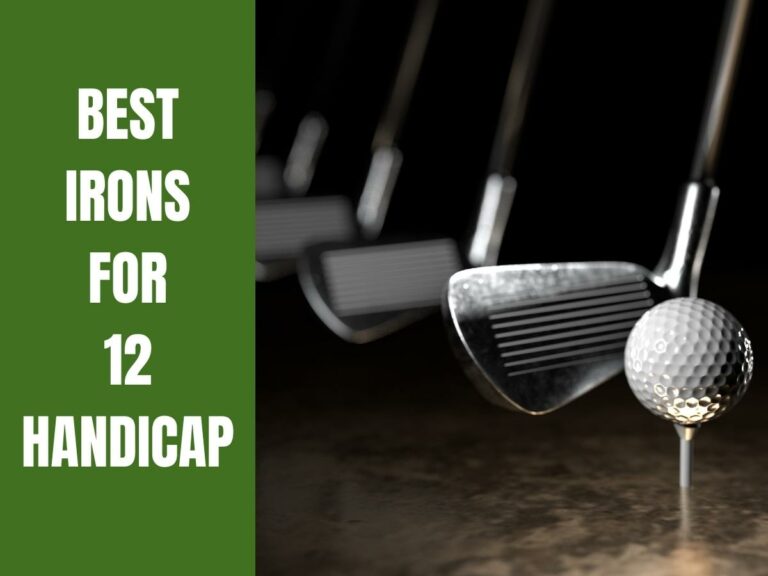
4 Best Golf Irons For 12 Handicap Players
By the time you achieve a 12 handicap, you know your way around a golf course and have grasped the intricacies of being a successful golfer. It’s also around this point where you start looking at upgrading your trusty old irons in the search for taking your golf game to the next level. So, what…

7 Surprising Reasons Why Golf Irons Are So Expensive
Golf irons are an essential part of every golfer’s game. They help determine whether you have a good round or not. And most golfers know that the best golf irons can be expensive. But have you thought about the reasons why golf irons are expensive? And do the expensive irons make a difference to your…
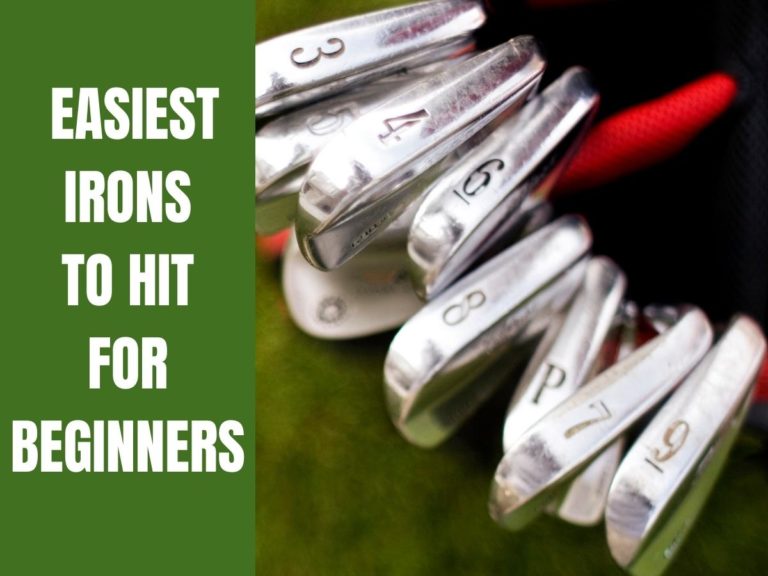
5 Easiest Irons To Hit For A Beginner
If the golfing bug bites, it’s difficult to let it go. As a beginner golfer, start on the right footing as it’s hard to unlearn poor golfing techniques, styles, or equipment choices. Knowing which irons are the easiest to hit as a beginner is a good start. For a beginner golfer, the easiest irons to…
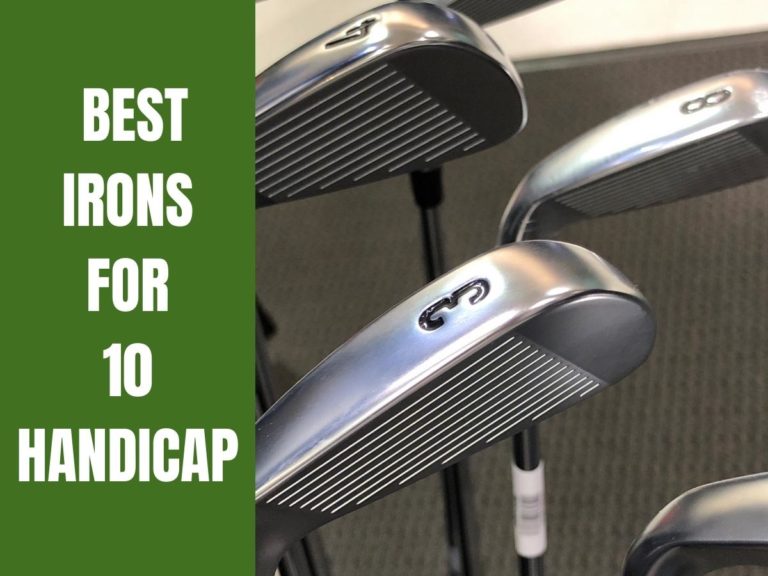
7 Best Golf Irons For 10 Handicap Players
Buying a new set of golf irons can be a costly mistake if you don’t know what you’re looking for. It is especially true in the 10-handicap division, where players may theoretically employ every option in a brand’s lineup with some success. That said, I’ll outline the best irons for 10 handicappers. The 7 best…
Is Your Game Suffering?
Join our free newsletter and receive game improvement tips, drills, product discounts, etc…, join over 10,000 golfers today.

Best Cavity Back Irons of 2024 – Expert Tested on the Course & on the Range
Last Update
February 11, 2024
*This post contains affiliate links and we will be compensated if you buy after clicking on our links.
*Read our review guidelines.
Table of Contents
This is our review of the best cavity back irons on the market in 2024.
I’m an avid golfer, an 8ish handicap on my way to a 2 (been a 5.6) and frequent tester of golf clubs and equipment since 2015.
We tested every club on this page on the range and on the course. Our recommendations are based on our experience.
In this best cavity back irons review, we discuss, the benefits and features of each and our recommendations.
Our Top 4 Recommendations for 2024
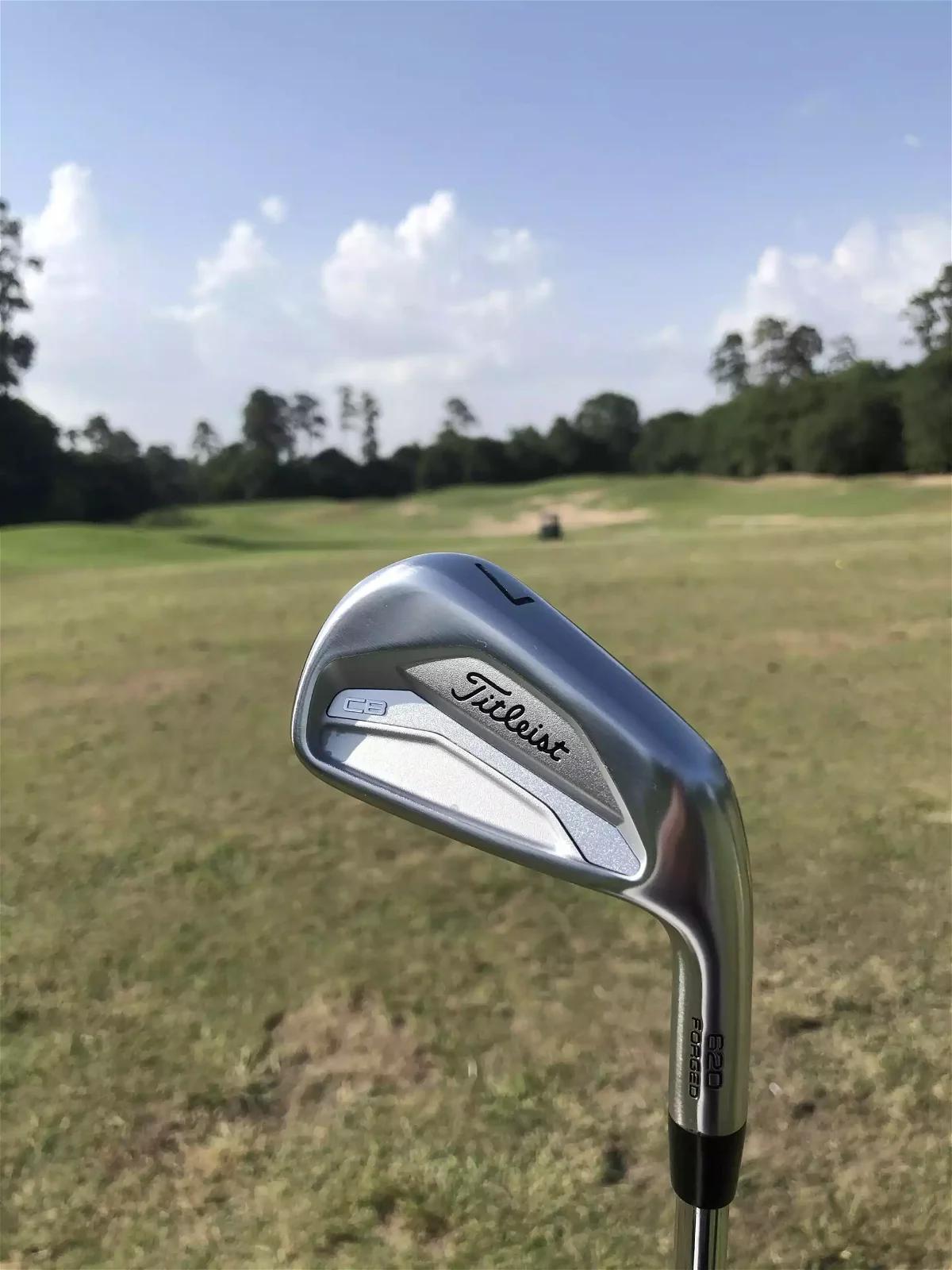
- Exceptional Feel & Performance
- Classic Elegant Titleist Design
- Surprisingly long
- Scoring MO-chines
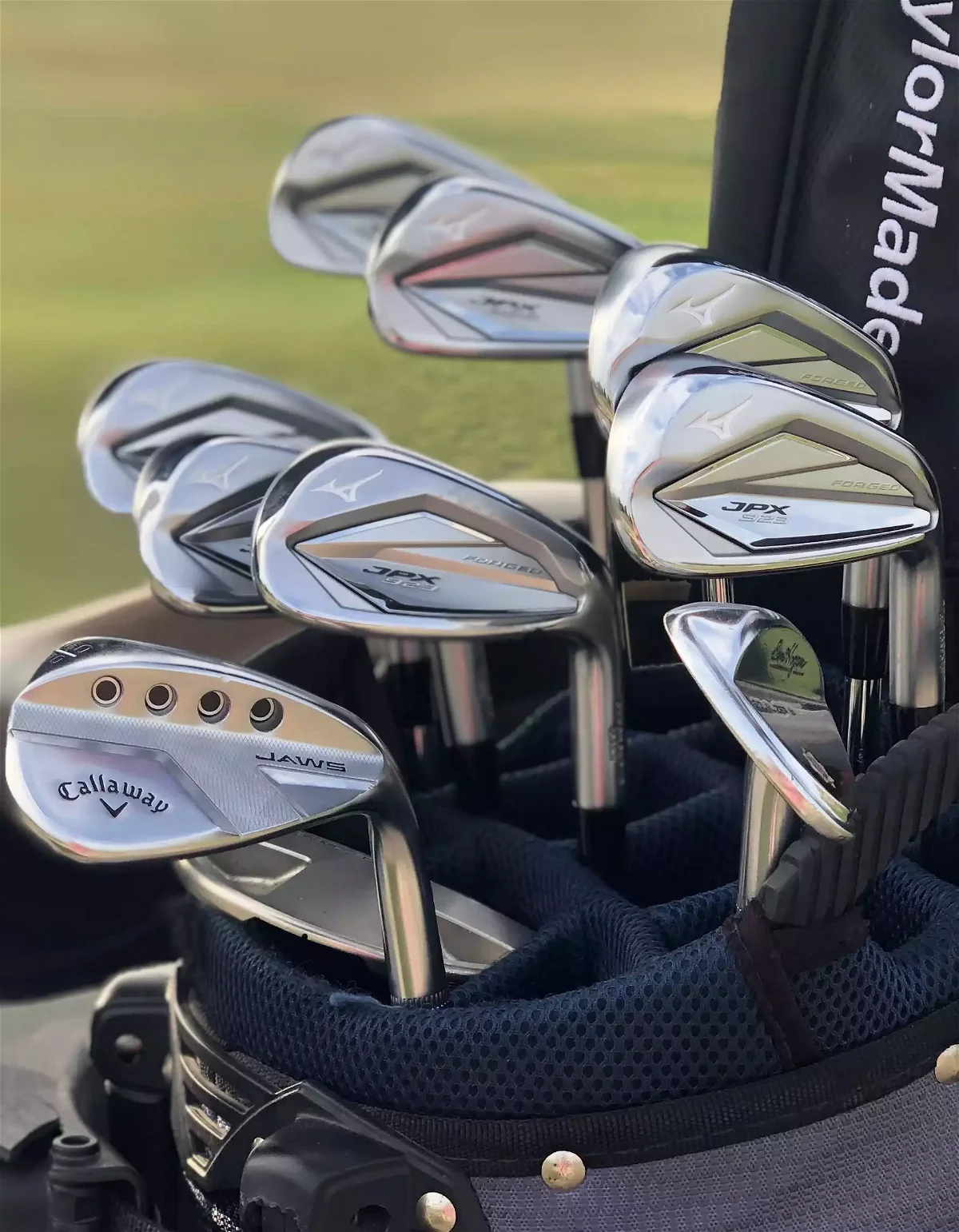
- Best Feel in Golf
- Superb Distance & Forgiveness
- Play all the shots
- Reasonable Price
- Still looking
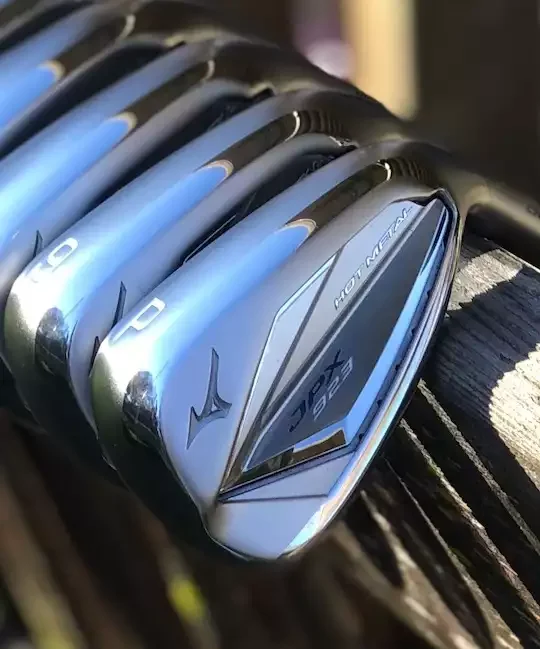
- Exceptionally Soft & Solid Feel
- Loads of Distance & Forgiveness
- Absolute Eye Candy
- Great Price
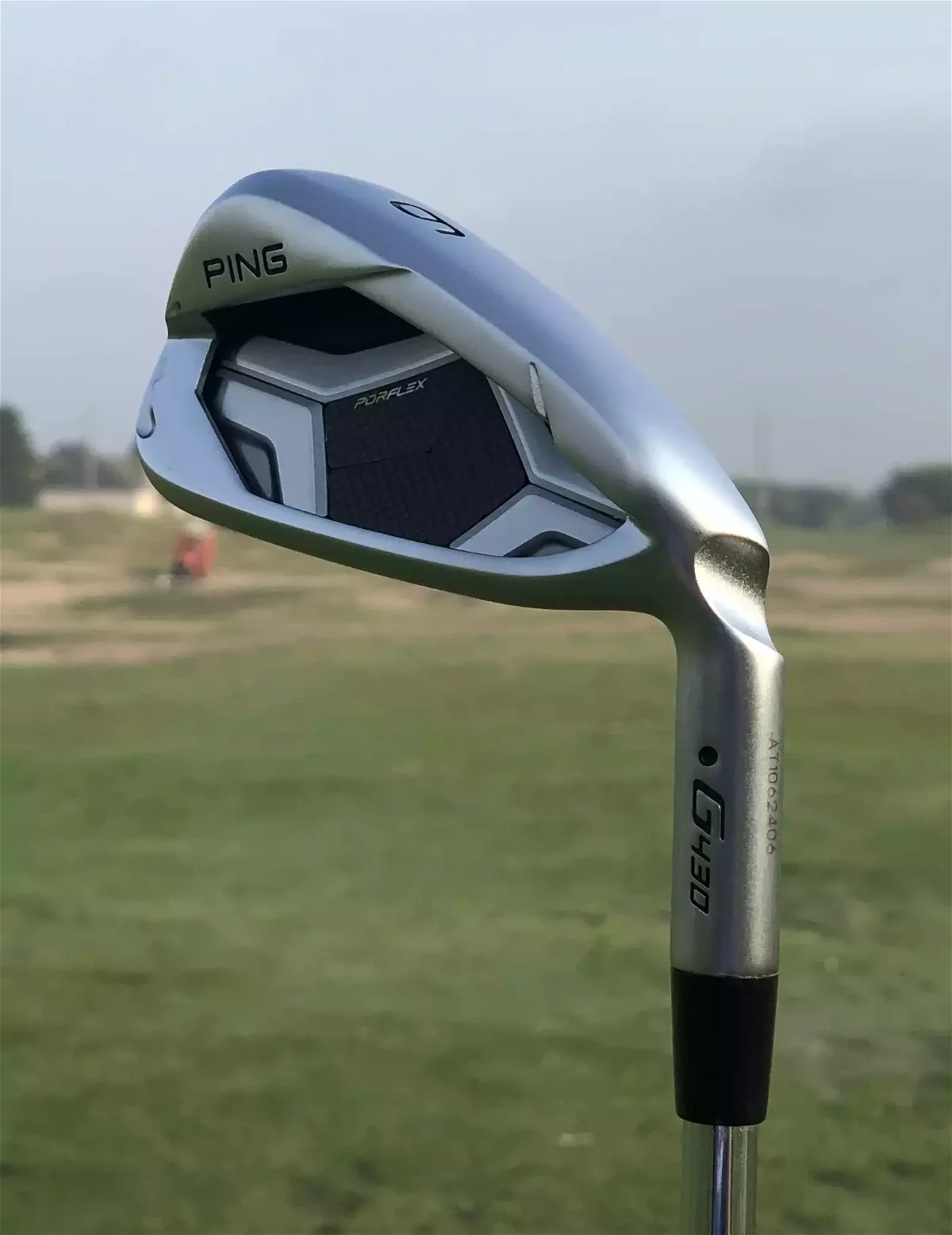
- Easy to hit & Elevate
- High trajectory & Straight Ball Flight
- Great distance & forgiveness
- Can shape & flight the ball as well
- Looks, not the best
Best Cavity Back Irons in 2024
Best for 0-10 handicaps

- Exceptional Feel
- Accurate & Consistent
- Great Launch & Trajectory
- Player Looks & Profile
Best for 0-5 Handicaps
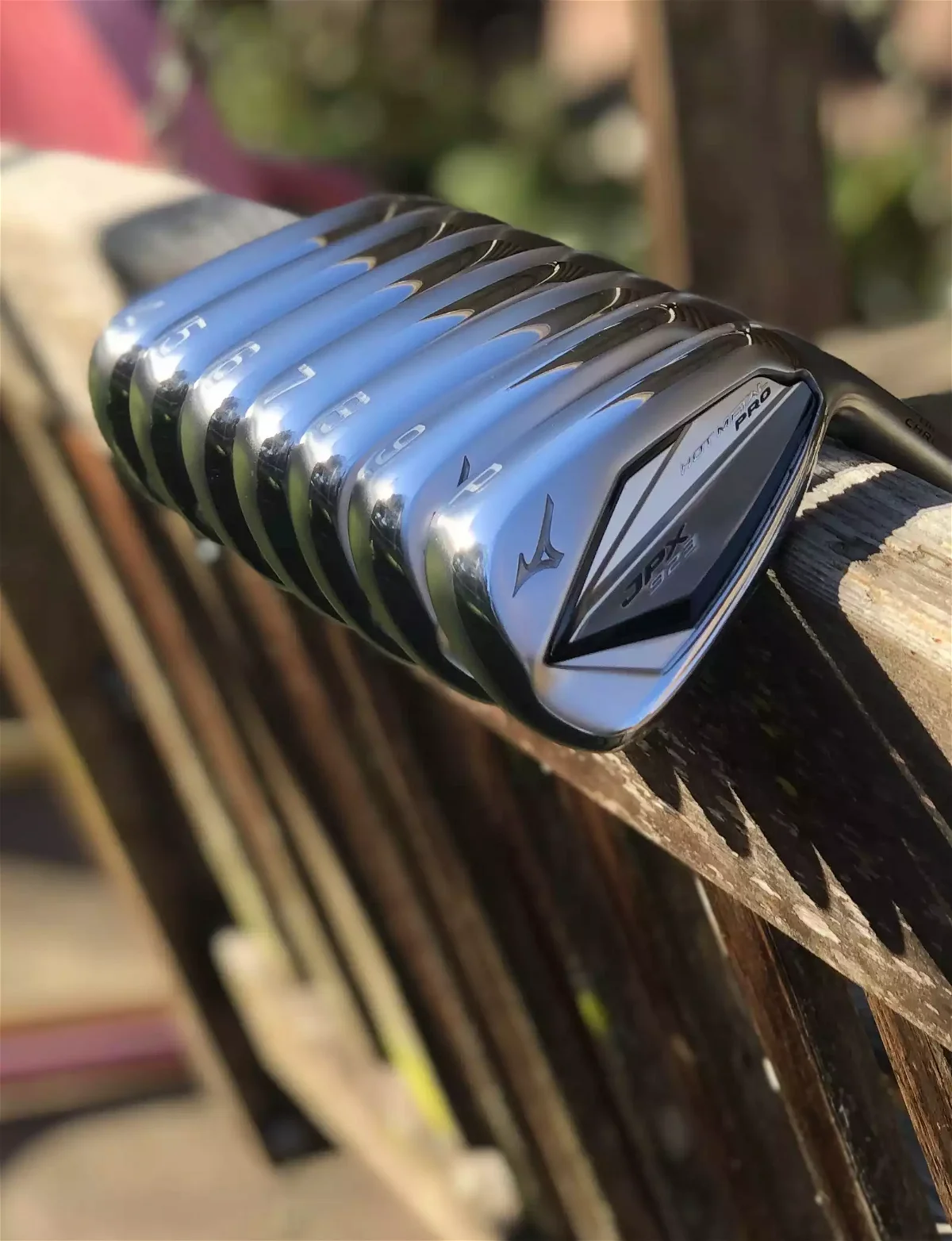
- Unbelievably Soft & Solid Feel
- Plenty Distance & Forgiveness
- Premium Looks
- Great price
Best for 8-12 Handicaps
- Same Buttery-soft feel as 921s
Best for 8-15ish Handicaps
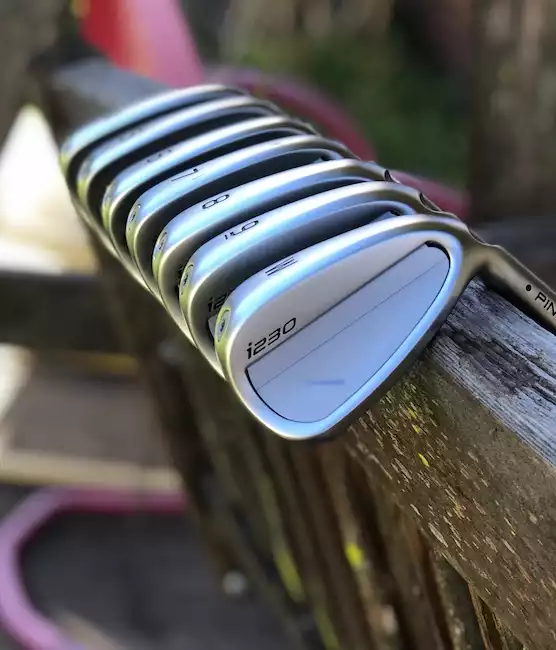
- Long & Forgiving
- Superb Feel & Sound
- Easy Launch with Great Trajectory
Best for 0-10 Handicaps
Best for 0-5 handicaps
Read our Review

- So... so easy to hit
- High trajectory
Best for 10-15ish Handicaps
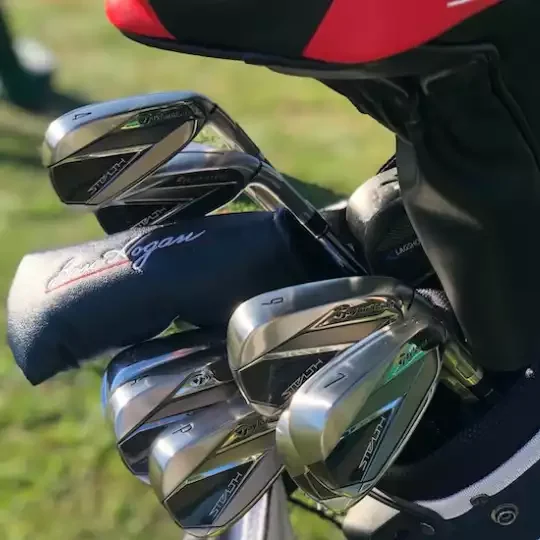
- Good Sound & Feel
- Elevates ball easily
- Easy to hit
Best for 15ish handicaps to beginners
Best Cavity Back Irons Reviewed
Mizuno jpx 923 forged irons.

Mizuno JPX 923 Forged irons are our top pic for best cavity back irons for 0 – 10 handicaps.
What we like:
- You get every bit of the playability you expect from low-handicap irons.
- Best feel of any iron I’ve ever put my hands on.
- Loads of forgiveness & distance.
- Compact clubhead & clean lines.
- Best price for new premium irons.
What we don’t like:
Mizuno took everything that was great about the JPX 921 Forged irons and shoved it into a more compact and better-looking clubhead.
We had 20+ mph winds for one of the rounds I played with them. I was able to flight them down into the wind and elevate them with the wind with relative ease. They perform exceptionally well in all conditions.
Customer Reviews: Mizuno doesn’t collect reviews, but everything I’ve read on the clubs themselves is 100% positive.
Recommendation : Go to your local golf store and get your hands on them or demo a set from Global Golf. You’ll know
Mizuno JPX 923 Tour Irons

- Bring your distance
The JPX 923 Tour irons are our favorite pure “player” cavity back iron from Mizuno and a solid step up from the JPX 921 Tour irons for me.
- Nice feel – improved over the JPX 921s.
- I found the long irons easier to hit – and hit well.
- Improved looks and profile.
- Just forgiving enough on slight mishits.
- Good, not exceptional feel like the JPX hot metals and JPX forged irons.
- Not short, but you have to bring your distance.
My strength is iron play, but not long iron play. I was able to hit solid long irons with good trajectory at my target time and again during my round with the 923 Tours.
I’ve improved my ball striking since testing the 921 Tours, but Mizuno has incorporated more performance in the 923s.
Customer Reviews : Early days.
Verdict : I think you should consider upgrading or at least testing the JPX 923 Tour irons if you own the 921 Tours. You may find the difference in performance worth the switch.
Mizuno JPX 923 Hot Metal Pro Irons

- Outstanding Value
The Mizuno JPX 923 Hot Metal Pro irons look and perform similarly to the Hot Metal irons, but the clubheads are a little smaller and sleeker to appeal to better players.
- Best-in-class feel.
- Exceptional forgiveness and distance.
- Launch easily with excellent carry.
- All the playability better ball strikers look for but can just fly high and straight if that’s what you need.
- Sleek and handsome clubheads.
The JPX line of irons are exceptional and the Hot Metal Pros are no different. Same superb feel. More forgiving than they look – and they look forgiving. They launched the ball easily for me and carried it on a high, piercing trajectory. They’re also exceptionally long.
Customer Reviews : Mizuno doesn’t collect reviews. But, you’d be hard-pressed to find detractors.
Recommendation : Just try them. You’ll thank me.
Mizuno JPX 923 Hot Metal Irons

Mizuno JPX 923 Hot Metal irons are the best irons for mid-handicappers and our #1 Recommendation for a few reasons.
- Buttery, marshmellowy, unbelievably soft (yet solid) feel.
- Incredibly forgiving and easy to hit. Great contact is not needed for good results.
- Exceptional distance.
- You can play any shot you want if you’ve got the game.
For this year’s JPX 923s, Mizuno combined Chromoly and Nickel to form Nickel Chromoly which allowed them to make the clubface 8% thinner, yet 35% stronger than last year’s JPX 921s.
So, the sweet spot is bigger for more forgiveness and distance over a larger portion of the face.
ALLL the good things I had to say about the 921s apply to the 923s.
Conclusion : Continued exceptional feel, performance, forgiveness, and distance out of the JPX line.
Recommendation : Just try them. You’ll thank me.
Ping i230 Irons

Ping i230s are my favorite low-handicap irons from Ping.
- They’re solid at impact for good control
- Have nice sound and feel with excellent feedback
- Get the ball up easily & send it on a high-penetrating ball flight
- Have just the right amount of forgiveness
Ping optimized launch, spin, forgiveness, and MOI for the i230s. And did it in a smaller clubhead than the i210s (which I also like).
I love the consistent loft gapping between clubs too. 4 degrees in the pitching wedge through 7-irons. Then, 3.5 degrees in the 7-iron through 3-iron. (I’m not sure why the change from 4-degree gapping to 3.5 degrees, though)
I prefer the i230s over the i59s and i525s because of their superior sound and feel. Not to mention I hit them better. The heads are larger than the other two, but not large. Hitting them reminded me of the G425s , which I also loved.
I was on or around the green all day during my rounds with the i230s.
Customer Reviews : 11 reviews with 100% 5-stars
Recommendation : Give them a try. If you like their looks, you’ll love the way they play and feel.
Titleist 620 CB Irons

Titleist 620 CB irons are our favorite pure player cavity back irons for a few years, now.
- They perform precisely how you would expect premium low-handicap irons to perform.
- They feel and play as good as they look…and they look GOOD.
- Surprisingly long.
- Just a splash of forgiveness with Zero harshness on mishits.
- Not a thing.
This is the second set of Titleist irons I’ve ever tested. The first was the T200s from a couple of years ago, which I loved. So, I had high expectations for the 620 CBs. They were exceeded.
Online images don’t do justice to how beautiful these irons are. From their minimal, elegant design to their perfectly sized compact head. Titleist knows how to do player irons .
I loved them on the range and I loved them on the course. The long irons are a bit much for me, but you can order any iron combo you want. So, no worries. I play hybrids starting with 4-hybrid anyway.
Customer Reviews: There’s not a whole lot out there on the interwebs, but the few I found had nothing but good to say about them.
Recommendation : Try them. I bet you’ll want to keep them. I did.
Ping G425 Irons

We loooove Ping G425 irons and they will be on our lists as long as we can find a place for our readers to buy them.
- Supremely easy to hit and elevate
- All the distance you need
- Can hit good shots all day long without needing perfect contact
- Awesome feel and sound for a mid handicap iron
- You can play any shot you want if you’ve got the game
- Shut yo mouth.
I was not expecting the G425s to perform as well as they did. I play soft carbon-steel low handicap irons and I thought the 425s would feel harsh and wooden. No sir. I’m a low handicap ball striker with my irons and these did anything I wanted.
Center contact feels great and slight mishits feel about the same, with no very little loss of distance. There’s a ton of forgiveness built into these irons .
The lofts are already jacked, but Ping offers even stronger lofts if that suits your game.
Conclusion : The G425s are one of the best irons for the average golfer I’ve tested this year.
Recommendation : You’re going to want to at least test these. My money is on you keeping them if you do.
Taylormade Stealth Irons

- Looks...not the best
The Taylormade Stealths irons are kind of a hybrid between cavity and muscle back game improvement irons.
- They launch the ball easily with a high trajectory.
- Generous sweet spot for premium forgiveness and distance.
- Clubheads are big, but not awkward looking.
- Looks, not the best.
They’re just not quite as good looking as the G425s. Yes, that’s a silly thing, but it’s the only differentiating factor from my testing.
Stealth irons feel great in my hands. Look great at address. And, hit the ball a ton. You can hit ’em high. You can flight them down. You can play any shot you want with these irons.
Taylormade Stealth irons are money and exactly what you want out of game improvement irons. They happen to be better looking than the SIM or SIM2 irons too.
Conclusion : Neck and neck with the G425s. Ever so slightly behind in feel and looks.
Recommendation : Need to be on your shortlist if you’re in the market for new mid-handicapper irons.
Ping G430 Irons

Ping G430s have all the playability, performance and feel of the G425s, but in an updated package.
- They’re easy to hit and elevate.
- They want to fly high and straight.
- You can still work them left or right, flight them down, or take off distance if that’s part of your game.
- Same great feel.
- Same forgiveness.
- Big step down in looks.
- Not as refined as the G425s
The lofts are stronger in the G430s and they’ve added more tech for distance. Well-struck shots were about half a club longer for me on the course and I got a couple of crazy-long numbers on my launch monitor.
As with the G425s, center contact is stellar, but slight mishits will get you good results too. I was on or around the greens all day.
Conclusion : Not a significant improvement over the G425s. I don’t think that would be realistic. The G425s are too good.
Recommendation : Keep your G425s. Test both sets if you own neither, and you’re in the market.
Do any PGA pros use cavity backs?
Yes, quite a few PGA pros use cavity back irons – Jordan Spieth, Patrick Cantlay, Xander Schauffele, Sam Burns, Jon Rahm, etc.
What are the best cavity back irons for mid-handicappers?
The best cavity back irons for mid handicappers are Mizuno JPX 923 Hot Metal Irons .
Do blades or cavity backs go farther?
Cavity back irons go farther than blade irons. They have better MOI and more forgiveness, thanks to their construction.
Can you shape shots with cavity back irons?
Yes, you can shape shots with cavity back irons. I’ve shaped shots as long as I’ve been playing golf, and I’ve used cavity back irons most of that time.
Verdict on the Best Cavity Back Irons on the Market in 2024
Read this site for a long, and you’ll quickly figure out we love Mizuno cavity back irons. So, they’re well represented on this page.
But, we feel you can’t go wrong with any of the irons on this page.
My #1 suggestion is to get your hands on them before you buy. Either at your local golf store or take advantage of Global Golf’s Utry trial program . I use it and recommend it.
Thanks for checking out our review of the best cavity back irons in 2024.
Related Posts
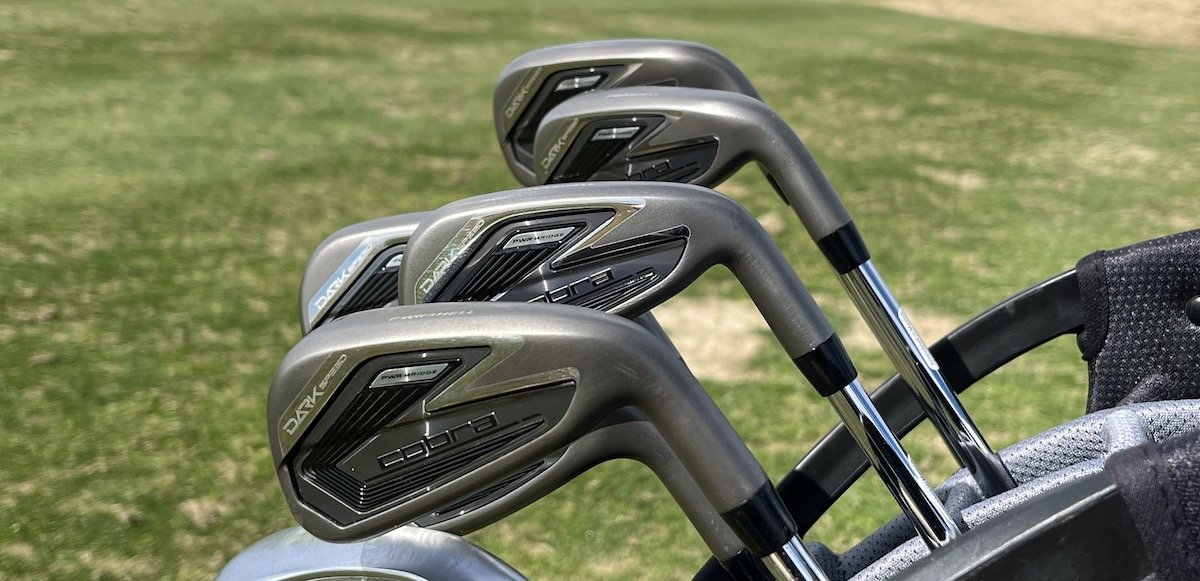
[email protected]
(281) 861-2609
Other Links
We may receive commissions when you click our links and make purchases. However, this does not impact our reviews and comparisons. We try our best to keep things fair and balanced, in order to help you make the best choice for you.
As an Amazon Associate, I earn from qualifying purchases.
© Golfer Geeks 2024. All Rights Reserved.

Why Learning To Play Golf With Blades May Hurt Your Game
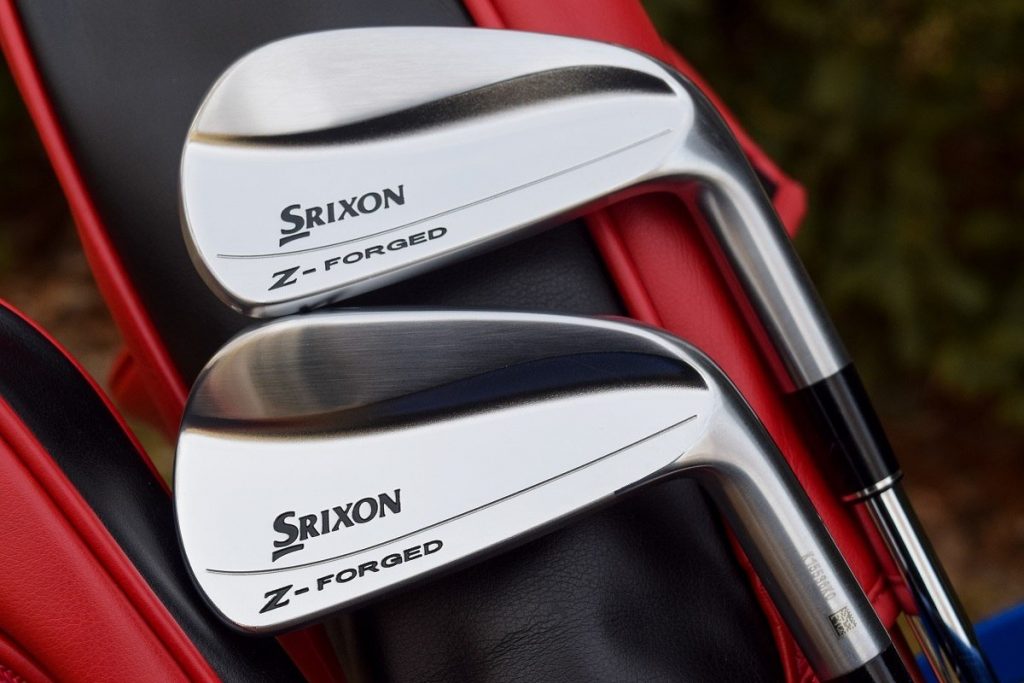
Many golfers have the perception that playing with blades is the trademark of a good player.
As soon as they see someone using those shiny, intimidating, steak knife-type clubs, they automatically assume the person must be an elite ball-striker and top-level golfer.
Why? Well, for a long time the perception has been that the best players in the world – such as those who compete on the PGA and European Tours – use blades, therefore amateur players who do likewise must be pretty handy.
But the biggest question many golfers have on this topic (and one that has likely brought you to this article) is: can you play high-level golf with game improvement irons, or should you learn to play golf with blades in order to become a better player?
Learning to play golf with blades – otherwise known as forged muscle-back irons – is not a requirement to becoming a good player. While they offer more control to shape the ball in the air, they are less forgiving and are harder to hit than game improvement or cavity-back irons. In fact, only around 13-26 percent of the top PGA Tour players used blades as recently as the 2020 season.
So, while many golfers dream of one day being good enough to add a brand-new set of blades to their stand bag, carry bag or cart bag, the reality is only a small percentage of the world’s best golfers actually use them.
In fact, of the Top 50 PGA players in strokes gained: approach to the green in 2020, 44 percent actually gamed cavity-back irons, 30 percent play a mixed set, and the remaining quarter used blades, according to research conducted by Golf Magazine.
Another article by Australian Golf Digest revealed that at the 2010 Players Championship there were 26 players who used a full set of blade irons, however at the 2020 tournament – a decade later – the number of players gaming a complete set of muscle backs was just 13 (a decline of 50 percent).
That’s probably not what you were expecting to read, was it? I’ll admit, the numbers certainly surprised me too when doing the research for this article.
To help you determine whether or not blades are the right choice of clubs for you, I’ve answered some of the most common and important questions relating to them.
Table of contents
What are blades in golf?
A blade iron is forged out of a block of steel, meaning there is no weight dispersion – what you forge is what you get. By comparison, a cavity-back iron is hollowed out so that the weight can be distributed around the perimeter of the club head. This provides more forgiveness, meaning off-centre strikes with cavity-back irons will deviate less from their intended target line than a blade iron might.
Most golfers think that as your game improves, you should graduate from playing cavity-back irons to blade irons.
They think that moving into muscle-backs will help them became an even better player – one who strikes the ball flush every time they hit a shot, and is able to bend the ball left and right at will like Tiger Woods.
I’ll admit, I used to think that way too.
But having done a lot of reading and spoken to professional club fitters – most recently when I bought my new set of Srixon ZX7 irons – I can say with certainty that my views on this have definitely changed.
Here’s why.
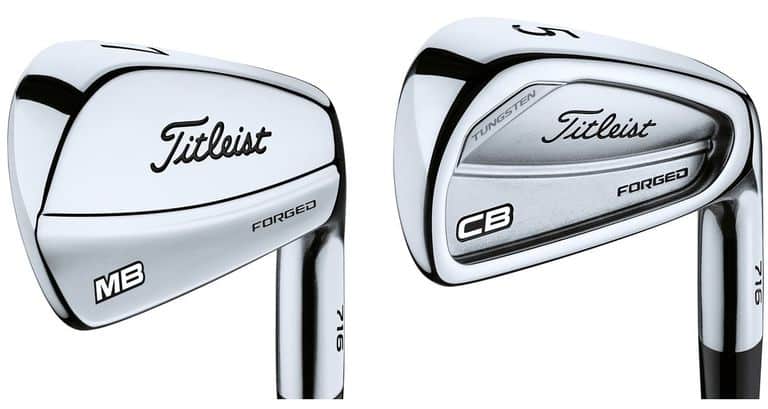
Will learning/playing with blades make you a better golfer?
In most cases, learning to play golf with blades will hinder your progress, rather than help it – especially as a beginner. The thinner profile and less forgiving design aspects to forged, muscle-back irons may make it harder for amateur players to see the early improvement needed to continue practicing golf, especially when first starting out.
Many advocates for muscle back irons will argue that by learning with blades from the beginning, you’ll be more likely to improve your ball-striking – and feel where the centre of the club face is better on each hit – as the club will provide more feedback for off-centre strikes than a game improvement or cavity-back iron would.
While there is merit in this thinking, it neglects the crucial fact that golf is an extremely hard game to learn – so, why make it any harder than it needs to be?
Jason Fryia, owner of The Golf Exchange, a Golf Digest 100 Best Clubfitter, summed it up best:
“One of the most perplexing conversations we continue to have with golfers regarding muscle-back blade irons involves the myth that using them will somehow make you a better player,” he said.
“That train of thought confuses me.
“I compare it to buying your five-year-old a unicycle instead of a proper bicycle with training wheels when they’re learning how to ride a bike.”
Only a small percentage of golfers worldwide will ever achieve a single figure handicap, with the remainder likely to play off a marker in the mid-to-high teens or above – in large, due to inconsistency with their ball-striking, and especially iron play.
For that reason, would it not make sense to equip most players with clubs that will make it easier to hit the ball straight, more often (like cavity backs or game improvement irons do) rather than clubs that are more difficult to control by design (which blades are)?
To me, the answer is pretty clear: learn to play with the clubs that are easiest to hit.
Not only will this motivate you to practice and keep improving, it will keep you interested in golf long enough to actually get better – and give you the option of upgrading to blades later, if you so wish.
Are blades golf clubs harder to hit?
Blades are certainly harder to hit than cavity-back irons. Because most cavity-backs have a larger club head, manufacturers are able to move the weight around easier than they can with forged irons. This enables them to redistribute the weight to the perimeter of the club, which prevents the face from twisting with off-centre strikes. Any poor strikes using blades are likely to be felt far more by the golfer.
For this reason, blades are much harder to hit than cavity-back irons.
But don’t take my word for it: just ask multiple PGA Tour winner Kevin Na.
In 2020, the then 37-year-old popular Korean-American shared his views on why he had swapped his blades for cavity-backs – and the benefits of doing so.
“I can’t play a blade,” Na said in a Golf.com podcast interview.
“It’s too difficult, and I’m a pro golfer. I think a blade goes shorter.
“Off-centre hits aren’t going to perform as well as cavity-backs.
“I don’t see a reason why you’d want to play a blade. I really don’t.
“I played blades in my early 20s, maybe one year – when I was dumb. But I’m wiser now and play a cavity-back.”
Na’s views certainly reflect that of many Tour players, who – as the data has shown – are moving farther and farther away from using full sets of blades every year.
But that doesn’t mean every player has shunned gaming muscle backs.
Do pro golfers use blades?
Around 26 percent of PGA Tour players use complete sets of blades. Roughly 44 percent game cavity back irons, while the remaining 30 percent use a mix of muscle-back and cavity-back clubs. At the 2010 Players Championship, 26 golfers competed using a complete set of blades, compared to only 13 golfers at the 2020 tournament just 10 years later.
So, while there are still a number of pro golfers – in particular, Tiger Woods – who still use blades, many golfers who used them in the past (such as fellow great Phil Mickelson) have instead shifted to cavity-back irons.
When should you switch to blade irons?
In general, you should only consider using blades if you have a handicap under 10. However, if your handicap is improving, there is little reason to switch to blades as they are not guaranteed to drop your handicap any lower – in fact, because they are harder to hit than cavity-backs, they may actually make your ball-striking worse.
As mentioned earlier, the common thinking among amateur golfers is that by lowering their handicap, they will one day be able to graduate to blades as they are the sign of a ‘good golfer’.
But as the data demonstrates, less than a third of the best professional golfers in the world use blades – meaning you don’t need to swap to them if you are already seeing improvement in your game by using cavity-back irons.

Can high-handicapper use blades?
It’s generally not recommended that high-handicappers use blades. They are less forgiving when it comes to off-centre strikes, meaning they will be much harder to use for beginner players who often struggle to control the low-point of their swing, and also their club-face direction and swing path.
Can a mid-handicapper use blades?
Mid-handicappers can use blades; however, they may benefit more from using cavity-backs as they still provide excellent feel and control, without being as punishing on off-centre strikes. Most mid-handicappers can strike the ball consistently enough, but likely not to the level that would enable them to use blades effectively.
How do you hit blade irons better?
Hitting blade irons are no different to hitting game improvement or muscle-back irons, however they may appear more intimidating to players due to their thinner sole width, smaller clubhead and lack of off-set at the hosel (commonly seen with beginner irons). Focusing on a smooth tempo and rhythm is key to hitting irons well – and blades are no different.
For a more detailed guide to What The Golf Swing Should Feel Like , I’d recommend you give another one of my articles a read, which discusses everything from tempo, grip pressure and the correct takeaway and downswing.
Final message
While most players believe switching to blades is the sign of a good golfer, it doesn’t have to be the case.
A big percentage of the best players in the world prefer to game cavity-back irons over forged muscle-backs due to them being more forgiving when it comes to off-centre strikes, without sacrificing control.
If you are improving without blades, don’t be in a rush to make the switch – but if you’re set on making a change, it’s best to see a professional club fitter who will help you decide which are the best options for you.
- Recent Posts
- TaylorMade SIM2 Max Driver vs M4 Driver: Worth it in 2024? - April 15, 2024
- 3 Ways to Win the Mental Game with the Bridgestone Mindset Golf Ball - March 29, 2024
- TaylorMade SIM Max & SIM2 Max Drivers: Are they Still Relevant in 2024? - March 9, 2024
Sign in to start earning rewards
Added to cart.
Please enable JavaScript to take advantage of all of the interactive features on this page.
Cavity Back Irons
Gender/hand.
- Ladies/Right
- Ladies/Left
Set Composition
- Hybrids/Irons Combo Set
- 9-Piece Iron Set
- 8-Piece Iron Set
- 7-Piece Iron Set
- 6-Piece Iron Set
- 5-Piece Iron Set
- 4-Piece Iron Set
- 5-PW,AW,GW,SW
- Light/Senior

Paradym Ai Smoke HL Irons

Paradym Ai Smoke MAX Fast Irons

Rogue ST MAX Irons

Rogue ST MAX OS Irons

Big Bertha Irons

Rogue ST MAX OS Lite Irons

MAVRIK Irons

Great Big Bertha Irons

Apex DCB 21 Irons

Apex CB Irons

Women's Rogue ST MAX OS Lite Irons

Women's Paradym Ai Smoke MAX Fast Irons

Women's Big Bertha REVA Irons

Women's Great Big Bertha Irons
Why Michael Block is switching out of his famous irons at PGA Championship
Change Text Size
One of the most famous, and valuable, 7-irons in golf might be getting benched for the 2024 PGA Championship.
In the final round of the 2023 PGA Championship, PGA Professional Michael Block shook up the golf world by recording an ace on the par-3 15th hole on Sunday at Oak Hill Country Club, while playing alongside Rory McIlroy.
Michael Block dunks it for an ace at the PGA Championship
As Block revealed ahead of the 2023 Charles Schwab Challenge a week later, however, the iron wasn’t for sale, because he was going to continue to play with it.
Well, it appears the decade-old irons are now, finally, being replaced.
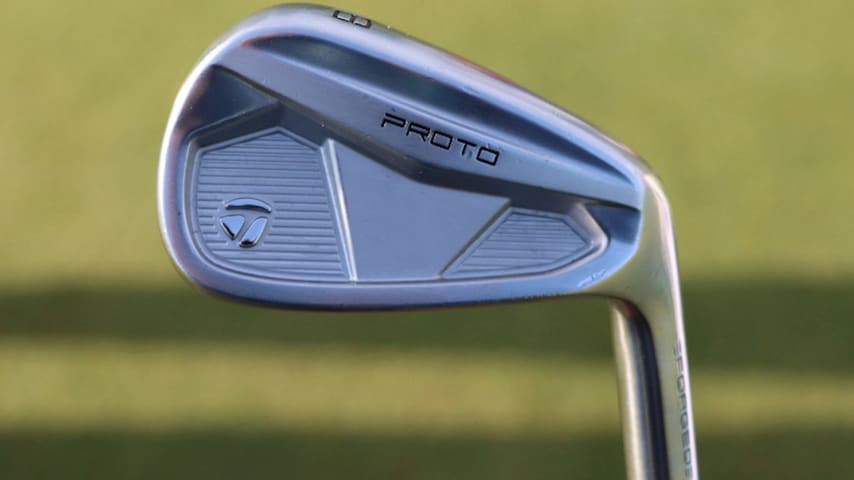
On Monday at the 2024 PGA Championship at Valhalla Golf Club, Block had a full set of TaylorMade “Proto” irons in the bag. (Courtesy GolfWRX)
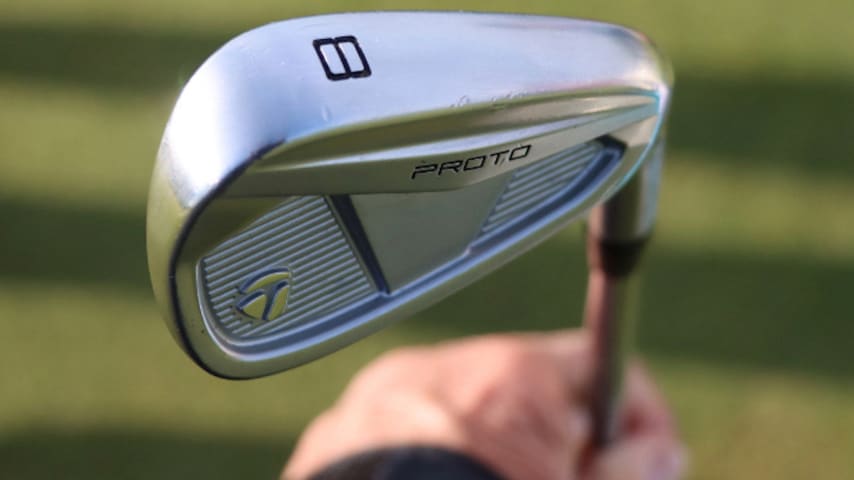
On Monday at the 2024 PGA Championship at Valhalla Golf Club, Block had a full set of TaylorMade “Proto” irons in the bag.
Block is the first player of many on the PGA TOUR to bag a set of the mysterious "Proto" irons. Rory McIlroy first switched into a “Proto” 4-iron at the Valero Texas Open , and Collin Morikawa followed suit at the 2024 RBC Heritage. Block isn’t using just the 4-iron, though, he’s using a full set to go along with a TaylorMade Stealth UDI driving iron.
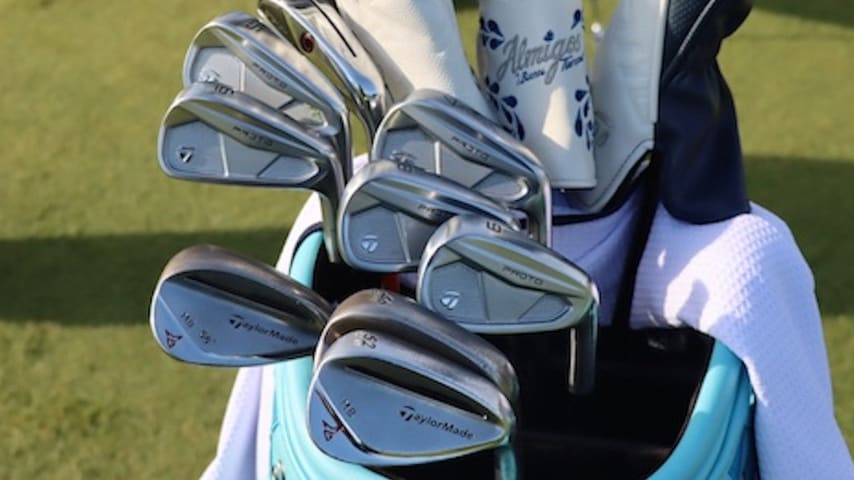
Speaking with GolfWRX.com on Monday at the PGA Championship, Block revealed the full backstory.
“I hit a couple super "Proto" irons when I was at the Kingdom (TaylorMade’s fitting facility in Southern California) a couple months ago, and it was a 9-iron that didn’t have any badges or anything on it,” Block said. “I had no idea what it was ... It was very similar to what I was using back then, you know, my old MCs, and very similar from the top. I hit it and absolutely loved it. For me to even think about switching irons from the last 11-12 years is crazy.
“I got this set about two weeks ago, and I’m working my way into them. I hit them more solid; it comes off the face more solid. Much higher. I think they’re still slightly too upright for me, so they’re being bent a degree flatter, because they’re going a little too high for me and drawing a little too much. When that starts to happen, I start to drop the club under and compensate too much, so I’m getting them flattened slightly, and I’m going to test them on the range again, and hopefully have them in play on Thursday…
“They go further, and they go higher ... that combination is kind of a no-brainer. If I can take a 5-iron from 204 rather than a 4-iron, it’s good on me. It’s going to help me out for sure, especially at a major with the pin locations. Having that height coming in, that descent angle is going to be huge.”
With such new irons in the bag, after using the same irons for over a decade, surely you’d think there will be a bit of a learning curve. Block, however, is finding immediate comfort with the new "Proto" irons.
“These actually look eerily similar to (my old ones),” Block said. “When I look down, the top line and the offset, which is pretty much all you can see. ... And it’s the exact same shaft, Project X Rifle 6.5. So outside of that, when it comes off, it just feels better than my other set did. I just think that other set was getting the crap beat out of it; I’ve never had them re-grooved, I never re-shafted them, I’ve barely put new grips on them.
“It’s like a 40-year-old still driving around in the car they had in high school. That’s exactly what I was doing, and I think it’s time to trade it in.”
As for Block’s old irons…where are they now? Did he sell them for $50K? Are they in a museum somewhere, or hanging up on his wall at home?
“They’re in my locker, about a hundred yards away from us right now,” Block said, with a laugh.
PGA Championship
Valhalla Golf Club
Instruction
Rory McIlory used this wedge thought at the PGA Championship—and it worked
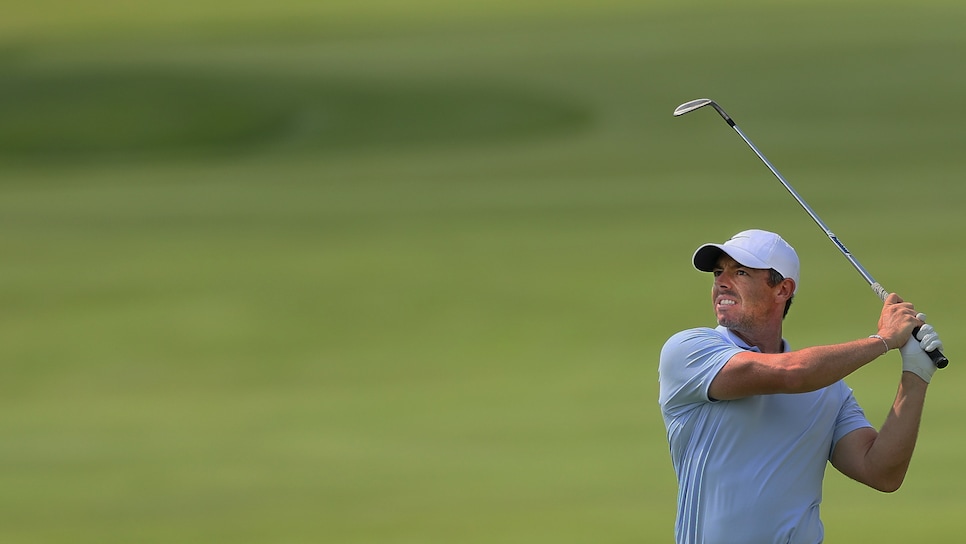
LOUISVILLE — Golf is a complex game of many parts. Rory McIlroy does many of those parts extraordinarily well.
He's a generationally talented driver of the ball.
Despite some turbulence in the early part of the season , he's an elite iron player.
His putting and chipping are vastly underrated.
But every tour player has one area they wish was better. For Rory, it's always been his distance wedge shots. The scoring shots; the ones outside pitching range, but inside full swing range.
"As you can imagine, when I drive the ball well, I have a lot of wedges in my hand," Rory said here at Valhalla Golf Club before the 2014 PGA Championship. "I wasn't being efficient enough. I wasn't taking advantage of some of the drives I was hitting."
That's been the story so far for Rory ten years later, too.
The World No. 2 comes into this PGA Championship ranked 95th in approaches from 50-125 yards, but it's been trending up in recent weeks. And during his opening round, five-under 66 on Thursday at Valhalla, on a day when he lost more than 1.2 strokes to the field with his driving, it was the undisputed strength of his game.
Rory's Thursday wedge numbers
- McIlroy faced seven shots inside 150 yards on Thursday, three of which came inside 120 yards.
- He birdied three of those holes, and hit four of those shots inside 10 feet.
- He made one bogey, which came after driving his ball into a fairway bunker.
- He gained a combined 1.24 shots on the field with those shots
- His average proximity on the wedge shots inside of 120 yards was 13'6", which would rank him second on tour from that range behind only Scottie Scheffler.
The wedge thought that's working
In short, Rory did well with his wedges on Thursday. This area of the game was an area he and Butch Harmon addressed when McIlroy paid him a visit earlier this year. Butch's diagnosis was that Rory was hitting the ball too high with his wedges.
On Thursday, McIlroy said he's counteracting this by trying to feel like the clubface stays more closed, and pointing at the ball on the backswing. That keeps the ball flight lower and more penetrating.

"I want to have the feeling of strength in the club face on the way back, and then try to keep that strength so that it forces me to really get out of the way on the downswing," McIlroy said on Thursday. "That's the thought with the wedges and with the irons."
It's early, but it seems to be working. A good sign for him, and perhaps an early warning sign for the rest of the field.
More from Golf Digest
Trending now.
Advertisement
Why are pros using laser rangefinders, gps at the 2024 pga championship, share this article.
The PGA of America announced back in 2021 that it would allow the use of distance-measuring devices in its three professional major championships – PGA Championship , KPMG Women’s PGA Championship and KitchenAid Senior PGA Championship – starting that year.
The devices made their first appearance at the 2021 PGA Championship at Kiawah Island Golf Resort’s Ocean Course in South Carolina.
“We’re always interested in methods that may help improve the flow of play during our Championships,” said Jim Richerson, then the president of the PGA of America. “The use of distance-measuring devices is already common within the game and is now a part of the Rules of Golf. Players and caddies have long used them during practice rounds to gather relevant yardages.”
The PGA of America became the first major body to allow the devices in all its premier professional events. There had been speculation for years that such devices might help speed play, as players and caddies don’t have to walk off yardages to sprinkler heads and other fixed positions.
PGA CHAMPIONSHIP : How to watch | Tournament hub | Friday tee times
The United States Golf Association’s Rules of Golf have allowed the use of laser rangefinders and GPS devices in casual play and tournaments since 2006, but a local rule allowed a tournament committee to ban such devices. At elite professional levels of play, the devices still have not been embraced for competition rounds, though they have been allowed in the U.S. Amateur since 2014. They are still not allowed during competition rounds at PGA Tour events or at the U.S. Open and British Opens.
In keeping with Rule 4.3a (1), the devices allowed can report only on distance and direction. Devices that calculate elevation changes or wind speeds, or that suggest a club for a player as well as other data, will not be allowed.

Wyndham Clark checks the distance to the 11th hole during the second round of the 2024 PGA Championship at Valhalla Golf Club. (Photo: Clare Grant/Louisville Courier Journal)
The devices aren’t new for the pros, many of whom already use laser rangefinders and GPS in practice rounds.
Many laser rangefinders provide information on elevation changes and “plays-like” distances. Most of those devices come with a switch to turn off such information, but many elite players opt for devices that do not provide elevation and other data as a precaution against forgetting to turn off those functions.
[jwplayer 7NBaZ2A0-vgFm21H3]
See more equipment: Best drivers for 2024 | Best irons for 2024 | Best putters for 2024 | Best golf balls for 2024 We occasionally recommend interesting products and services. If you make a purchase by clicking one of the links, we may earn an affiliate fee. Golfweek operates independently, though, and this doesn’t influence our coverage.
Most Popular
Shot-by-shot: tiger woods shoots 6-over 77 on friday at 2024 pga championship at valhalla, scottie scheffler facing four charges – including a felony – after being arrested at 2024 pga championship, lynch: scottie scheffler got cuffed, but golf world's reaction was even more embarrassing, in pictures: rory mcilroy and wife erica stoll, live updates from scottie scheffler's round at 2024 pga championship, 2024 pga championship second round delayed due to fatal accident near valhalla golf club friday morning, john daly withdraws from 2024 pga championship.
- CBSSports.com
- Fanatics Sportsbook
- CBS Sports Home
- Champions League
- Motor Sports
- High School
Football Pick'em
College Pick'em
Fantasy baseball, fantasy football, fantasy basketball, fantasy hockey, franchise games, 24/7 sports news network.
- CBS Sports Golazo Network
- PGA Championship
- UEFA Champions League
- UEFA Europa League
- Italian Serie A
- Watch CBS Sports Network
- TV Shows & Listings
The Early Edge
A Daily SportsLine Betting Podcast
With the First Pick
NFL Draft recap
- Podcasts Home
- The First Cut Golf
- Beyond the Arc
- We Need to Talk Now
- Eye On College Basketball
- NFL Pick Six
- Cover 3 College Football
- Fantasy Football Today
- My Teams Organize / See All Teams Help Account Settings Log Out
2024 PGA Championship weather forecast: Rain and thunderstorms likely to delay play, soften Valhalla course
Forecasts suggest another wet week in louisville for the 106th pga championship.
April showers bring May ... showers? They will this week at the 2024 PGA Championship as soggy conditions are expected to engulf Valhalla Golf Club for the year's second major championship. Already playing north of 7,600 yards, Valhalla will only play longer as thunderstorms and scattered showers roll through the area throughout the week.
Rain has already messed with the typical cadence of pre-tournament preparation as Tuesday thunderstorms forced competitors to cram for the examination that is Valhalla early in the morning. Scattered showers and thunderstorms have continued with the tournament set to begin Thursday, and it appears as if they will factor into play through the 72 holes in Louisville.
"I'm glad I came and played last week, Sunday, Monday," said Justin Thomas. "Just not only for my own preparation standpoint but just with how the weather potentially looks."
Round 1 should receive a reprieve from the precipitation and allow all 156 players to (hopefully) finish their first 18 holes. They will need to if the PGA Championship is going to stay on track as another low-pressure system is expected to bring showers and thunderstorms into the region Friday afternoon and into Saturday morning. These showers should begin to wane Saturday afternoon and lead into a dry Sunday where a champion will be crowned.
2024 PGA Championship weather forecast
Inclement weather is nothing new for the PGA Championship as heavy showers poured upon Oak Hill in the third round just last year. Players remained on the golf course, and it proved to be a crucial Moving Day as 36-hole leader Scottie Scheffler shot 73 while Brooks Koepka (the ultimate winner) shot the round of the day with a 66. Koepka ultimately clipped Scheffler by two at the end of the tournament.
Playing in wet and soggy conditions is a bit of an acquired taste; it does play into the hands of those who are plenty long off the tee. This year's leaderboard has the potential to draw comparisons to last year when heavy drivers of the golf ball like Koepka, Scheffler, Viktor Hovland, Bryson DeChambeau, Rory McIlroy and Kurt Kitayama all finished inside the top 10.
"It's all very right in front of you," Thomas said. "You just hit a driver really far and really straight and hit your irons well. That seems to be the theme here."
Our Latest Golf Stories
2024 PGA Championship TV schedule, live stream
Adam silverstein • 3 min read.
2024 PGA Championship weekend odds, picks, predictions
Cbs sports staff • 4 min read.
PGA takeaways: Morikawa reminds of major potential
Kyle porter • 5 min read.
Rahm, Lefty among stars to miss cut at PGA Championship
Patrick mcdonald • 2 min read.
Tiger misses PGA cut with two triple bogeys in Round 2
Scheffler proves unshakeable keeping focus amid arrest
Kyle porter • 7 min read, share video.
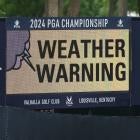
Thunderstorms expected at the PGA Championship

Scheffler unshakeable keeping focus
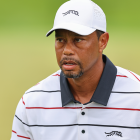
Tiger ejects with pair of triple bogeys

Scheffler shoots into PGA contention, talks arrest

Scheffler arrested, released before Round 2 at Valhalla

PGA worker identified as fatal accident victim

Rahm, Lefty among stars to miss cut at Valhalla
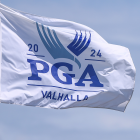
PGA Championship TV schedule, coverage guide

Scheffler to be without usual caddie for Round 3 at PGA

COMMENTS
Titleist are the most played irons by the top 100 on the PGA Tour with 29 using them. Callaway, PING and Srixon irons are each used by 14 with TaylorMade played by 13. PXG irons are chosen by 5 with Wilson used by 4. Ignoring utility irons the most common set up played by 42% of this elite group is 4-iron to pitching wedge.
Mixed-iron setups, as they're called, can help golfers find the best of both worlds. Be careful, though, because there's a danger with mixed sets, too. Since cavity-back irons are designed ...
While Taylor is using a glorified game-improvement iron, most players choose something that toes the line between game-improvement and better-player. Rory McIlroy's TaylorMade P760 cavity-back ...
Blade or cavity-back? What you can learn from the iron setups of the best PGA Tour players By: Andrew Tursky Higgs is more of a feel player than someone who gets lost in launch monitor numbers ...
According to Golf Magazine, amongst the top 50 tour players in strokes gained: approach the green, 44% play cavity-back irons compared to only 26% playing blades. The other 30% play a mixed set. Just thought that was interesting. Always assumed the pros played exclusively blades.
The Legacy Black cavity-back irons are Endo forged from S20C, and they have a unique Vibration Dampening Rubber to enhance sound and feel. Due to their designs, the center of gravity is slightly ...
According to Titleist, 70% of tour players use cavity backs while 30% use blades. Cavity back irons provide increased forgiveness while blades offer more control and a better feel. This is why a lot of tour players have both cavity backs and blade irons in their bags. These numbers are always going to be changing but the main thing to note is ...
The cavity back irons offer a more prominent sweet spot and provide more height on the shot than the blades do. In the past 5-7 years, a trend with PGA tour players has been to have a cavity back or muscle-back irons for the long clubs like the 3 or 4 iron, as the added forgiveness and the additional height make them easier to hit than the blades.
Henrik Stenson at the Players is the most prominent recent example of a tour player using cavity-back irons en route to victory. ... fact is more than 70 percent of players on the PGA Tour use ...
T200 3-iron driving iron, MB irons all throughout the bag except for the 4-iron, [which is a ] cavity back. It was my first set of adult irons, so I was probably 12 when I first got these.
Like all cavity back irons, the reduced side spin makes it more difficult to curve in the air. In summary, this combination of power performance, playability, and feel is unlike any previous Titleist design. Ideal for the ex-blade player now wanting to use forgiveness technology. 3. TaylorMade P770 Irons.
Titleist reports that up to 70% of tour pros use cavity back irons. The remaining 30% use blades. In another report by Golf Magazine, the number of players playing cavity-back is 44%, with only 26% playing irons. ... Many PGA Tour players look for long irons that not only offer forgiveness but also high launch and additional ball speed. Cavity ...
The proof is in the data. If you are curious to see the real difference in performance between blades, cavity backs, and then faster-faced irons, check out the video below featuring Titleist Master Fitter Glenn Mahler going through the results of a fitting with Titleist 620MB, 620CB, T100, and T200 irons. Titleist T Series Iron Fitting with ...
Back in 2014, McIlroy was a full ... Rory McIlroy's irons ahead of the 2024 PGA Championship. (Courtesy GolfWRX) Driver: TaylorMade Qi10 (9 degrees @8.25) ... PGA TOUR, PGA TOUR Champions, and the ...
A survey showed that 26% of PGA Tour players use complete sets of blades, 44% use cavity back irons, and 30% use a mix of cavity back irons and blade irons. Many amateur golfers think the best players only use blade irons. It is not true. We see these two irons still being used with success by golfers. Cavity-backs Irons are designed to be more ...
Posted March 15, 2017. Pros usually travel with blades and the cavity backs, i remember Darren Clarke saying he went with how his ball striking was and in fairness he flushes it. Jordan Speith uses API2 irons, loves a cavity back. Rory has been using blades his whole life- lad.
It turns out that 64 of the top 100 PGA Professionals use only cavity-back irons. However, if you count the pros that use both blades and cavity-back irons within their set, the number increases to 80 out of the top 100. ... On the other hand, Callaway only has four different iron models on the PGA Tour, but 15 players using them. Mizuno and ...
When we looked at the data, we saw an average distance gain for game-improvement irons over players irons of 6.1 yards, with some players seeing as much as a 16-yard edge in carry distance.
Kevin Na plays a set of cavity-back Callaway Apex Pro 16 irons (5-PW). Getty Images If you're good enough to own a PGA Tour card, then you possess the chops to handle a traditional blade iron.
The subsequent interest of professional players in the cavity back irons, Ping is a global leader in golf clubs, and it shows on the PGA Tour. ... Of the 24 PGA Tour players that use their irons, many South African players feature, such as Branden Grace, Christiaan Bezuidenhout, Dylan Frittelli, Erik Van Rooyen, and prominent international ...
The JPX 923 Tour irons are our favorite pure "player" cavity back iron from Mizuno and a solid step up from the JPX 921 Tour irons for me. What we like: ... Yes, quite a few PGA pros use cavity back irons - Jordan Spieth, Patrick Cantlay, Xander Schauffele, Sam Burns, Jon Rahm, etc.
Around 26 percent of PGA Tour players use complete sets of blades. Roughly 44 percent game cavity back irons, while the remaining 30 percent use a mix of muscle-back and cavity-back clubs. At the 2010 Players Championship, 26 golfers competed using a complete set of blades, compared to only 13 golfers at the 2020 tournament just 10 years later.
Mizuno JPX 923 Hot Metal Pro Irons. est $1,099.99. Low Handicappers. Cavity back irons do not often partner with low handicappers, but the Mizuno JPX 923 Hot Metal Pro is a reliable spouse. It delivers solid feedback to analyze where you struck the ball on the clubface and promotes a consistently high launch.
Individual Irons. From $249.99 Sets From $1,749.99. Transform your game with Callaway's premium selection of cavity back iron sets including deep cavity back irons for maximum forgiveness and tour cavity back irons for players seeking the best in precision. Shop all cavity back irons from Callaway and experience the game-changing benefits of ...
Block is the first player of many on the PGA TOUR to bag a set of the mysterious "Proto" irons. Rory McIlroy first switched into a "Proto" 4-iron at the Valero Texas Open , and Collin Morikawa ...
"As you can imagine, when I drive the ball well, I have a lot of wedges in my hand," Rory said here at Valhalla Golf Club before the 2014 PGA Championship. "I wasn't being efficient enough.
The PGA of America announced back in 2021 that it would allow the use of distance-measuring devices in its three professional major championships - PGA Championship, KPMG Women's PGA Championship and KitchenAid Senior PGA Championship - starting that year. The devices made their first appearance at the 2021 PGA Championship at Kiawah Island Golf Resort's Ocean Course in South Carolina.
Players remained on the golf course, and it proved to be a crucial Moving Day as 36-hole leader Scottie Scheffler shot 73 while Brooks Koepka (the ultimate winner) shot the round of the day with a 66.
A noted blade user who just recently started to embrace cavity-back irons, Scott found many of Srixon's more forgiving options to be a great fit at the top of the set — ZX MKII (3) and ZX5 (4 ...